






USPS 382-600/ISSN#00287121
2340 Frederick Douglass Boulevard
New York, New York 10027
(212) 932-7400 / FAX (212) 222-3842
By ARIAMA C. LONG Amsterdam News Staff
Executive & Investigative Editor – Damaso Reyes Damaso.Reyes@AmsterdamNews.com
Managing Editor – Kristin Fayne-Mulroy KFM@AmsterdamNews.com
Digital Editor - Josh Barker
Josh.Barker@AmsterdamNews.com
Karen Juanita Carrillo
Karen.Carrillo@AmsterdamNews.com
Shannon Chaffers
Shannon.Chaffers@amsterdamnews.com
Ariama C. Long Ariama.Long@AmsterdamNews.com
Tandy Lau
Tandy.Lau@AmsterdamNews.com
DISPLAY & DIGITAL ADVERTISING CONSULTANT
William "Bill" Atkins (212) 932-7429 William.Atkins@AmsterdamNews.com
DIGITAL, BRANDED CONTENT & HYBRID ADVERTISING CONSULTANT
Ali Milliner (212) 932-7435 Ali.Milliner@AmsterdamNews.com
LEGAL, LLC & CLASSIFED ADVERTISING CONSULTANT
Shaquana Folks (212) 932-7412 Shaquana.Folks@AmsterdamNews.com
CIRCULATION / SUBSCRIPTION
Benita Darby (212) 932-7453 Benita.Darby@AmsterdamNews.com
The AmsterdamNewsassumes no responsibility for the return of unsolicited manuscripts or photographs. Photographs and manuscripts become the property of The Amsterdam News. Published weekly. Periodicals Class postage paid at New York, N.Y. POSTMASTER: Send address corrections to NYAmsterdamNews,2340 Frederick Douglass Blvd., New York, NY 10027.
MAIL SUBSCRIPTIONS INFORMATION
Mayor Eric Adams has long boasted about New York City’s thriving economy and breaking the all-time high jobs record for the eighth time since the start of his administration. Commendable. However, he doesn’t often mention the city’s persisting disparities among Black unemployment rates and gender pay inequities.
“As a result of the Federal Reserve’s interest rate increases, job growth has slowed across the U.S. over the past year and a half. Against that backdrop of slower job growth, NYC’s private job growth was slightly higher than the nation’’s overall last year,” said James A. Parrott, Ph.D., a senior advisor and senior fellow at the Center for NYC Affairs at the New School.
It has now been five years since the initial COVID outbreak in February 2020. By mid2023, the city’s private sector had fully recovered from the steep job loss incurred early in the pandemic, according to the City Comptroller’s office in its monthly Economic and Fiscal Outlook snapshot. Kids are back in school — and will never have another real snow day, thanks to the handy pivot to virtual classes. Commuters have gone back to using the subways, and tourists have returned to walk (frustratingly slowly) through the city’s streets once more.
The city currently has about 4.1 million (4,151,400 annual average) private sector jobs — that is, positions such as home health aides and hospital staff, high-wage

finance positions, and professional services. In the aftermath of COVID, the city lost more than 900,000 jobs in two months, according to the New York City Economic Development Corporation (NYCEDC). There’s been significant growth in the city’s tech, life sciences, and green economy fields. The city is also pushing to be a leader on the Artificial Intelligence (AI) and startup front, which will be key in developing AI research and scaling AI-related businesses.
The good news: According to the latest NYCEDC State of the Economy report, the city is indeed seeing record high levels of employment and labor force participation, re-
mains the nation’s top destination for young talent, and is seeing unemployment rates trend downward for all demographics.
At a press conference last week, Adams kicked off “Jobs Week,” again mentioning the all-time high jobs record. He announced the Race for Space initiative, which includes a pilot program for relocating jobs to the city, expanding support for international companies, and upgrading aging offices to highquality office spaces. Most of these efforts are aimed at addressing commercial vacancies, usually in Manhattan, that are left over from the pandemic.
See NYC JOBS on page 33

By TANDY LAU
Amsterdam
News Staff, Report
for
America Corps Member
Kevin Richardson never got to graduate from Bronx Preparatory Charter. A wrongful conviction from the Central Park jogger case famously stole his youth as a teen. Yet the school, which conferred an honorary degree to him in 2017, welcomed the Harlemite as the big man on campus for a stu-
dent forum last Friday, Feb. 7.
Friday’s remarks kicked off his “know your rights” campaign called Courage, Perseverance, and Resilience, or CPR for short. Richardson intends to take the program on a tour across the nation.
“It’s basically to teach kids about their civil rights and to teach them how to navigate through the system and society,” he said before the event. “So I’m gonna give some tips about policing, how it is to deal with police
and how to go about life as a young adult.” He dips into personal experience as one of the the so-called Central Park Five, Black and Brown teenagers wrongfully incarcerated for the rape of white jogger Trisha Meili. A bevy of institutional failures from police misconduct to racially biased media coverage all contributed to the injustice. DNA evidence ultimately cleared their names and implicated the actual assailant
By TANDY LAU Amsterdam News Staff, Report for America Corps Member
Supreme Hassan’s homecoming to New York City meant reuniting with family after three decades in MCI-Norfolk prison in Massachusetts. But he also looked forward to meeting his new tribe — his cohort from the REFORM Advocacy Institute, a training program for prospective criminal justice reform advocates. For six weeks, they met virtually from all over the country before culminating in an expensespaid New York City meet-up.
“We connected, our energy permeated these screens and you could feel the emotional connection,” said Hassan. “We could feel the desire to not perform, but serve.”
The program stems from justicereform advocacy group REFORM Alliance, which formed in 2019 to push back against draconian parole and probation laws following the reimprisonment of rapper Meek Mill over a motorbike stunt video. But not every returning citizen boasted a public persona with proponents like billionaire Robert Kraft. Over the past six years, the organization has played
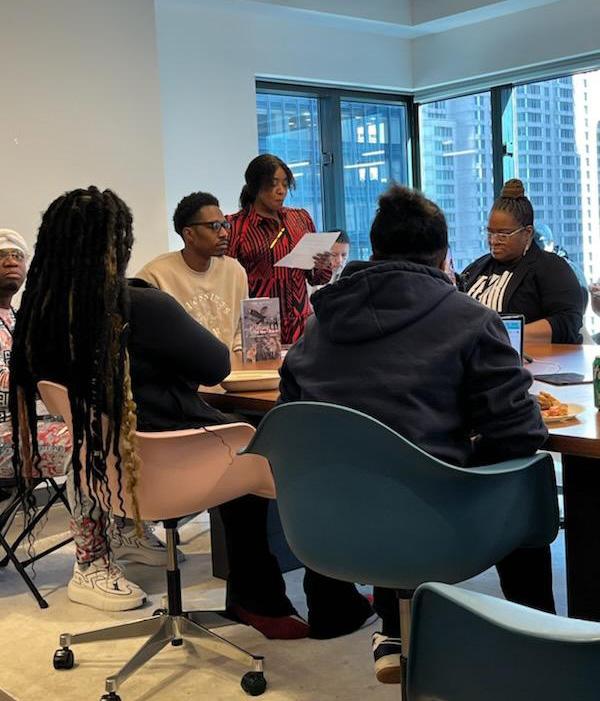
a hand in passing criminal justice reform bills across the country. But much more work remains. The REFORM Advocacy Institute would bolster their numbers by equipping those closest to the issue, like former incarcerated individuals, with the skills to advocate for themselves. The certification program, headed by for-
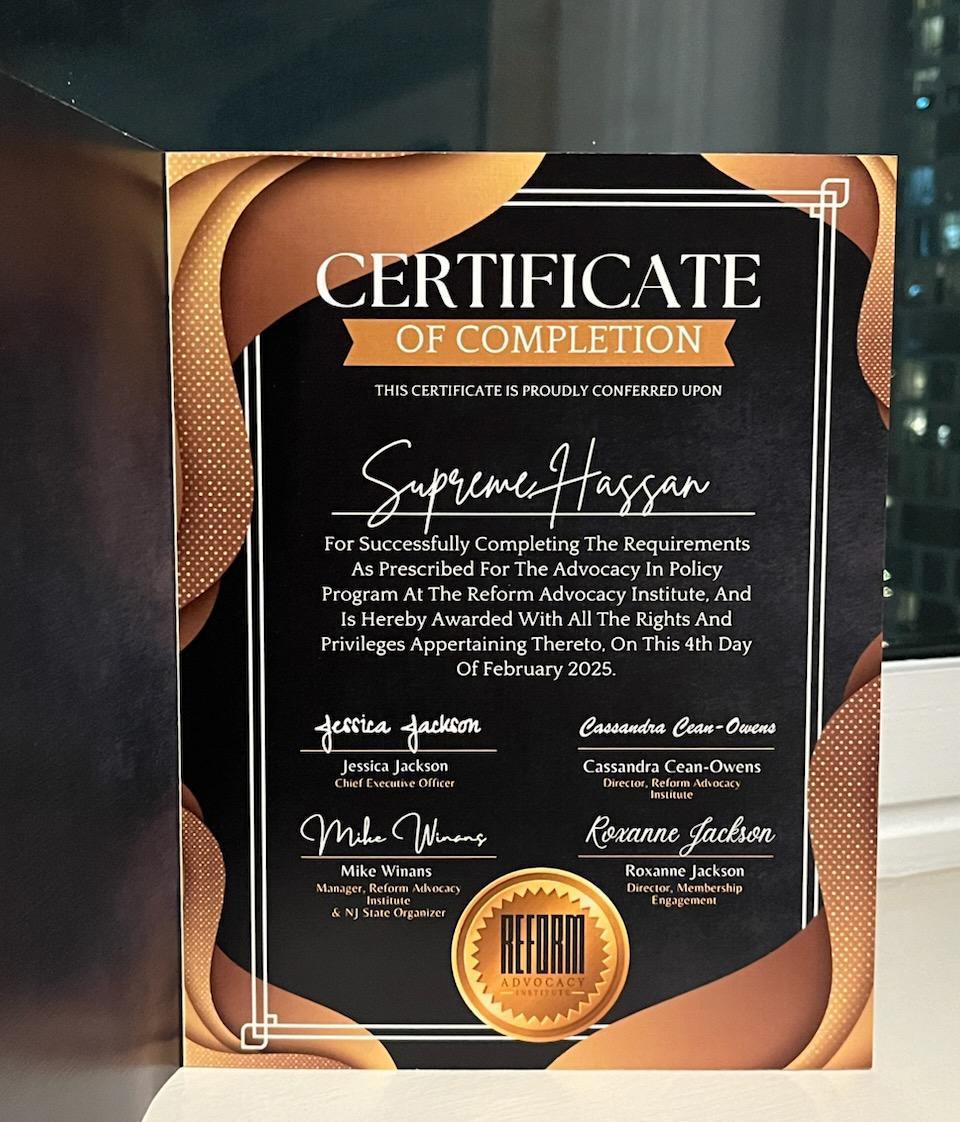
merly incarcerated attorney Cassandra Cean-Owens, is now preparing for a third incoming class.
“We allow our participants to tell us what [they are] passionate about.” said Cean-Owens “What change do you want to see in the criminal justice system? And we provide them with the resources to
do that by teaching them how to use their story so individuals can see [a] more true narrative of what this criminal justice system is about and how it’s really hurting and harming, as opposed to helping.”
Training centers around navigating both the grassroots organizing world and political sphere to
push better policy regarding returning citizen rights. Participants are overwhelmingly but not exclusively formerly incarcerated or justice impacted. During the classes, elected officials and lobbyists help them communicate their personal stakes to legislators.
Cean-Owens says the programming helps enrollees approach a grand assortment of officials, as she herself was released through the CARES Act, which President Donald Trump signed into law in his first term despite his stances as tough-on-crime. Yet she herself faced obstacles after incarceration, including legal barriers from traveling to the Bronx from Long Island for a baby shower.
The goal is to demonstrate how such perfunctory crackdowns on individuals on parole and probation stemming from mass incarceration do not make society safer. And such programming coincides as toughon-crime policy is making a comeback both locally and nationally.
“You have the Black and Brown communities that were decimated, and with all of this happening, you’re going to see a greater insta-
See REFORM ALLIANCE on page 25
By ARIAMA C. LONG Amsterdam News Staff
With all the controversy swirling around New York City elections in 2025, it’s easy to miss that Manhattan District Attorney (DA)
Alvin Bragg is running to keep his position. He’s taken on some high-profile cases while in office, including newly minted President Donald Trump.
“District Attorney Bragg understands that safety and justice require investment in our youth and communities to prevent violence and crime before it happens and break the cycle of trauma,” said Rebecca Fischer, executive director of New Yorkers Against Gun Violence, who recently endorsed Bragg’s re-election campaign.
“Empowering our young people through leadership and engagement in their own communities is an evidenced-based approach to reducing gun violence.”
Bragg won his first term in office in 2021, fending off almost 10 candidates looking to replace former
DA Cy Vance in the primary. He is the first Black person to serve in the role, and has faced a deluge of conservative criticism for being a more progressive figure when it came to crime reduction and combating gun violence. He referred to his approach as “restorative justice,” which has been tested over the years.
For instance, Bragg’s office prosecuted Daniel Penny for the death of unhoused Black New Yorker Jordan Neely in 2023, but failed to convict. Penny was found not guilty of negligent homicide, despite Bragg pointing to evidence from “medical records, videos, bodycam footage, and testimony from [more than] 30 witnesses.”
During his term, Bragg increased resources for gun trafficking enforcement, launched the Gun Violence Prevention Community Initiative to strengthen community bonds among Manhattan youth, partnered with Mayor Eric Adams to fight against the scourge of “ghost gun” firearms, worked on state legislation to make the
manufacture of 3D-printed guns and gun parts illegal, and convinced YouTube to stop hosting ghost gun tutorials that targeted kids. Bragg’s campaign also said he has increased the number of gun cases that his office pursues, as well as invested in gun prevention and gun buyback events, reducing shootings in Manhattan by 45% since he took office.
According to NYPD’s crime data, Manhattan shooting incidents and deaths are down in the borough compared to last year. However, other issues, like rape or crime in public housing developments, are up.
Bragg has the backing of the Harlem community from which he hails, as well as anti-violence advocates such as Jackie Rowe-Adams, founder of Harlem Mothers & Fathers S.A.V.E.; Nick Suplina, senior vice president of law and policy at Everytown for Gun Safety; and Hudson Munoz, executive director of Guns Down America.
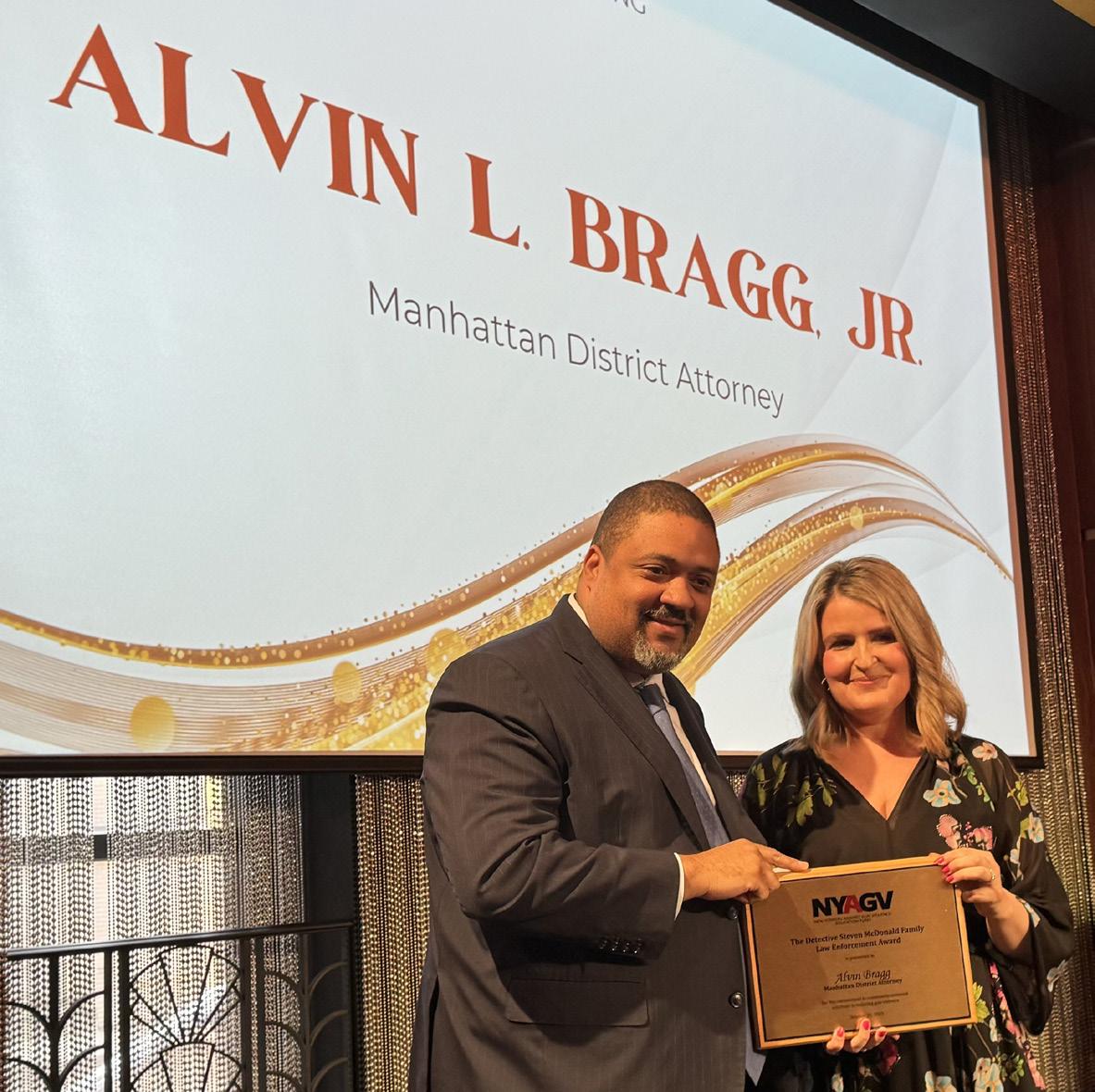
By TANDY LAU
Amsterdam News Staff, Report for America Corps Member
Justice is proverbially blind, but advocates fear defendants in New York will once again be in the dark with evidence-sharing until the last minute. Recent amendments proposed by Gov. Kathy Hochul toward discovery reform sparked the formation of an Alliance to Protect Kalief’s Law last month. A website for the campaign launched earlier this week.
The coalition members say Hochul’s recent proposals would remove meaningful pressure on prosecutors to fork over all evidence indiscriminately and foster an end to openfile discovery in the state. Meanwhile, the governor and allied prosecutors say the changes to discovery law intend to close loopholes and prevent dismissals before a defendant's guilt or innocence is in question.
Named after Kalief Browder, the Black New Yorker who took his life after three years on Rikers Island awaiting trial for a stolen backpack, the New York State provisions passed in 2019 repealed old evidencesharing laws and mandated prosecutors share materials in a timely manner without a defense attorney having to request them. Discovery, or evidence-sharing, is a formal legal process where parties in a case exchange information for presentation at trial. For criminal defendants, those materials usually provide a clearer idea about whether to take a plea deal (usually for less
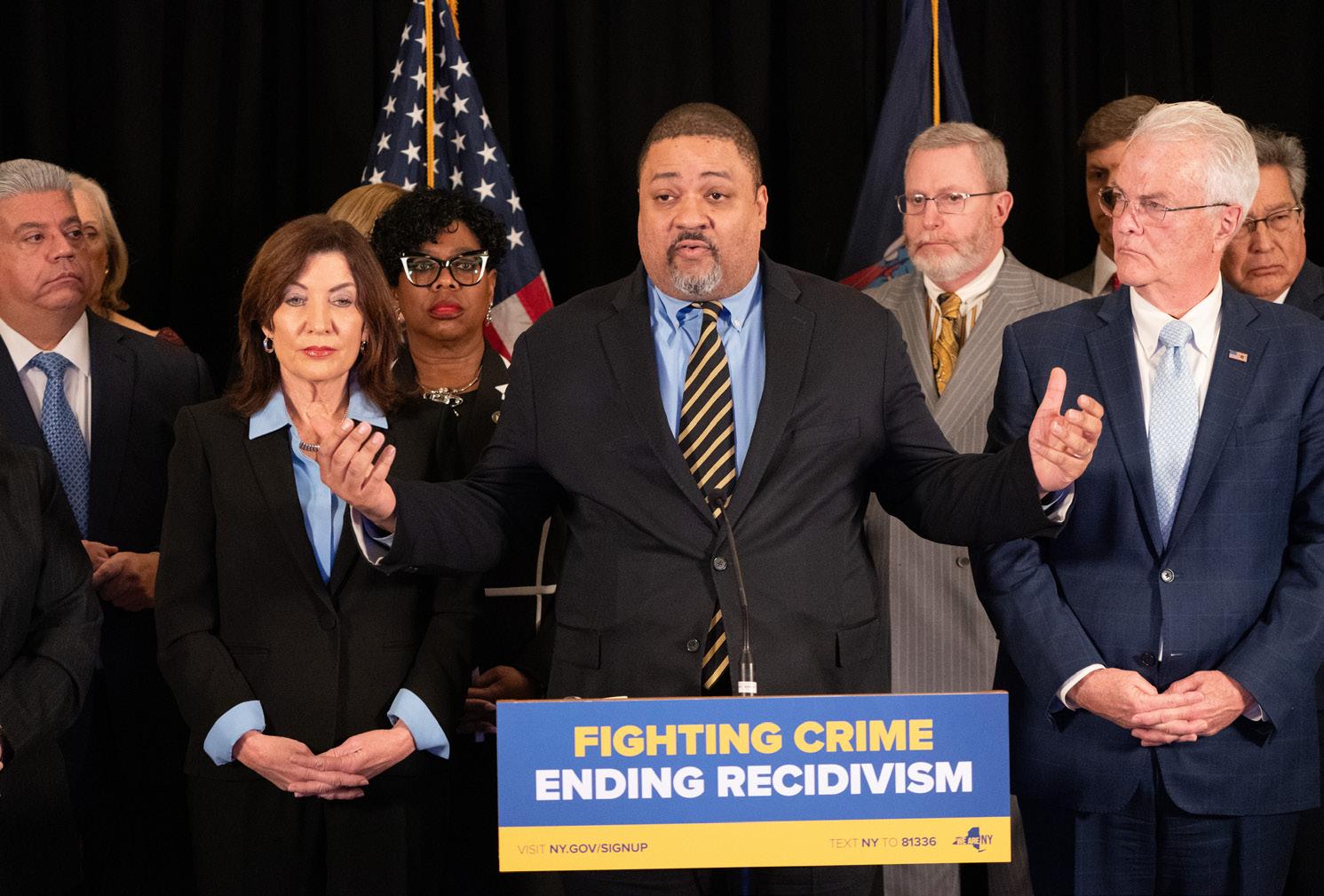
severe penalties) or fight the case at trial.
“The reforms enacted in 2020 ensure that accused New Yorkers have access to all evidence, promoting transparency, preventing wrongful convictions, and combating mass incarceration,” said Kalief’s brother Akeem Browder in a statement. “These laws are about leveling the playing field and upholding the fundamental right to due process. Rolling back these protections would inevitably lead to more New Yorkers suffer-
ing the same fate as my brother.”
While a litany of failures in the criminal justice system led to Browder’s death at age 22, the lack of discovery prevented any opportunity to get the case dismissed before his trial, which he did not receive for three years.
A “blindfold” era predates Kalief’s Law, regarded by many criminal justice advocates as a time when New York state’s discovery laws were among the four worst in
the country — back then, witness statements and police reports could be withheld by prosecutors from defendants until the day of trial.
Consequently, New Yorkers could be pressured to plead guilty to avoid more prison time and return to their lives. Pleas under the “Blindfold Law” meant no access to discovery since the cases never went to trial. Advocates presume at least some defendants were innocent despite pleading guilty.
“Under the way the discovery law was before, there’s no question that [it] lends itself to wrongful convictions, because evidence is not going to be turned over in time,” said attorney Jeffrey Deskovic. “It’s going to be a document dump at the end.”
Exonerees and defense lawyers largely make up the Alliance to Protect Kalief’s Law, including Deskovic, who is both. He recounts receiving more access to evidence when suing over his wrongful conviction than the original criminal trial that led to his false imprisonment. The state now boasts arguably the most transparent discovery laws in the country.
While proponents tout Kalief’s Law as an unfettered success, prosecutors say they are now beleaguered with tighter deadlines that contribute to an uptick in New York City dismissals. So far, most of the efforts claim to target loopholes that are bogging down the discovery process. The District Attorneys Association of the
By ARIAMA C. LONG Amsterdam News Staff
After months of cozying up to Republicans, New York City Mayor Eric Adams may be free and clear: The U.S Department of Justice (DOJ), under the Trump administration, is reportedly getting the charges dropped on his federal indictment.
On Monday, Feb. 10, prosecutors in Manhattan were told to drop federal corruption charges against Adams in a memo to acting U.S. Attorney for the Southern District of New York Danielle Sassoon. Former Manhattan U.S. Attorney Damian Williams, who initially brought the case against Adams, resigned before Trump took office.
The memo, from Acting Deputy Attorney General Emil Bove, said that prosecutors are “authorized by the Attorney General, to dismiss the pending charges in United States v. Adams, No. 24 Cr. 556 (SDNY) as soon as is practicable,” and that the matter will be reviewed by the newly confirmed Manhattan U.S. Attorney after the November 2025 mayoral election.
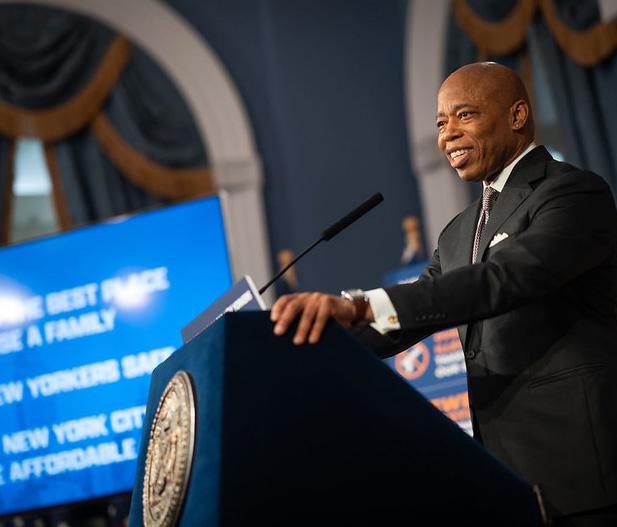
According to the memo, “The Justice Department has reached this conclusion without assessing the strength of the evidence or the legal theories on which the case is based, which are issues on which we defer to the U.S. Attorney’s Office at this time.”
Bove wrote that the “timing of the charges” and the actions of Williams “threatened the integrity of the proceedings.” He added that the DOJ is not offering to “exchange dismissal of a criminal case for Adams’s assistance on immigration enforcement.”
Adams was indicted on a five-count felony charge, including bribery, conspiracy, campaign finance violations, seeking and accepting improper gifts, and donations from a foreign national. His trial was to begin in April of this year. If convicted, he would face a maximum sentence of 45 years in prison.
In a short speech streamed from City Hall on Feb. 11, where there was no press and no questions taken, Adams said that he “never broke the law” or put any “personal benefit” above his duties to the city. He restated his innocence, quoted See ADAMS INDICTMENT on page 36
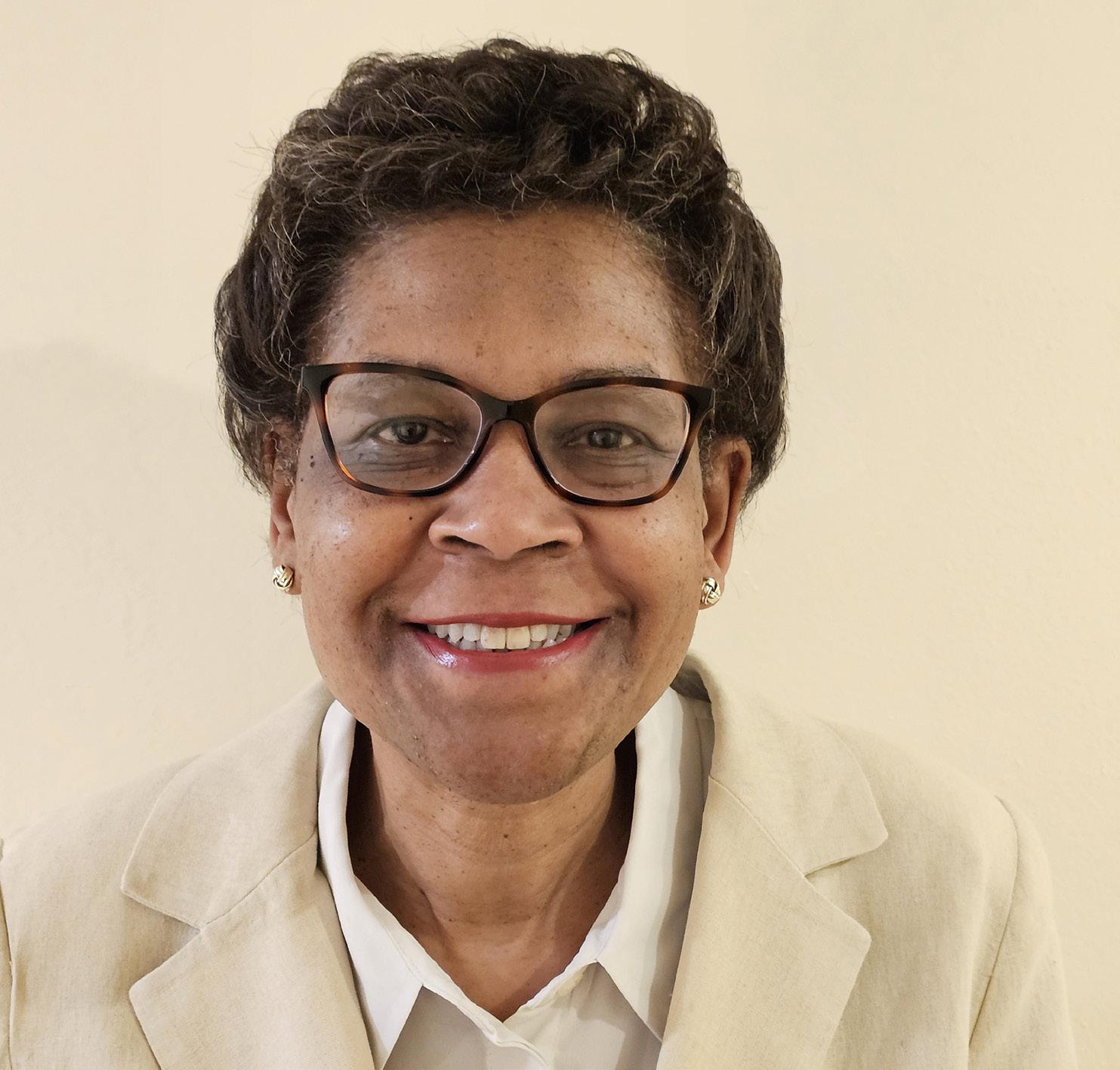
New Yorker
BY LEYRIAN COLÓN SANTIAGO Special to the AmNews
The health disparities that predominantly affect Black Americans and her family’s legacy in human rights activism were the driving forces for Dr. Jessie Fields to transform the lives of hundreds of patients through medicine, art, and social justice. She has been advocating for equal access to healthcare and serving the community through medicine since 1985.
Fields is a Harlem-based physician who grew up in Pennsylvania. From a very young age, she knew her calling would be to transform disadvantaged communities through her work as a doctor.
“I could see the relationship between the conditions that people were growing up in, the conditions people lived in — economic conditions, lack of quality education, poverty, oppression, discrimination,” Fields said in describing how her own family environment motivated her to pursue a career in medicine. “I knew that those things affected health, and I wanted to expand my career as a physician and be able to impact the community broadly.”
After being board-certified in internal medicine, Fields moved to New York in 1991 to work as a primary care physician for the Health Insurance Plan of New York and then for the 32-BJ Union Health Center. In 1994, she became affiliated with North General Hospital in Harlem and remained on the voluntary staff there until the hospi-
tal closed in 2010.
Fields also leads the initiative Creating Our Mental Health, which, with workshops with therapists and performance activists from the East Side Institute, uses poetry to build social connection and bring history and emotion together in the group-building process.
The workshops led by Fields, held at refugee centers, residential facilities, and food banks, aim to help communities gain tools for managing their emotions.
For Fields, medicine and community service have always been interconnected.
“I do all these different things, but I’m the same person doing them. However, for me, human health and growth are very connected,” said Fields about her work as both a doctor and community organizer. “I see patients with diabetes, hypertension, asthma, and other infectious diseases and they come from communities where I see racial health disparities directly.”
Throughout her career as a doctor, Fields has inspired young people interested in the field of medicine to stay connected with communities and listen to their needs. Since 2014, she has served as an educator for the course “The Art and Science of Medicine” and mentored third-year medical students at Mount Sinai. She also works in youth development programs for underserved communities, helping young people interested in pursuing careers in medicine through the All Stars Project Development School for Youth.
By David R. Jones, Esq

President Trump’s first month in office has been a horrifying validation of the fears many of us held at the prospect of the former president coming back into power.
Predictably, he wasted no time making good on his campaign promises: from mass deportation of undocumented immigrants without due process, the targeting “sanctuary cities” and imposing hefty tariffs that will raise prices on domestic goods to dismantling federal agencies and attempting to purge the federal workforce of anyone who is not a loyalist. To be sure, the president’s actions are a precursor to societal fracture, chaos and suffering for large numbers of Americans.
Then there is the President’s executive order terminating “Diversity, Equity and Inclusion or DEI” programs. Higher education has long served as a powerful engine of social mobility, creating a more level playing field and opening pathways to economic security, particularly for Black and brown communities. By attacking DEI programs, Trump is not only undoing decades of progress but also misleading the public with the false narrative that these initiatives lower standards—when in fact, they expand opportunities, promote excellence, and build a more inclusive and equitable society.
No doubt, the next four years of this presidency will test the country’s resolve and fidelity to democratic values and principles of equality. Of course, Black people have overcome greater threats than Donald Trump—and we will again, drawing on the courage and resilience our ancestors showed in the face of systemic racism, violence and discrimination. Still, we’ve seen glimmers of hope: advocates and state attorneys general are mounting constitutional challenges to executive orders that violate the separation of powers, and federal judges are blocking Trump’s attempts to push the limits of his authority. Just as importantly, state leaders have a crucial role to play, using their power to counteract harmful federal policies and protect civil rights at the local level.
In New York, we are counting on leaders to step up to mitigate the impact of destructive policy and regulatory measures. Of particular concern are the steps the White House could take to significantly impact New York’s 2.4 million student loan borrowers.
With the president threatening to shut down the Department of Education (USDOE), reduce its workforce and granting Elon Musk access to borrower data, there is great uncertainty around the administration of Title VI programs, including student loans, and the potential for disruptions and security risks. The dismantling of the USDOE would weaken protections for student loan holders, including critical oversight of companies that manage loans.
During Trump’s first term, a report by the USDOE’s Inspector General found that the department rarely held loan servicers accountable for instances of noncompliance with federal loan servicing requirements resulting in consumers losing money. The president also wants to gut the Consumer
Financial Protection Bureau (CFPB), which protects consumers from unfair, deceptive and predatory financial practices.
Federal aid programs such as Pell Grants, workstudy and subsidized loans which provide essential financial support for low-income college students, could also be at risk.
Under Governor Hochul, New York has expanded resources for student loan borrowers and made it easier for them to access the help they need to manage their loans and protect their financial futures. The governor’s support for EDCAP –the-first-in-the-nation student loan consumer assistance program – ensures that borrowers are not left to fend for themselves amid policy shifts and economic challenges. Her commitment to higher education access and affordability underscores the urgent need to sustain and expand programs like EDCAP. [Full Disclosure: EDCAP is operated by the Community Service Society of New York.]
The threat of a diminished Department of Education and potential instability in federal student loan management underscores the imperative to fund programs like EDCAP. Without dedicated support, millions of borrowers could face misinformation, lost records, and confusion about their repayment options. Many borrowers already struggle with unaffordable monthly payments, making repayment extremely tight.
Outside of Public Service Loan Forgiveness, options for forgiveness remain slim, leaving borrowers with little relief. EDCAP’s services are crucial in helping individuals navigate these challenges and avoid financial distress. Given the looming changes, we urge borrowers to take proactive steps to secure their student loan records:
• Log into StudentAid.gov to take screenshots of your loan dashboard, including IncomeDriven Repayment (IDR) and Public Service Loan Forgiveness (PSLF) progress, and download your “My Aid Data” file to preserve a complete history of your federal loans.
• Download records from your loan servicer to maintain a personal archive of your payment history and correspondence.
• Update your StudentAid.gov password and enable two-factor authentication for enhanced security.
• Consider a credit freeze with major credit bureaus to protect against unauthorized access or fraud. It is free.
• Try to save as much as possible to build a financial cushion and keep your credit in good standing.
• Do not ignore your student loans —check the minimum payment amount and include it in your monthly budget.
Unlike the President, New York’s Governor and State Legislature are looking out for the student loan borrowers. We applaud them.
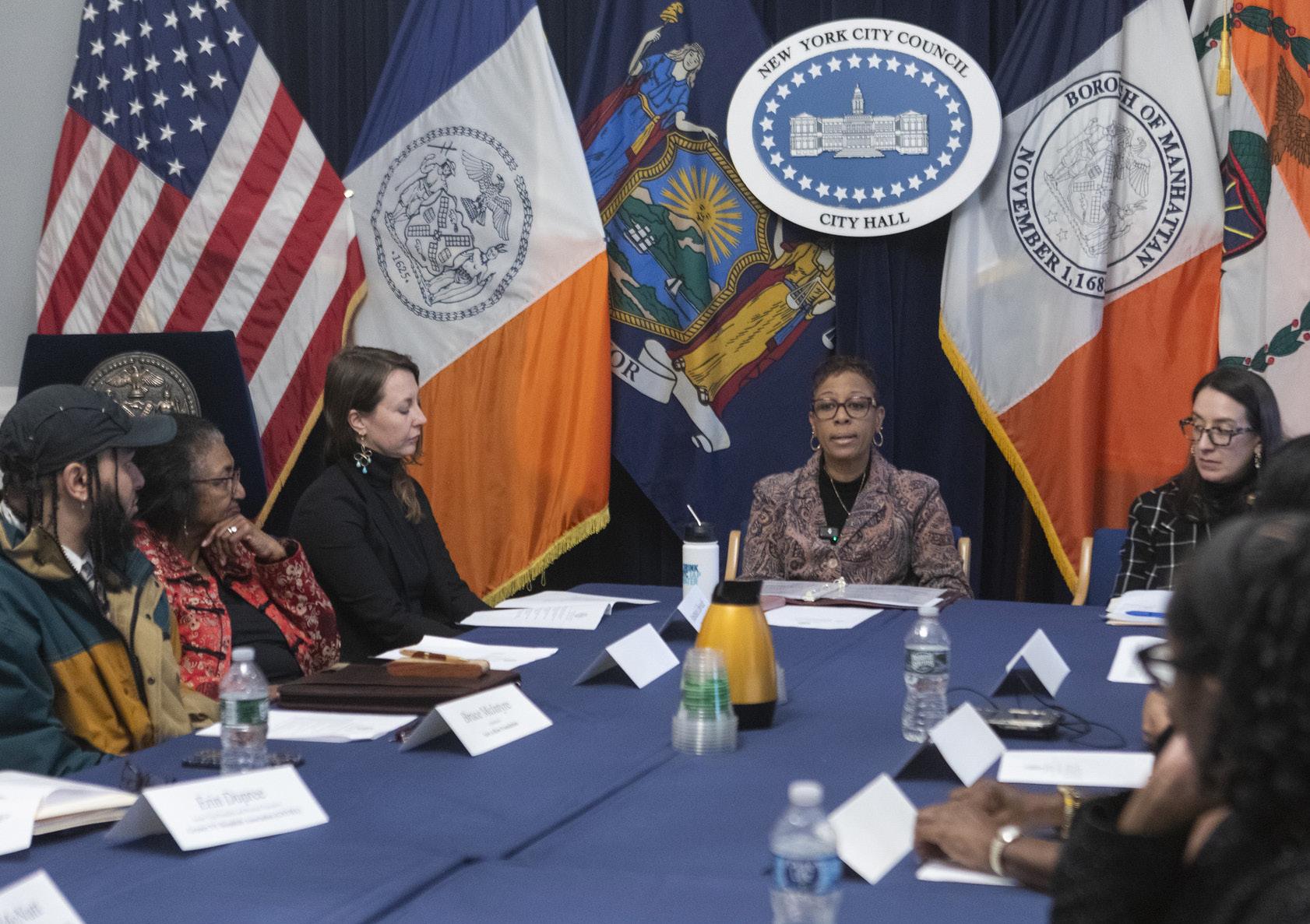
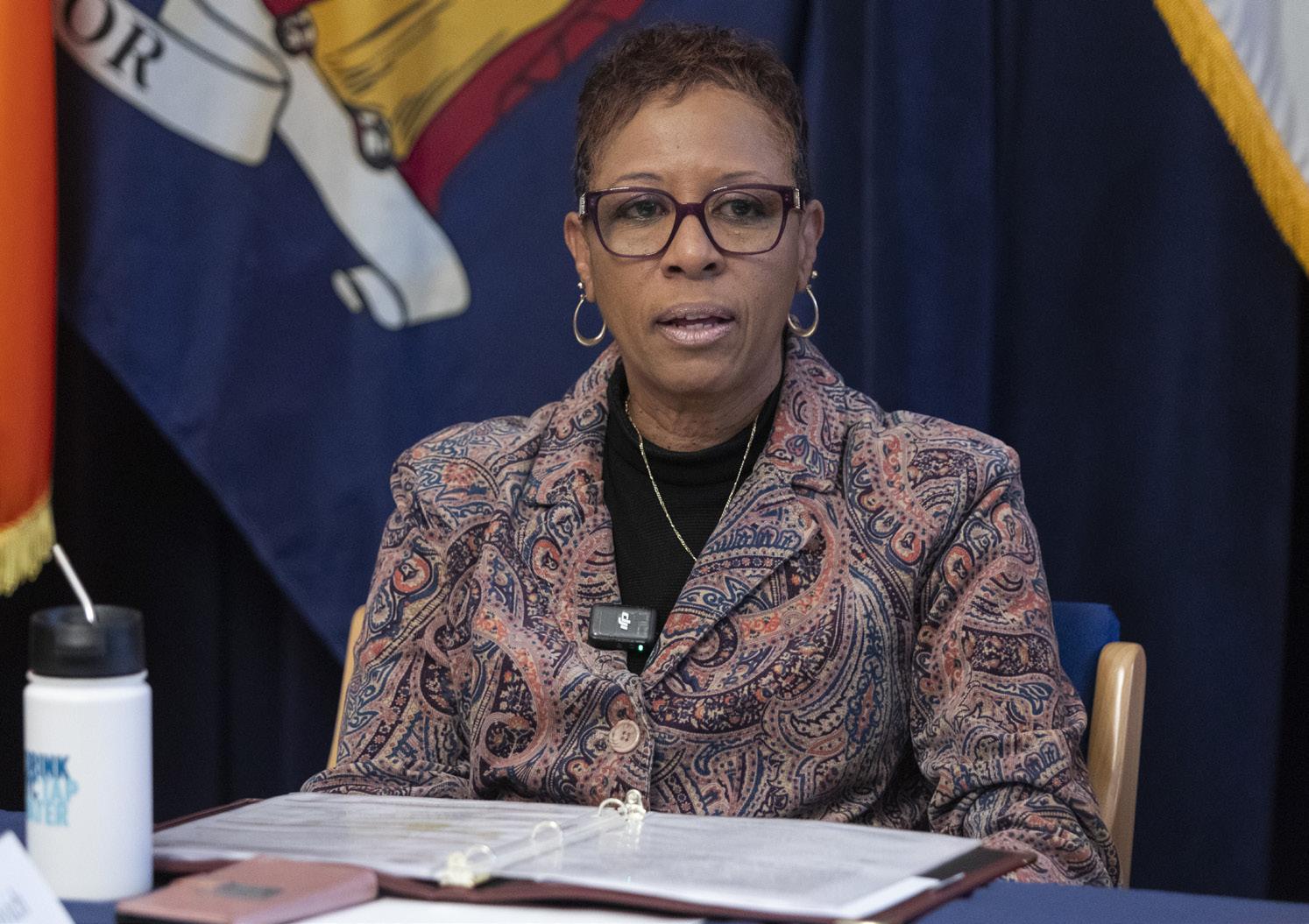
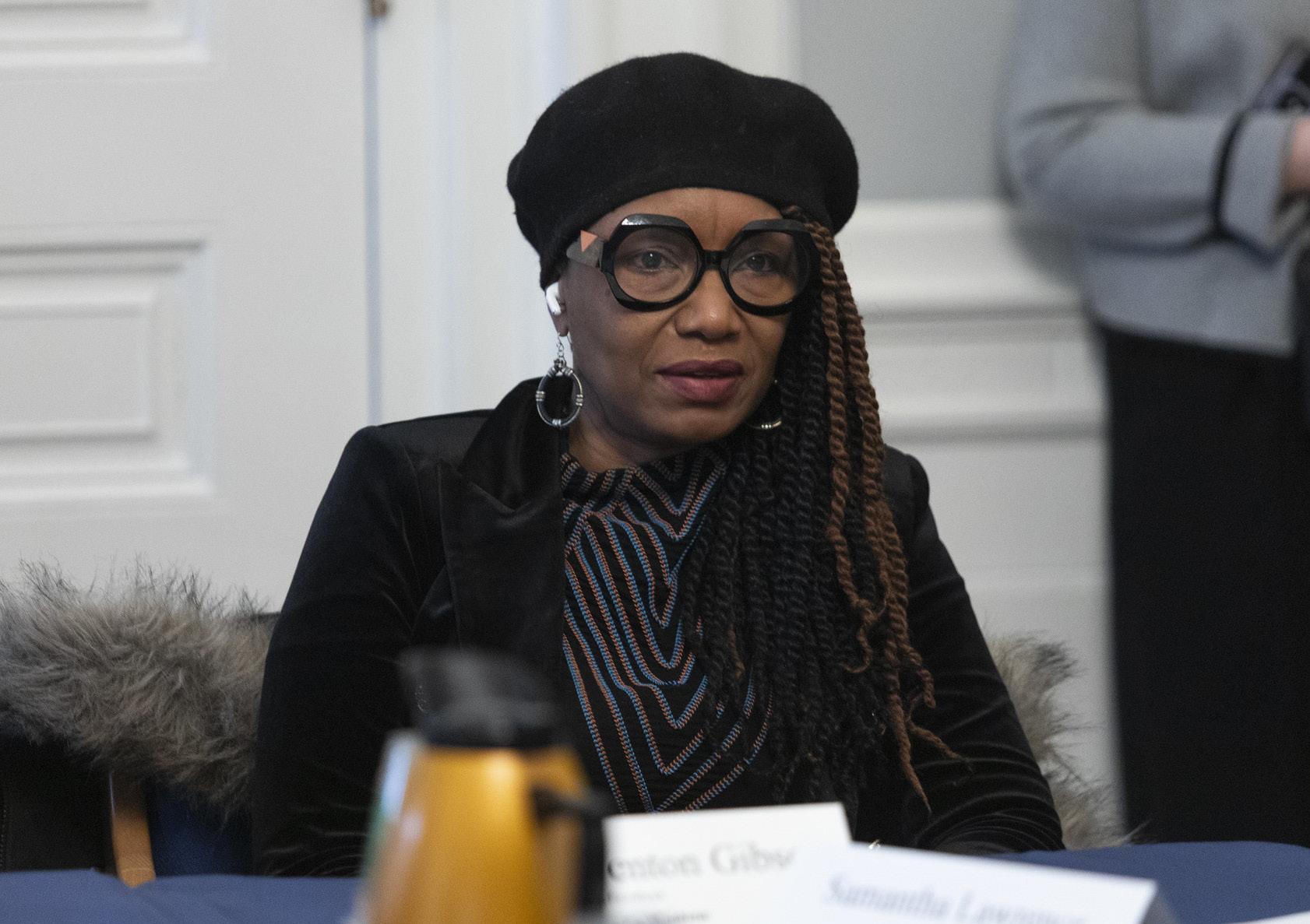
By ARIAMA C. LONG Amsterdam News Staff
As the rates of maternal mortality remain staggeringly high in New York City, especially among Black and Latino women,. City Council Speaker Adrienne Adams recently convened a group of advocates and city leaders to move the needle on this crisis.
“It’s so critical to keep it top of mind for everyone,” said Adams.
Bevorlin Garcia Barrios, 24, was an example of this crisis: She was the third woman of color to die at Woodhull Hospital in BedStuy, Brooklyn, since 2020. Despite alerting medical staff about experiencing pain and symptoms, she was sent home. She returned days later and was finally admitted when her symptoms worsened. However, her case wasn’t initially treated as an emergency. She later died after having an emergency C-section.
In general, between 50 and 60 women and birthing people lose their lives during pregnancy or within a year from the end of pregnancy. Black New Yorkers are six times more likely to die of pregnancy-related causes compared to white New Yorkers, according to city data. Black and Hispanic women are also more likely to have a cesarean delivery (C-section) than white women, even when considered “low-risk.”
Shortly after Barrios’ death, Adams gave a fiery speech about the persistence of maternal mortality, calling for the city to do more to combat the issue. “We are failing women during one of the most vulnerable periods of their lives,” she said. “As a society, we accept maternal mortality as an unfortunate casualty when,in fact, a majority of deaths could have been prevented with appropriate care and attention. These deaths are not accidents. They are a disturbing pattern of injustice.”
Adams spoke about her own mother’s fraught experience when pregnant with her. Her mother had several false alarms, said Adams, so the nurses dismissed her symptoms. She eventually gave birth to Adams “alone, on a gurney, in [a] corner of Elmhurst General Hospital.”
In an interview with the Amsterdam News, Adams said that story resonates even more with her now that she is a mother and grandmother herself. She has one biological daughter, from her first marriage to her late husband, whom she delivered naturally, and has raised three stepchildren. “I experienced gestational diabetes during my pregnancy. I had a very stressful pregnancy, actually, because I got married very young ... It was a very stressful time,” she said. “I lived to be sure that she had life. I carried very, very small. I had no appetite. My doctor had threatened to put me on IV fluids … but she was born at a normal weight because that’s how great God is.”
It should be noted that the city and state have made some progress on the maternal mortality front. Previous city health department data indicates that from 2011 to 2015, the mortality rate and racial disparity was slightly higher: . Black women were eight times more likely to die of pregnancy-related causes than white women back then.
In 2022, Brooklyn Borough President (BP) Antonio Reynoso launched a multilingual maternal health campaign, started a task force, and allocated his entire $45 million for the capital budget toward stateof-the-art birthing centers in Brooklyn’s safety net hospitals. Mayor Eric Adams implemented a citywide expansion of doula and midwifery programs. The same year, Assemblymember Rodneyse Bichotte Hermelyn, who is also Brooklyn’s Democratic Party boss, began pushing at the state level for more maternal health legislation due to her own pregnancy complications. Last year, Governor Kathy Hochul launched the first statewide paid prenatal leave policy, which gives workers the ability to take time off from work for any pregnancy-related medical appointments.
According to the World Health Organization (WHO), the most common and direct causes of maternal injury and death are excessive blood loss, infection, high blood pressure, unsafe abortion, and obstructed labor. Women are particularly exposed to these during and after C-sections, which run the inherent risks of surgery, maternal morbidity and mortality, and adverse neonatal outcomes. Indirect or underlying causes include anemia, malaria, and heart disease. However, most maternal deaths are preventable with “timely management by a skilled health professional working in a supportive environment,” said WHO. Yet with all the awareness and initiatives, Black women are still dying during and after childbirth in 2025.
“We have to be honest about it: It’s racism,” said Speaker Adams. “This crisis is preventable and we can’t accept it as inevitable. We have to act with greater urgency through coordinated action.” She waid the committee could discuss and explore other contributing factors to Black maternal mortality that stem from systemic bias, such as unnecessary or emergency C-sections, which are all the more egregious considering that the procedure was “perfected” by experimenting on enslaved Black women’s bodies without anesthesia in the late 1800s. She added that the procedure is costly and takes much longer to recover from.
This past Thursday, Feb. 6, Speaker Adams held the first convening of the Council Maternal Health Steering Committee at City Hall in an effort to get all of the city’s leaders and maternal health advocates in the same room and on the same page.
See MATERNAL CRISIS on page 31
BY RAYMOND FERNÁNDEZ Special to the AmNews.
Signs were waved, chants spoken, and heartfelt testimonies were shared in Union Square as hundreds of New Yorkers gathered to protest hospitals in the city halting appointments for people under the age of 19 seeking gender-affirming care. Earlier this month, families of patients told Hellgate that NYU Langone had canceled their appointments. The decision follows Trump’s Executive Order threatening to withhold federal funding from hospitals providing gender-affirming treatment for ‘minors.’
In its three weeks back into office, the Trump administration has issued several executive orders that target transgender and non-binary individuals. The new measures are now beginning to have a more direct impact on the lives of transgender and non-binary people living in the state.
In 2023, New York Governor Kathy Hochul signed a “safe-haven” law to protect trans youth receiving gender-affirming care in the state. Since then, New York has continued to expand anti-discriminatory laws aimed at protecting the LGBTQAI+ community in the city.
Earlier this month, NY Attorney General Letitia James warned hospitals in a letter that refusing to provide care for minors could be in direct violation of the state’s anti-discrimination laws, “We write to further remind you of your obligations to comply with New York State laws.”
Chloe Elentari, a transgender woman who attended the ‘Rise Up for Trans Youth’ protest, told the AmNews, “New York’s stance is strong. Letitia James came out and really supported us, and I just encourage all of our leaders to continue to be strong for us.”
The event was organized by Act Up, Trans Formative Schools, and The Gender Liberation Movement. Transgender and nonbinary activists as well as community organizers rallied to oppose the hospitals’ new measures.
Trans youth and the parents of trans and non-binary kids were also in attendance. Christen Clifford, “a proud parent of two trans kids,” held a large sign that read, “Gender-Affirming Care Saves Lives.” She told the AmNews “My pharmacist wouldn’t give us the medication that my kid needed. My pharmacist was scared of the DEA asking him about my trans kid’s medication… that’s the fear that Trump’s Executive Orders are creating.” She added, “the doctor only sent their prescription in because of our Attorney General Tish James, and because of the parents that wrote to her and said NYU is breaking the law. ”
Her experience highlights how New York State’s previous and current protections are

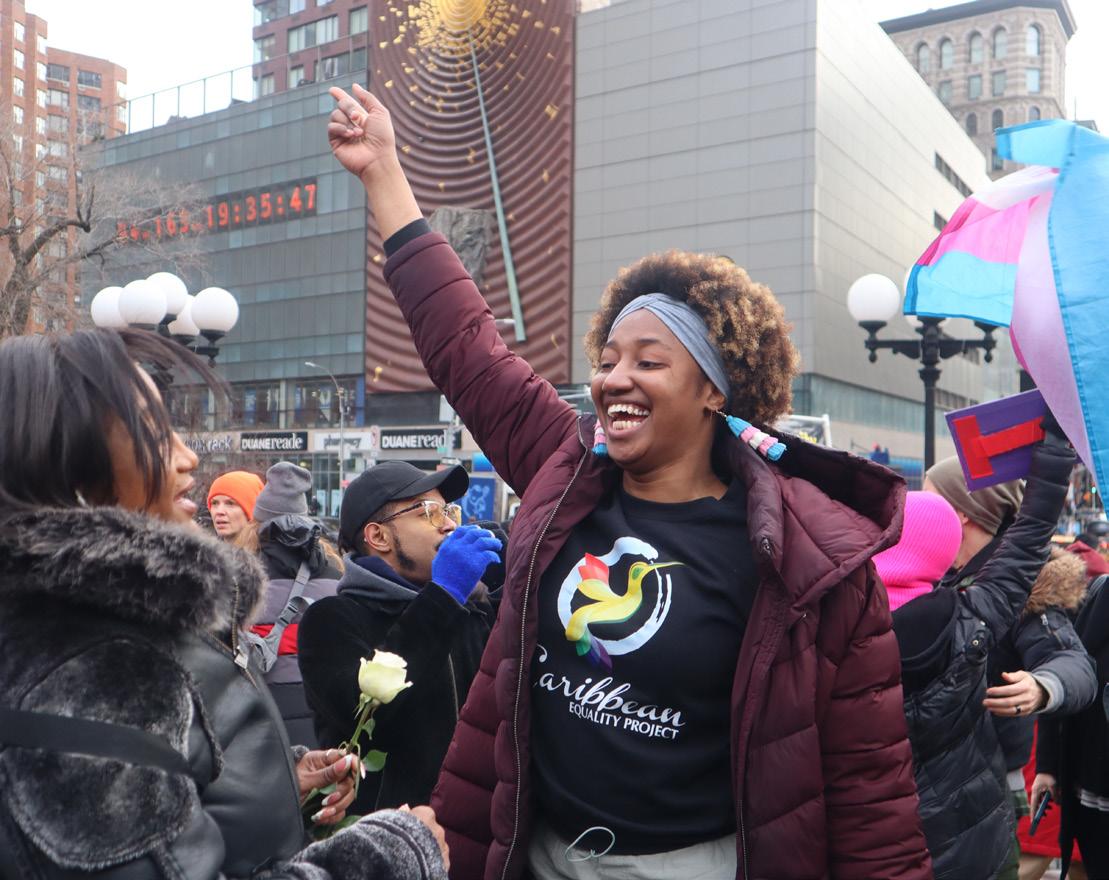
now being challenged by the Trump administration, and how families are beginning to navigate the attacks perpetrated on their loved ones.
Clifford shared her message for the country and parents facing similar circumstances who may not understand what their kids are going through: “Interrogating our own transphobia is so important to overcoming it. We live in a culture of transphobia, we have to look at what has slipped into ourselves so that we don’t act on it.”
She also called for action and accountability. “Cis-white women like me…. are starting to realize that bodily autonomy includes everything from trans health-
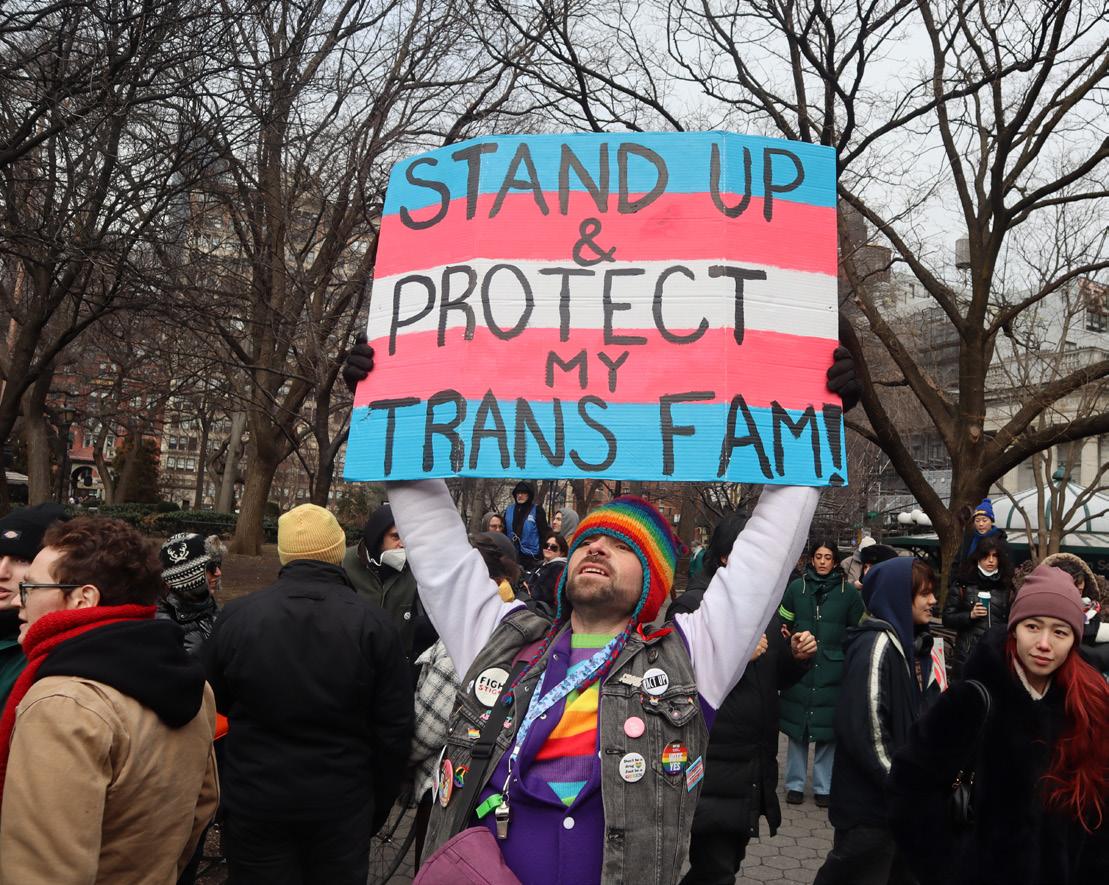
A demonstrator holds a “Stand Up & Protect My Trans Fam”
care to abortion access, to black women being able to give birth without dying, to a young black man being able to walk down the street without being shot. All of that is bodily autonomy, all of our oppressions are connected,” she said.
What could have been a gloomy February afternoon, turned into a celebration of trans youth.
The event was full of cheering, togetherness, and colorful signs. Marti Gould Cummings, the first openly non-binary candidate to run for City Council in New York City, said, “We are seeing queer joy amplified, and we are not going to back down to hateful [and] dangerous rhetoric
of Nancy Mace, Laura Boebert, Elon Musk, and that man at the oval office. We are here to fight back with queer joy and resilience.”
Tiffany Jade Munroe, the trans justice coordinator for the Caribbean Equality Project, gleefully danced and talked to the attendees after the event was over. She told the AmNews, “Trans rights are human rights. Trans lives matter, trans youth matters, trans healthcare matters, and that’s what we are all here advocating for.” She explained her organization will continue to fight back against the hateful rhetoric going on all over the U.S., and that showing up in Albany to advocate for crucial bills will be her key mission this year.
By KAREN JUANITA CARRILLO Amsterdam News Staff
With the next New York gubernatorial election approaching on Nov. 3, 2026, New York Secretary of State Walter Mosley talked with the Amsterdam News about Gov. Kathy Hochul’s administrative plans to address the state’s affordability crisis. Mosley also spoke about the administration’s strategies to assist families with child care challenges and new initiatives to provide free college tuition. This interview was edited for context.
Amsterdam News : What was the initial reason you guys wanted to talk to us about what you are doing?
Sec. of State Walter Mosley : I think one of the main things we want to do is we want to convey to New Yorkers on behalf of the governor her vision and what initiatives she is championing particularly as it relates to this budget.
AmNews : So, what can we do in terms of housing?
W.M. : Well, one of the things is that the governor has declared a housing emergency for the entire state. We know that families are looking to find affordable places to raise their families and to really call a place a community of their own. One of the things that we’re doing at the Department of State to contribute to alleviating that pressure and anxiety is one of two programs that we have in the Office of Planning Development and Community Infrastructure. One is our New York Forward program, and the other one is our Downtown Revitalization Initiative (DRI), so there’s New York Forward and DRI. These programs collectively have created over 4,000 units of housing in both workforce housing, affordable housing and market rate housing. And we’ve spread that out throughout this entire state. Now, we know that there is so much more to do, but we also understand that we’re going to utilize our services at the Department of State to take whatever state funding that we get and to bring it back to the community that needs it the most. And we’re talking about communities not only in our big five cities but also in our smaller municipalities and townships that need that necessary fiscal

assistance and technical assistance to attract public-private partnerships to create more affordable housing.
New York Forward primarily deals with our smaller upstate communities and municipalities. And our DRIs are usually geared around our mid-sized — our bigger cities.
AmNews : And what are the plans for New York City?
W.M. : We’re going to be putting in place an additional $20 million that was proposed in the governor’s executive budget. We believe that the final budget will find its way forward with that $20 million in billing tax to create more affordable housing and to complement the city’s initiative to create more affordable hous -
ing over a period of time. And we know that this is only a drop in the bucket, but it’s going to be an ongoing commitment from the governor in an effort to deal with the issues of affordability, dealing with the issues of raising a family, as well as making sure that there will be other imminent announcements from borough to borough as it relates to the creation of more affordable housing.
AmNews : Can you tell me a little bit about how that money functions? What does that money go toward specifically?
W.M. : So, for instance, in that DRI, which is geared toward our bigger municipalities and cities, that $20 million is a $20 million grant from the state that goes
skin in the game in an effort to build out affordable housing, making the city more affordable, making the city more accessible to our young families, to children, to our seniors, and the like.
AmNews : OK, and then that money would be spread among different projects, correct?
W.M. : That money will be spread amongst the projects that are awarded the DRI grant.
AmNews : How is this regulated in terms of affordability?
A lot of people say they can’t afford affordable housing; they really would like more low-income housing.
specifically toward that one particular project that’s awarded. Because of the density and the cost of doing business in the city of New York, in the past, we would do $10 million awards, but we just felt like we would get more bang for the buck with the $20 million, which would complement whatever the city puts in and whatever our private partners or partner puts in. So really it serves as an igniter or initiates further conversations so that people understand that this is not just about private sector money, this is not just about city money, but that this is a combination of city, state, and private sector money that will all take on a responsibility and all will have
W.M. : Yeah, well, housing is a component and there are several components within the application process. It’s very, very detailed in terms of what our expectations are based on what you’re proposing. We get hundreds of applications from all over the state in each round that we’ve had. And one of the things that we do make sure of is that the project is conducive to the needs and the demands of the people who are living there currently. So, we don’t want to build market-rate housing or workforce housing and there’s a drastic need for that particular part of your city for low-income housing as well as workforce housing. OK, so we take into account it’s an arduous process. Obviously, we have to decline more than what we can award, but at the same time that doesn’t preclude a municipality from getting feedback from us, understanding where they were deficient, understanding where they need to make up in terms of subsequent applications they might submit, and understanding that, you know, this is an ongoing project is not a one-time award or one-time process. We’ve had multiple rounds and we will continue to have more rounds, but we want to make sure that whoever we award these grants to that they are meeting the demands that are in real-time for the New Yorkers who are living there right now.
AmNews : And with child care, there was a plan for that?
W.M. : Yeah, we have a multitude of issues dealing with child care. As you know, the governor, being the first mom governor, went through child care issues.
By ARIAMA C. LONG Amsterdam News Staff
New York’s House Democratic Leader Hakeem Jeffries and former Congressmember Jamaal Bowman have added the role of published author to their lists of accomplishments. Both recently wrote books geared toward inspiring a younger generation of voters.
Jeffries is the first Black person to hold his position, and considered the highest-level Democrat in the nation. His new book, “The ABCs of Democracy,” comes from the first floor speech he delivered to Congress after the seemingly endless cycle of House Republicans not confirming former Majority Speaker Kevin McCarthy on Capitol Hill in 2023. Once the vote for McCarthy was finalized, Jeffries took to the podium to offer congratulations and poetically affirm the values of democracy, one letter of the alphabet at a time.
At a promotional event for his book at Medgar Evers College in Brooklyn, Jeffries spoke about his upbringing in Crown Heights, becoming a lawyer, and initially getting involved with community work during the 2000 census count.
The Center for Black Literature and the
Medgar Evers College Cultural Committee co-sponsored the event. It was also hosted by L. Joy Williams of the Brooklyn National Association for the Advancement of Colored People (NAACP) and Lurie Daniel Favors, executive director of the Center for Law & Social Justice at Medgar Evers College and a SiriusXM host.
During the Q&A portion, Jeffries discussed the realities of preserving the central values of democracy and pushing back whenever it’s systematically being attacked; restoring the Voting Rights Act of 1965 and protecting the Civil Rights Act of 1964; analyzing how Republicans led President Donald Trump to another term in office and the rise of white nationalism on nontraditional media platforms; and developing new strategies going into the midterm elections for the Senate and House in 2026.
“Diversity, equity, and inclusion are American values,” said Jeffries. “The motto of this country is E pluribus unum: out of many, one. That’s diversity. One of the most important constitutional amendments, which emerged from the movement to abolish slavery during Reconstruction, the 14th Amendment, which promises equal protection under the law — that’s equity … And our pledge, which is recited by mem-
bers of Congress every day before the House and Senate open. At the end, after pledging allegiance to the flag, we talk about one nation, under God, indivisible with liberty and justice for all. All. That’s inclusion.”
His book was published by Grand Central Publishing in November 2024 and illustrated by Shaniya Carrington.
Bowman was the first Black person elected to a seat in the 16th Congressional District in New York. He’s excited to announce his new children’s book, “Peace N Love.”
His book is semi-autobiographical in nature, delving into his upbringing in the Bronx with a hard-working single mother, but also discusses politics in a digestible way for younger readers. The title draws inspiration from Bowman’s signature phrase, which he used to begin and end his speeches throughout his career in Congress. Before being an elected official, Bowman was a school principal and educator. He said he began writing and reflecting after he lost his bid for re-election in 2024.
“Every Black man of character that I know mentors and engages young people in an effort to uplift and inspire, though it’s not often seen,” said Bowman, when asked about his book. He wrote it “especially in the spirit of our ancestors. It’s not about
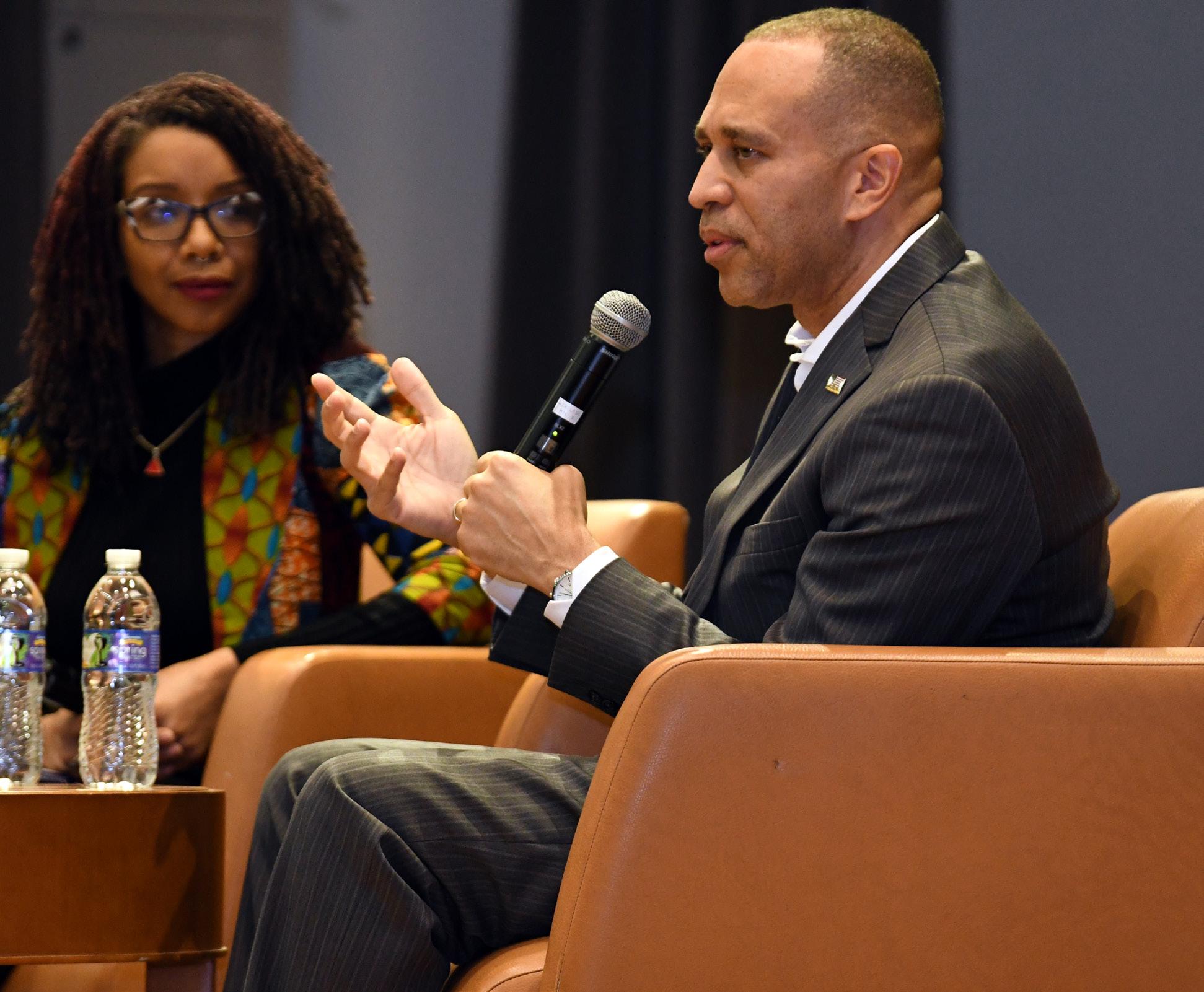
us individually. It’s about us as a collective. What’s happening [in the country] is fascist, a dictatorship. And my tone is always from the perspective of the people.”
Bowman added that in a political climate led by Trump and billionaire Elon Musk, it’s only natural that people like him and Jeffries take to writing their stories for young people. He said he’s proud of his former colleagues in government who have taken a stand and loudly pushed back against “the oligarchy.”
“I’d probably be getting arrested,” joked Bowman about what would happen if he were still in office.
Bowman’s book features illustrations by artist Kailyn McBride, who met him during an interview for a communications position in his office.
“Art is colorful, and it resonates with anyone and any child, no matter the color of their skin. I make sure that my illustrations tell a story far beyond the picture on a page,” said McBride in a statement. “Marrying words that promote acceptance with diverse illustrations is the idea behind my work, and I’m glad I was able to help tell Bowman’s story. We want every child in grades Pre-K through third [grade] across America to read this book or have it read to them.”
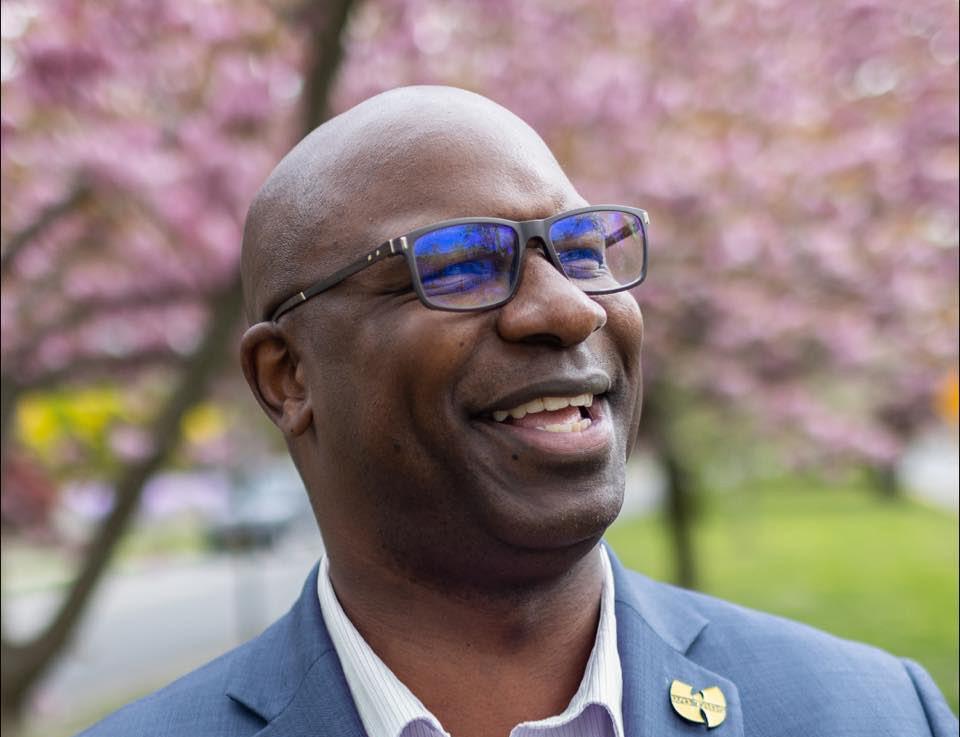
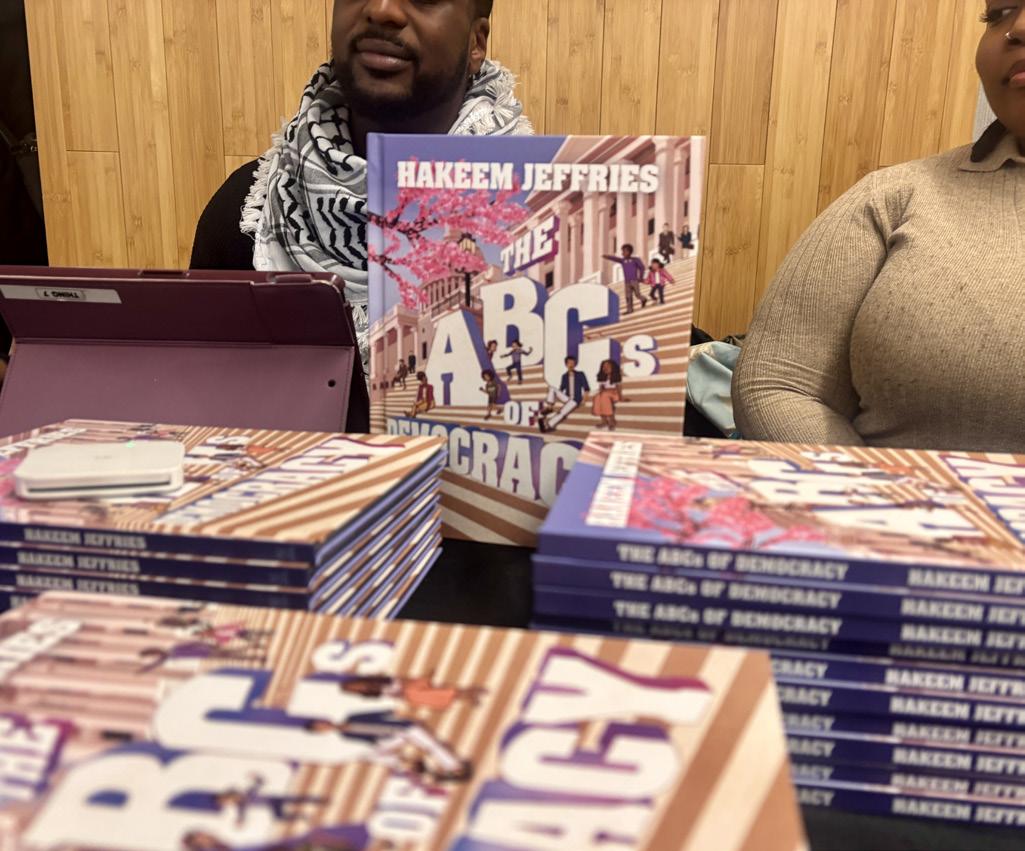
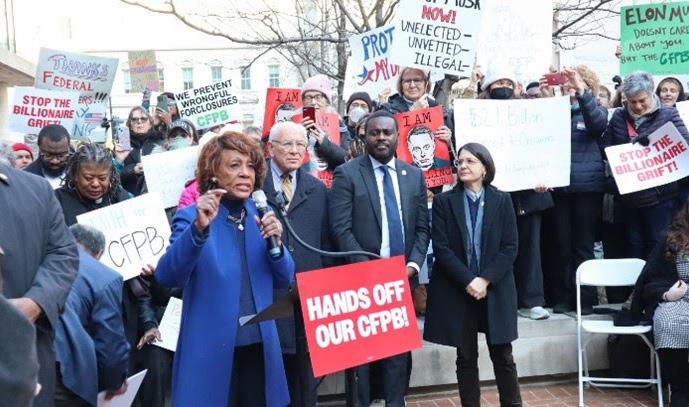
By KAREN JUANITA CARRILLO Amsterdam News Staff
Trump administration efforts to dismantle the Consumer Financial Protection Bureau (CFPB) were confronted this past Feb. 10 by Congressional Democrats, CFPB staff, and members of the CFPB Union NTEU 335 who rallied in front of the organization’s Washington, D.C. headquarters.
The CFPB is mandated “to stand up for consumers and make sure they are treated fairly in the financial marketplace,” the agency’s website states. “One way we do this is by enforcing federal consumer financial laws and holding financial service providers accountable for their actions.”
During a demonstration live-streamed on the House Financial Services Committee’s YouTube channel, participants pressed Elon Musk, the individual Trump appointed to lead the federal job paring Department of Government Efficiency (DOGE), to address the angry demonstrators.
Musk had stated that it was past time to kill the agency, which employs 1,677 people: “CFPB RIP” he tweeted on Feb. 7.
Russell Vought, the administration’s interim director of the CFPB, froze funding for the agency, ordered staff to stop working on ongoing cases, and stay out of the agency’s offices while DOGE agents review the agency’s computer file systems.
“Elon Musk, where are you?” House Committee on Financial Services, Ranking Member Maxine Waters called out at the rally: “Bring your ass over here so you can see who’s here and what we’re doing. We’re not afraid of you. We know that you are the co-president now of the United States of America. But ladies and gentlemen, I want you to follow very closely what he’s doing and how he has done it.”
“Families are struggling,” added Massachusetts Congresswoman Ayanna Pressley. “The rent is too damn high. The cost of groceries is too damn high. The big banks and giant corporations are all too eager to
nickel and dime hard-working people, and you know what has been a saving grace for families trying to hold onto a buck? This small but mighty government agency, the Consumer Financial Protection Bureau.
“Now look, those of you watching you may have never heard of them. You know, isn’t it just the truth that you don’t know how much you benefit from your government or your democracy until someone comes through with a wrecking ball and creates a constitutional crisis with an unprecedented power grab? You’ve never heard of them, but trust me, they’ve been working hard for you, the people, for over a decade.”
Senator Elizabeth Warren conceived the idea for the CFPB in 2007 during her tenure as a Harvard Law School professor. Former President Barack Obama officially established the CFPB as an agency by signing the legislation in 2010. At the rally, Senator Warren noted that the CFPB has been aptly described as “the cop on the beat” due to its success in reducing financial frauds and re-
covering $21 billion for consumers. Senator Warren remarked, “Donald Trump and Elon Musk have instructed the financial regulators at the CFPB to be less vigilant. Consider this carefully – regardless of the magnitude of the scam or the audacity of the scheme, they have opted to allow Wall Street entities to take advantage of consumers financially.
“Well, we are here to fight back! We want our financial cops back on the beat! This is a fight – and I want you to watch who this fight is between – this is a fight between millions of hardworking people, who just don’t want to get cheated, and a handful of billionaires like Elon Musk who want the chance to cheat them.”
Progressive pro-democracy groups like Indivisible, the Progressive Change Institute, MoveOn, and Americans for Financial Reform organized the rally. They asked the Congressional Democrats who took part in the event to withhold their votes to fund the government until this constitutional crisis is over.
Deportations have also affected the migrant population living in Puerto Rico.
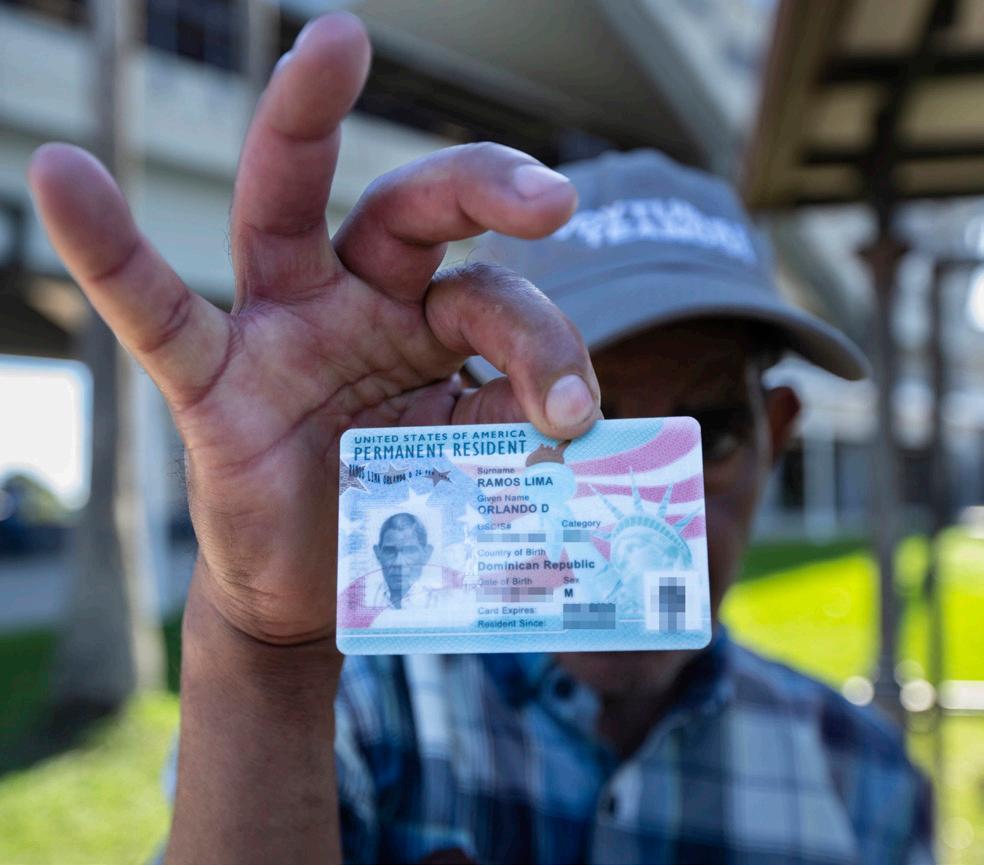
By LEYRIAN COLÓN SANTIAGO
The prolonged silence in the hallways and the massive absenteeism of students from classes were indications to José Payano that this was not a typical Monday at his workplace.
Payano is a school psychologist at Albert Einstein Middle School in Barrio Obrero, a neighborhood in the capital of Puerto Rico, where the U.S. Immigration and Customs Enforcement (ICE) carried out its first operations in the wake of executive orders of President Donald Trump, which implement stricter measures and reverse protections for the migrant population.
“Barrio Obrero looks desolate,” said Payano in an interview with the Amsterdam News, describing how the school community has been affected by the operations. “When I’ve spoken to the students’ families, many [say that they] stay in their homes out of fear.”
For Payano, these operations could have long-term negative effects on the student community. “My concern is that students may feel constantly marginalized because of their physical traits or because they are Dominican,” he said. This first operation, which took place in January, followed statements by Governor of Puerto Rico Jenniffer González Colón, who said that Dominican people “could remain calm” because the immigration measures would not affect them. However, Puerto Rico is a U.S. territory, so the executive orders implemented by the president have a direct effect on the migrant population on the island.
“We urge parents to better educate themselves about the laws that protect them,” said Payano. “There is a lot of misinformation on the street, and many times, people repeat information that turns out to be inaccurate.” He emphasized that knowing one’s rights as a migrant could bring more peace of mind to residents of the neighborhood.
The deportations also led the Barrio Obrero community to organize to demand concrete actions from the local government and its representative on the island in favor of the migrant community residing there.

Knickerbocker Village
10 Monroe Street, New York, NY 10002
Application Due: April 10, 2025
Amenities: On-site superintendent & management office, laundry room in every building, 24/7 security, community room, 2 center court gardens with sitting area, storage lockers, US Postal Mail lockers, Eclectic variety of Commercial Storefronts on the premises (Deli, Day Care, Dry Cleaners, Driving School, Insurance Brokerage)
Transit: F train, M15 bus, S15 bus
Knickerbocker Village, a Mitchell Lama Rental Housing Company supervised by New York State Homes and Community Renewal, will be selecting a limited number of applications by lottery for placement on their waiting lists for each AMI Tier as follows:
Studio (55 total) – (11) applications for 50% AMI, (22) applications for 80% AMI and (22) applications for 95% AMI
One-bedroom (500 total) – (100) applications for 50% AMI, (200) applications for 80% AMI and (200) applications for 95% AMI
Two-bedroom (300 total) – (60) applications for 50% AMI, (120) applications for 80% AMI and (120) applications for 95% AMI
Income Restrictions Apply – $75 Application Fee required within two weeks of selection in lottery – No Broker’s Fee Applicants will not be automatically rejected based on credit or most background check information.
04/10/2025
Must be postmarked or submitted online by this date. Sending more than 1
How to Apply:
Online: www.knickvill.com
Request Application by Phone or Email: 212-348-3248 ext. 5632 or applications@knickvill.com
By Mail: 128 E Broadway, Box #234, New York, NY 10002-9998
Include your address & the name and address of the development where you want to apply. Any applications post marked after 4/10/2025 will not be considered.
Lottery Date & Location: 04/17/2025 Digital Lottery
The lottery will determine which applications will be reviewed for tenancy.

If you have experienced housing discrimination: https://dhr.ny.gov/journey-fair-housing or call 844-862-8703
Learn about how your credit and background check will be individually reviewed: https://on.ny.gov/3uLNLw4

Reasonable accommodation and modifications may be requested



You are not alone if you are flummoxed — to say the least — by the Trump administration’s actions and/ or executive orders. Millions of citizens are scratching their heads, trying to get a bead on the decisions. In one stroke of his pen, he proclaimed Black History Month, calling on public officials, librarians, educators, and all people to observe the month and its various activities. However, simultaneously with this announcement, a memo from the Department of Defense declared that “Identity Months Dead at DoD.”
Activities may be scaled back by the federal government, including Women’s History Month, Hispanic Month, LGBTQ Pride Month, and other identity designations, but many organizations and institutions will continue with their celebrations. “We are stepping in to fill that gap,” said Karsonya Wise Whitehead, president of the Association for the Study of African American Life and History. “You don’t wait to be celebrated. We celebrate ourselves.”
A federal order cannot stop the media outlets from recognizing the various identity celebrations, and thousands of radio, television, and online programs are devoted to honoring Black History Month. We can also expect that other underserved communities will stage their moments of commemoration

Mass Communication Specialist 1st Class
Kimberly Clifford gives educational presentation about African American influence on society in 1950s as part of Navy’s observance of African American History Month in 2015.
(U.S. Navy photo by Mass Communication Specialist 1st Class
Dustin Q. Diaz/Released)
and tributes. Turner Classic Movies (TCM) recently featured a number of films celebrating the achievements of Black actors and directors; WBAI and WLIB radio stations have offered similar programming, and there is a vast number of online salutes to Black History Month.
Trump edicts are sure to have a destructive impact on other DEI-related entities and elsewhere, including USAID, the Department of Education, nonprofit organizations, tariffs, and all the terrible outcomes expected from Elon Musk’s leadership of the socalled DOGE. Even so, the fight-back is underway. We applaud the few courageous judges who have temporarily blocked some of the executive orders, although we have no idea how long those measures will last.
The fight-back tactics of Rep. Ilhan Omar of Minnesota are admirable and should be adopted across the country, particularly the filing of lawsuits. These and other methods of resistance can be accessed at Omar.house.gov.
To this end, we just received an email from the Meyer Levin School for the Performing Arts in Brooklyn about a Feb. 12 event to showcase Black history. That’s just one example of the movement forward: a form of defiance coming from an ordinary segment of our community.
Elinor R. Tatum: Publisher and Editor in Chief
Damaso Reyes:
Executive & Investigative Editor
Kristin Fayne-Mulroy: Managing Editor
Cyril Josh Barker: Digital Editor
Siobhan "Sam" Bennett: Chief Revenue Officer and Head of Advertising
Wilbert A. Tatum (1984-2009): Chairman of the Board, CEO and Publisher Emeritus
By GEORGE CASSIDY PAYNE
The American ideal of meritocracy — the belief that hard work and talent should determine success — has shaped generations and forms the foundation of the American Dream: If you’re driven and capable, you will succeed, no matter your background. But is that really how success is determined?
History tells a different story. Deep-rooted inequities in race, class, and systemic privilege have long obstructed true meritocracy. In practice, talent alone isn’t enough when barriers to opportunity are unevenly distributed. If we truly value merit, we must ensure everyone has a fair chance to prove their worth.
This is where Diversity, Equity, Inclusion, and Accessibility (DEIA) come in. Contrary to misconceptions, DEIA isn’t about lowering standards or prioritizing one group over another. It’s about eliminating obstacles that unfairly limit access to opportunity. By removing these barriers, DEIA strengthens meritocracy, ensuring that success is based on genuine ability rather than inherited privilege.
One persistent myth is that success is always earned. Often, wealth and power are seen as indicators of hard work and talent. Yet, a child born into privilege is automatically granted better education, healthcare, and career opportunities — a stark contrast to the experiences of those born into poverty. Without addressing these systemic imbalances, “merit” can become an inherited advantage rather than a reflection of true ability.
Traditional definitions of merit are also often dictated by dominant cultural norms, resulting in the chronic undervaluation of work like caregiving and domestic labor — tasks disproportionately performed by women and marginalized groups. Meanwhile, conventional career paths favored by those already in power are rewarded with wealth and status.
Critics sometimes argue that DEIA initiatives undermine meritocracy. However, these efforts are not about giving unqualified people an advantage; they’re about ensuring that qualified individuals aren’t excluded by systemic bias. Expanding the talent pool to include diverse perspectives and experiences doesn’t dilute excellence — it enhances excellence by tapping into a broader range of skills and ideas.
This approach isn’t confined to academic debates; it’s actively shaping organizations today. NFL Commissioner Roger Goodell recently reaffirmed the league’s commitment to its DEIA programs, even as many other corporations scale back their operations in this area. Goodell explained: “We got into diversity efforts because we felt it was the right thing for the National Football League, and we’re going to continue those efforts because we’ve not only convinced ourselves, I think we’ve proven
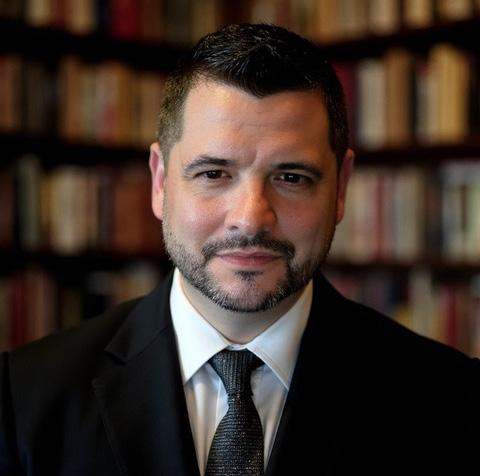
ourselves that it does make the NFL better, so we’re not in this because it’s a trend to get in or a trend to get out of it; our efforts are fundamental in trying to attract the best possible talent into the National Football League, both on and off the field, as I said previously.
“And we see that. We see how it’s benefited the National Football League and so, I think we’ll continue those efforts. I think it’s also clearly a reflection of our fan base and our communities and our players.”
Goodell’s comments reinforce the notion that DEIA initiatives are essential — not only for fairness but also for practical success. By embracing diverse talent and perspectives, the NFL, like any progressive organization, is better equipped to innovate and excel.
Admittedly, some DEIA initiatives have been poorly executed, leading to tokenism or superficial efforts that don’t address long-term challenges, but the solution is not to abandon DEIA but to refine and strengthen these policies to ensure they are substantive and inclusive. A fair society does not measure merit solely by conformity to a narrow mold of success; it recognizes and rewards the varied talents, experiences, and contributions that each individual brings.
For the American Dream to be a reality for everyone, we must confront and dismantle the systemic inequities that have distorted true meritocracy. As Goodell’s stance illustrates, DEIA initiatives are not mere trends — they are essential strategies for attracting the best talent and fostering excellence. By broadening our definition of merit and ensuring that opportunities are accessible to all, we take a vital step toward a society where success is determined by genuine ability, not by the advantages of birth.
The American Dream should not be a myth. It should be a reality for everyone.
George Cassidy Payne is a writer, SUNY adjunct instructor, and social justice advocate.
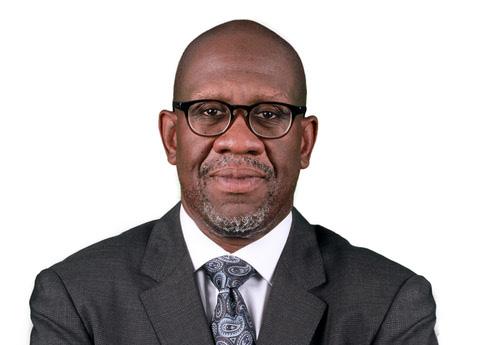
By ELIAS HUSAMUDEEN
Once again, a major part of the criminal justice system — our jails — is being ignored. This policy shift is likely to result in more individuals remaining incarcerated for longer periods. The issue isn’t longer jail stays; jails exist for a reason. The real problem is that while Governor Hochul is fighting to maintain safety and order in the streets, NYC jails have been stripped of the ability to do the same. Data shows that incarcerated individuals, including those with mental illness, are more likely to engage in violent behavior the longer they remain inside, endangering both staff and other detainees.
New York cannot have safer streets without safer jails. Public safety does not stop at the jailhouse door. Safety on the streets of New York and safety in the jails are connected. The same policies proposed to protect the public must protect those inside our jails. Policies that keep more people in custody while preventing the Department of Correction (DOC) from instituting similar policies create a double standard that suggests the safety of those in NYC jails is of less importance.
This oversight is undeniable, since it’s coming from both Albany and City
Hall. When violent crime rises in our city, critics argue that it’s because the NYPD isn’t allowed to do its job. The political response is more punitive measures: jail. But when the same population commits violent crimes in our jails, critics accuse the DOC of creating a “culture of violence.”
For a decade, the federal monitor’s reports have documented that a small group of detainees is responsible for most violent incidents, yet city and state lawmakers continue to blame the DOC for this so-called culture of violence. Both have imposed restrictions that limit how jails respond to violence, creating a dangerous contradiction and failing to see the connection. We cannot have one standard for the streets and another for the jails. If Governor Hochul is giving judges more power to impose harsher consequences on offenders to ensure public safety, then she must also empower the DOC with the same authority in the jails. Any reform that increases pretrial detention must include measures that allow the DOC to impose stricter consequences on individuals who commit violent acts while incarcerated. Without this balance, the policy is incomplete and will continue to fuel more violence behind bars.
In addition, if Judge Laura T. Swain
is to make an informed decision about placing NYC jails under federal receivership, she must conduct a full and independent review for bias of all reports submitted by the federal monitor. For years, these reports have repeatedly blamed uniformed staff for fostering a culture of violence while identifying a small group of detainees as responsible for most violent incidents. This contradiction cannot be ignored. Ignoring this reality and implementing federal receivership without addressing these fundamental issues will only lead to further chaos — just under new leadership and at the taxpayers’ expense. Safer streets and safer jails must go hand in hand. Ignoring this reality means we are not serious about protecting anyone — inside or outside the jail system. Reform must be an all-inclusive fight. Until we consider all parts of the criminal justice system equally, we will keep repeating the same mistakes and hoping for different outcomes, which is insanity.
Elias Husamudeen is the former president of the New York City Correction Officers Benevolent Association. He is also the founder of the Eli-Global Reform Foundation, a coalition of like-minded partners that support jail and prison reform at every stage of the process.

CHRISTINA GREER, PH.D.
Last week, I wrote about the importance of educating ourselves about the rich Black history in this nation. I implored us to spend time learning more about Blacks in America who have laid the foundation for the democracy that so many of us enjoy today. I am floored that I find myself defending the importance of Black History Month in the 21st century, but in this new federal regime that is lousy with white nationalists, here we are.
The problem we face in this moment is the inability of the vast majority of Americans to see Black history as intrinsically linked to their own past and their future. It is astounding that most Americans do not know anything about the trials, tribulations, and triumphs of Black people on American soil. If they did, they might understand the real dangers that lie ahead. If they did, they would have believed the alarms from Black women during the 2024 electoral season and the calls to take Project 2025 seriously.
Where do we go from here? How do we educate a nation that does not want to learn about their shared history? What do you do when people would prefer to remain ignorant when presented with facts about the realities that millions of people experience on a daily basis?
It is exhausting to see the rollbacks to civil rights struggles and successes. It is frustrating to see one man excavate the worst impulses of a nation and have the backing of an entire political party of feckless electeds who, by
and large, know they are headed in the wrong direction, but are so afraid of losing their elected office that they will say some of the most racist statements and enact legislation they know is counterintuitive and retrograde to American democracy. The sheer cowardice in this moment is truly astounding. To be clear, Black History Month is not cancelled, no matter what rollback efforts are in place. Black people and their allies will continue to celebrate and uplift the work of our ancestors and people who are currently working to make this country better. We will continue to link our history to a larger diasporic and collective struggle. We will continue to support Black businesses and honor those who are the antithesis of many of the folks currently running the federal government.
We must remember that our ancestors prepared us for this moment. We have the skills and the courage to stand up in this moment. We must not be distracted by the noise, degradation, and performative politics of distraction. We must continue to find like-minded and kindred spirits in this moment, this month, and moving forward. Happy Black History Month!
Christina Greer, Ph.D., is an associate professor at Fordham University; author of the books “How to Build a Democracy: From Fannie Lou Hamer and Barbara Jordan to Stacey Abrams” and “Black Ethnics: Race, Immigration, and the Pursuit of the American Dream”; and co-host of the podcast FAQ-NYC.
By BERT WILKINSON Special to the AmNews
Elon Musk, the white South African-born billionaire who is running President Trump’s highly controversial “government efficiency department,” appears not to be a very popular businessman with some Caribbean Community (Caricom) governments — at least one is pursuing him for unpaid satellite internet services, while another is deliberately limiting the growth of his services to the country.
Authorities in Antigua say Musk owes the Eastern Caribbean nation money for services rendered to internet users on the island, while Belize says Starlink’s services will only be made available to far-flung areas in the country, limiting its ability to out compete local internet providers.
Both Prime Minister Gaston Browne in Antigua and his chief of staff Lionel Hurst have said the issue has been discussed at cabinet level several times in recent months and there are no plans to let up on demands for Musk to make outstanding payments.
Musk and Starlink have been trying to break into the Caribbean market for the past three years and have had success in Jamaica, Belize, and Antigua, but Hurst said the technology being used by Starlink makes it difficult to regulate the company and make it comply with local laws.
“I don’t think the quantum has yet been determined, but we do know that there are over 100 people that are utilizing Starlink at the moment, and the other telecommunications companies must pay (sales taxes) on the services they provide to consumers,” Hurst told reporters. “Star-
link, because of its direct connection with the customer, is not reporting the companies or the persons who are utilizing its services, but we do know that it is operating out of Antigua, and so the government intends to collect the taxes. This is some of the information that we have garnered.” The tax is levied at 17%.
Hurst added that “the amount would be insignificant in terms of the quantum of the sales tax, but the rule is that every telecommunications company must pay. Well, we know this was only shared with the cabinet, but it appears as though the information and telecommunications ministry has been doing the necessary research to determine how many people [are using the service]. I believe that it started sometime last year, so the investigation has been ongoing. Whether or not we will actually be able to get that
tax is a question that we have not yet been able to answer, but the idea is that we must at least inform [Starlink] that taxes are due to the government of Antigua and Barbuda.”
Antigua’s move to draw down from Starlink comes as fellow Caricom member state Guyana says it is considering an application from the company to begin offering services in the oil- and gas-rich nation.
Prime Minister Mark Phillips recently told reporters that “Starlink has an application on file and it’s going through the process. We’ve had discussions with Starlink. The discussions are ongoing, and I envision it will reach a point where [like] the other 124 countries in the world where Starlink has contracts … we will have a license. In terms of a timeframe, I would say as early as possible because those discussions are ongoing. You may recall
the president himself had a conversation with Mr. Elon Musk, and I myself had conversations with senior executives of Starlink. We’re moving toward licensing them in the shortest possible time.”
In Belize, meanwhile, authorities have denied Starlink’s application for a full license, limiting them to unserved areas in the Central American nation that is also a Caricom member. Prime Minister John Briceno said loyal companies providing services to the country must be protected.
“We are not giving them an open license, but if a citizen comes and says — and we have been doing that forever — ‘We want a satellite dish,’ you get a permit to do that. If you … live deep in the bush and do not have access to internet service and want to bring it in, they will approve it. I think that is the best compromise.”

IMMIGRATION KORNER
Another Black History Month is here, and sadly, the so-called progress made in the wake of Black Lives Matter has all but vanished. The federal government, under the direction of a new administration, has declared DEI “illegal and immoral,” with Trump signing an executive order to halt all such programs and lay off diversity staff. The corporate world, which tried to support Diversity, Equity, and Inclusion (DEI), is now rapidly dismantling those same programs out of fear or simply because they did not care in the first place.
On Feb. 5, the U.S. Military Academy at West Point followed suit, shutting down more than a dozen cadet clubs that supported ethnic, gender, and LGBTQ+ representation. Even the Justice Department is now actively urging private companies to abandon DEI efforts, signaling a coordinated attack on programs meant to uplift Black, Indigenous, and People of Color (BIPOC) communities. Meanwhile, corporate America is caving to the pressure. Walmart, Target, McDonald’s, Amazon, and others have quickly backtracked on their com-
mitments. The result? A devastating drop in economic opportunities for Black communities. Data from 2024 shows that U.S. startup funding for Black founders hit a multiyear low of just 0.4% — a stark contrast to the hollow promises made during the BLM movement.
Where do we go from here? If history has taught us anything, it’s that we cannot depend on others to lead us. It is time to build our own economic infrastructure, one that mirrors the vision laid out by Jamaican Marcus Mosiah Garvey, one of America’s greatest Black immigrants and strategists.
The Garvey plan: A blueprint for Black Economic power
In the 1920s, Marcus Garvey championed a radical yet simple idea: economic self-sufficiency. He believed that Black people, globally, could achieve true independence through entrepreneurship, ownership, and trade. His vision was one of Black-controlled businesses, financial institutions, and industries, ensuring that wealth generated by Black communities stayed in them. Garvey understood that economic strength leads to political and social power. He urged Black people to support Black-owned businesses, build institutions, and circulate wealth in their own communities. His mes-
sage, nearly a century later, remains more relevant than ever.
The time for action is now
With Black purchasing power projected to reach $1.7 trillion by 2030, we hold immense economic influence — yet much of that wealth is spent outside our own communities. It is time to redirect our spending and investments to create our own economic powerhouse.
What does this look like in 2025?
Stop spending our money with companies that have abandoned DEI.
• Boycott businesses that refuse to support diversity.
• Seek out, buy, and invest in Black-owned alternatives. Build and scale Black businesses.
• Turn small Black-owned businesses into industry leaders by supporting them and helping them get investments to grow.
• Wealthy Black entertainers, athletes, and professionals, including Black billionaires, must invest in Black startups and enterprises. Create a Black sovereign wealth fund.
• Contribute to a fund that will allow financial resourc-
es to invest exclusively in Black-owned businesses.
• Support industries like media, finance, real estate, healthcare, and technology. Fund Black entrepreneurs and storytellers.
• Own our narratives by investing in Black filmmakers, authors, and media outlets.
• Support Black-owned ad and PR agencies to control how our stories are told.
Develop Black-owned institutions.
• Open private Black-owned schools to educate the next generation and preserve our history.
• Establish Black-led clinics and pharmacies for community healthcare.
• Support and grow Black law practices nationally.
Build Black-controlled industries.
• Grow and launch more Black-owned supermarkets, restaurants, banks, dealerships, and tech companies as an alternative to Amazon, Facebook, and Netflix.
• Support and grow our own Black hair and beauty businesses instead of going outside and spending millions annually outside our communities.
Grow a global network of Black economic power.
• Connect and grow with Black businesses and industries across the U.S., the Caribbean, Africa, and Latin America.
The road ahead: from Black Wall Street to Wakanda
Our own politicians have failed us, and the institutions we once looked to for inclusion are proving their true priorities. The only way forward is through economic sovereignty — block by block, city by city, state by state.
The original Black Wall Street in Tulsa, Okla., was a testament to what happens when Black people invest in themselves. We must build the next Black Wall Street — bigger, stronger, untouchable, and nationally and internationally.
Let’s stop talking and start doing. Let’s make Marcus Garvey’s economic vision a reality in 2025 and beyond. It’s time to go green — not just for the environment, but for the economic revolution our people deserve. That will be a Happy Black History Month
Felicia J. Persaud is the publisher of NewsAmericasNow.com, a daily news outlet focused on positive news about Black immigrant communities from the Caribbean and Latin America.


By KIMBERLEE KRUESI Associated Press
The Trump administration’s decision to close the U.S. Agency for International Development (USAID) has drawn widespread criticism from congressional Democrats and raised questions and concern about the influence billionaire ally Elon Musk wields over the federal government.
The United States is by far the world’s largest source of foreign assistance, although several European countries allocate a much bigger share of their budgets to such aid. USAID funds programs in some 120 countries with projects aimed at fighting epidemics, educating children, providing clean water, and supporting other areas of development.
The stop-work order has upended many of those projects, and has seen nurses laid off and clinics closed in more than 25 countries where two-thirds of all child deaths occur globally, said Janeen Madan Keller, policy fellow and deputy director of global health policy at the Center for Global Development.
Here is a look at USAID’s impact around the world.
Disease response, girls’ education, and free school lunches in Africa
Last year, the U.S. gave the sub-
Saharan region more than $6.5 billion in humanitarian assistance, but since Trump’s announcement, HIV patients in Africa found locked doors at clinics funded by a U.S. program that helped rein in the global AIDS epidemic.
The President’s Emergency Plan for AIDS Relief (PEPFAR), known as one of the world’s most successful foreign aid programs, has been credited with saving more than 25 million lives, largely in Africa.
“The world is baffled,” said Aaron Motsoaledi, health minister of South Africa, the country with the largest number of people living with HIV, after the U.S. freeze on aid.
Motsoaledi said the U.S. funds nearly 20% of the $2.3 billion needed each year to run South Africa’s HIV/AIDS program through PEPFAR, and now the biggest response to a single disease in history is under threat.
Halting U.S. aid also could have a dire impact on the humanitarian situation in eastern Congo, where American aid funds access to food, water, electricity, and basic health care for 4.6 million people displaced by years of conflict. European nations are discussing increasing aid, but a European diplomat told the AP that will not make up for the loss of the U.S., the country’s largest donor.
In Ghana, the Chemonics International development group said it’s pulling logistics for programs in maternal and child health, malaria response, and HIV.
Education programs have been halted in Mali, a conflict-battered West African nation where USAID has become the country’s main humanitarian partner after others left after a 2021 coup.
In civil-war-torn Sudan, which is grappling with cholera, malaria, and measles, the aid freeze means 600,000 people will be at risk of catching and spreading those diseases, said an official who spoke on condition of anonymity because they were not authorized to speak publicly about the matter.
USAID supports governance and media projects in countries where Russia exerts a large influence, such as Georgia and Armenia. Last year, it sharply increased support for programs in Armenia as the government of Prime Minister Nikol Pashinyan sought to reduce links with Russia and strengthen ties with the United States and the European Union. The aid freeze means several independent broadcasters have been forced to cut some of their programs.
Boris Navasardian, president of the Yerevan Press Club, said inde-
pendent media “could face a forced choice: End their existence or seek sponsorship from political parties or big business.”
Hospitals in war-ravaged Syria
Doctors of the World Turkey said it has been forced to lay off 300 staff and shutter 12 field hospitals it runs across northern Syria, a region devastated by years of war and a huge 2023 earthquake. Hakan Bilgin, president, said the organization relies on USAID for 60% of its funding and has had to cut its daily consultations from 5,000 to 500.
“As a medical organization providing life-saving services, you’re basically [being told], ‘Close all the clinics; stop all your doctors; and you’re not providing services to women, children, and the elderly,” Bilgin said.
Bilgin said the impact on northern Syria, where millions rely on outside medical aid, could be catastrophic. “The real impact is bigger than we can measure right now,” he said in the group’s Istanbul office, surrounded by half-unpacked boxes and worried colleagues.
Support for marginalized communities from the Balkans to Uganda
In Kosovo, which has received more than $1 billion from USAID since 1999, women’s groups fear
the impact of losing American funding for gender- and diversity-related projects in the conservative country.
“This might leave women’s groups stranded and unsupported,” said Ariana Qosaj Mustafa of the Kosovo Women’s Network.
Emina Bosnjak of the Sarajevo Open Center said USAID promotes awareness of discrimination, violence, and hate speech, and marginalized groups would suffer if that stops. “Stronger narratives that stand against human rights and stand against democracy and rule of law will actually become more visible,” she said.
A nonprofit organization supporting LGBTQ people in Uganda also feels under threat. Pius Kennedy, a program officer with the Kampala-based nonprofit Africa Queer Network, said he and five other permanent employees had been ordered by USAID to stop work. He said the funding freeze could erase years of gains made in protecting sexual minorities in Uganda, one of more than 30 African countries where homosexuality is criminalized.
“We would always look at the United States as something that we would always run to in case you are facing a number of insecurities in the country,” Kennedy said — but that may no longer be the case.
By ARIAMA C. LONG Amsterdam News Staff
Despite its vast immigrant communities, New York City has struggled to keep up with language access and interpretation services. Last week, the city council banded together with local organizations to launch its first ever Community Interpreter Bank with new funding initiatives.
“Language interpretation services are a vital pillar of a healthy, thriving, and diverse New York City, for both new and long-term immigrants navigating complex systems in an unfamiliar language. The NYC Community Interpreter Bank ensures these individuals can access critical services in their preferred language while also creating a direct pipeline to employment for New Yorkers trained in interpretation,” said New York Immigrant Coalition (NYIC) President and CEO Murad Awawdeh.
The interpreter bank will recruit, train, and dispatch interpreters for city-funded legal service providers, community navigation sites, and city council offices across the five boroughs. The intention is to hire interpreters from worker-owned language cooperatives based in the city and from the City University of New York (CUNY) Hostos interpreter courses. This comes after President Donald Trump fired off a spate of executive orders once he was officially sworn in, stirring anti-immigrant sentiments nationwide.
Awawdeh, other advocates, and council
members held a press conference at City Hall to celebrate the launch on Wednesday, Jan. 29.
“Over the last week we have seen the Trump Administration make direct attacks on immigrant New Yorkers, threatening them with mass deportation, ending asylum, revoking temporary protected status, and so much more,” said Awawdeh. “All of which the intent is to separate our families, destabilize our communities, and gut our local economies, but today the New York City Council is wholeheartedly stepping forward into the vacuum that the Mayor has left with his silence on these attacks. The city council is providing solutions to protect and defend immigrant communities and New York City’s workforce.”
The Language Justice Collaborative (LJC), which is made up of immigration groups like the NYIC, African Communities Together (ACT), the Mexican American Students’ Alliance (MASA), and the Asian American Federation (AAF) proposed a centralized interpreter bank for public use last year and just over $1 million of the city’s funding went to establishing it in the fiscal year 2025 budget.
The launch included more than $2 million in emergency funding from the city council to the Protect NYC Families Initiative, which will provide flexible funding for over 60 nonprofit organizations that serve immigrant New Yorkers. The funds will also support rapid response and know your rights training sessions, said City Council Speaker Adrienne Adams. Speaker Adams called Trump’s executive
orders “anti-democratic attacks” on the U.S. constitution and immigrant communities that helped build the city.
“The most backwards views of our past are returning again. It is therefore essential that our city government stand by our values and defend New York City families in conjunction with our partners,” said Adams. “We are a city of immigrants proudly, and our diversity only strengthens our great city. The city council is very clear about our commitment to prioritize New Yorkers and to defend our rich immigrant communities that make us stronger. Our African, Asian, Caribbean, European, Latino, and Middle Eastern immigrant communities all contribute to the city’s greatness.”
Most of the other speakers at the conference shared Speaker Adams’ criticism of Trump and Mayor Eric Adams.
Councilmember Alexa Aviles, chair of the Committee on Immigration, said, “Immigrant New Yorkers are responsible for countless economic and cultural developments throughout our city’s history. You can’t disentangle the history of New York City from the history of immigrant communities that have shaped our neighborhoods, our public spaces, our culture, our businesses, our art, yet the Mayor and the President see millions of people not only in this city but across the country as expendable.”
ACT Program Manager Maimouna Dieye said that the city prides itself on diversity but has been stifled by significant barriers to language access, especially in hard to reach Afri-
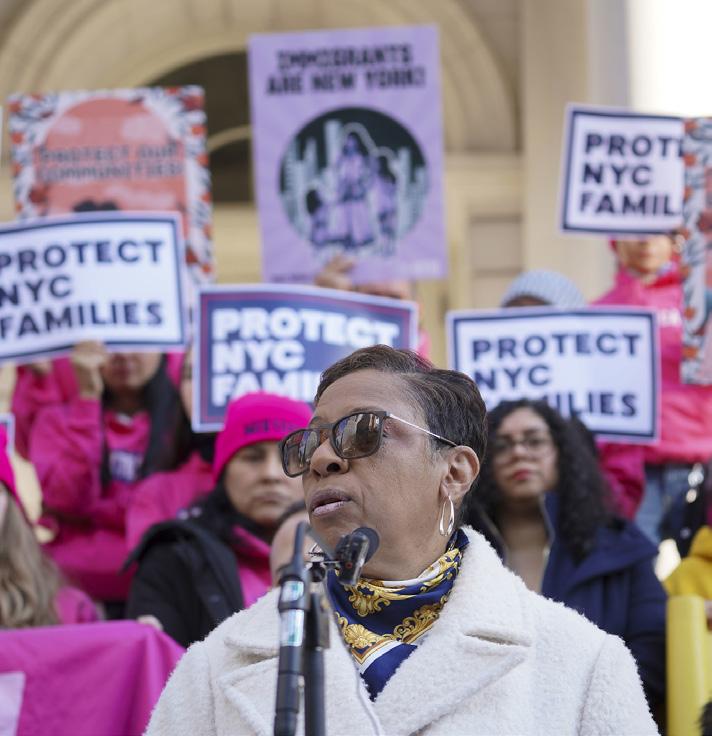
can immigrant communities. She applauded the city council’s strong commitment to support the interpreter bank with funding initiatives, through which ACT was able to create a unique African language services worker cooperative called Afrilingual.
“I just wanted to mention here today that as we move forward in these times of uncertainty post-presidential election, our communities are facing heightened threats,” said Dieye, “but it is crucial to remember that our strength in this city lies in our ability to come together.”
During Black History Month, we honor leaders who consistently dedicate themselves to uplifting and supporting their communities. Through their tireless efforts, they preserve the legacy of those who came before and pave the way for future generations to thrive.
Join us in celebrating fashion entrepreneur Ngozi Okaro, STEM leader Dr. Calvin Mackie, Jamie Aranda, a resilient Air Force veteran, and astronaut Ed Dwight as part of our Everyday Excellence campaign. Their drive and achievements inspire us all, serving as powerful reminders that success is within reach for those who strive for it.



Find career resources to support your own everyday excellence at aarp.org/work










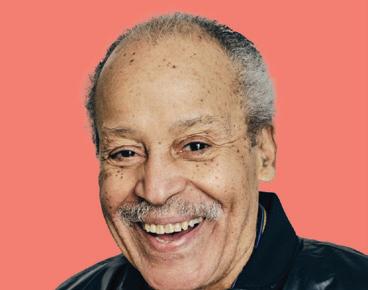









By NADINE MATTHEWS Special to the AmNews
In a recent interview, filmmaker Charlyn Griffith-Oro of the short documentary “The Aunties” told the Amsterdam News, “This film came out of my observations of the aunties over the last almost decade. They expressed wanting to leave behind the legacy that they have [stated] explicitly, but also in their actions, in their awareness, and in their presence.”
The former educator and her wife, Jeannine Kayembe-Oro, co-directed and coedited “The Aunties,” which features elder mentors, friends, and fellow farmers and climate activists Paulette Greene and Donna Dear, a married couple who met in 1974.
“I made the film to offer them as a possibility model; not just for the LGBTQIA community, but for anyone [who’s] imagining resisting enslavement, resisting confinement, and open to exploring their freedom,” Griffin-Oro said.
The film starts streaming on YouTube on Feb. 17 as part of the Black Public Media (BPM) online series AfroPoP Digital Shorts. It was originally supposed to be just a clip for social media, but “I [said], there’s no way I can edit 15 hours of footage down to 2 minutes and do it justice,” Griffin-Oro recalled.
The film was executive-produced by the Center for Cultural Power and its distribution is supported by the Queer Women of Color in Media Arts Project.
The historical symbolism of the film is front and center. It opens with a card with an excerpt from an 1854 letter Harriet Tubman wrote to her brothers. Mt. Pleasant Acres Farms, a 111-acre farm on the Eastern Shore of Maryland, is where Dear and Greene have lived since 1994. The land was part of a 2,167-acre plantation and is said to have been where Harriet Tubman’s family lived, and a putative stop on the Underground Railroad. The Witness Tree — a tulip poplar — that was said to have been where the escaping enslaved people rested before embarking on the journey to the north, is on the land.
The land’s overwhelming significance isn’t lost on Griffin-Oro. “This is something that Aunt Paulette and Aunt Donna often talk about,” she said. “Harriet brought people out of enslavement. She did not necessarily take them to freedom. In that reframing of the work that Harriet did, it restores more of Harriet’s humanity.”
Griffin-Oro stressed that Tubman’s work should not be considered as complete.
“Right now, people are contending with historically what was required of figures

like [Tubman], but as Paulette says in the film, there are everyday people who never stopped,” Griffin-Oro said. “We need to be aware that the reason that we have had certain access and mobility has always come at the expense of those who have carried the torch for the maintenance of and the re-contextualizing of all of those things.”
Griffin-Oro and Kayembe-Oro met these aunties through their work as farmers and environmental activists. Over the years, the relationship has deepened, with the aunties becoming close friends and mentors.
“Over the last five years, we’ve been spending a lot more time ‘two on two’ with them. We’re really enjoying the deepening of friendships with them. They’re our besties. They’re our elders, — aunties for sure. They’re family. They’re also definitely our friends.”
Flora visually dominates “The Aunties,” which won an award from the Ubuntu Climate Initiative. There are panoramic views of endless fields of greenery — the camera
“climbs” mountainous trees and towering corn stalks, and closely examines grapes, tomatoes, and sweet potatoes on the vine.
“The Aunties” also shows Dear and Greene seated side by side on wing chairs as if on thrones, wearing matching white coveralls and cowrie shell-framed sunglasses. In narration, Dear recounts their meeting in January 1974. Greene recalls knowing immediately that Dear “needed a spirit like mine.” They are shown cradling each other’s arms, wedding rings prominently displayed.
There is no escaping that “The Aunties” is also Dear and Greene’s odds-defying, enduring love story. Said Griffin-Oro, “They enjoy art and food. They are connected to the land and to creature and kin. They are honest, they are kind. They don’t waste time being saccharine if the moment calls for a bit of bitter medicine. They’ve touched adversity. They’ve dealt with loss; they continue to deal with loss. I think apart from that,
they just love each other so much. They are so committed to each other.”
Griffin-Oro hopes people will come away from “The Aunties” inspired and moved. “I hope that our film is able to bring people joy in the witness of the aunties and their love and their individual personhood,” she said. “I hope that it touches a place for any viewer, where they might have pain or maybe confusion or curiosity about what it means to live at the intersection of Black womanhood, being gay, being a land steward, being concerned about legacies like Harriet Tubman and the legacies of one’s own family. I hope that it touches and heals.”
“AfroPoP Digital Shorts” is an offshoot of BPM’s award-winning documentary and narrative series about life, art, culture, history, and more throughout the African Diaspora, AfroPoP: The Ultimate Cultural Exchange. For more information, visit https://blackpublicmedia.org/afropop/.
By NADINE MATTHEWS Special to the AmNews
At this moment, it is difficult to conceive of a time when Black arts and culture was not recognized or appreciated, but in 1969, when director Billy Jackson (“The August Wilson Center: Building on a Legacy”) started shooting his short film “We Are Universal,” it was still not a reality for many Black people or others. Jackson wanted to bring the message of the Black is Beautiful movement to the world.
Born and raised Pittsburg, photographer, award-winning film director, producer, and activist Billy Jackson has made a name for himself chronicling Black American history. In addition to “We Are Universal,” his Nommo Productions has produced more than 50 documentary, dramatic, and promotional films which often explore Black life and culture. He recently spoke with Amsterdam News about his 1969 short film “We Are Universal,” currently screening at Museum of Modern Art (MoMA) alongside Leroi Jones’ “Dutchman” thru Feb. 19. PGH Sound and Image conducted the film’s restoration.
“We Are Universal” visits five cities speaking to cultural and political luminaries about the influence of the Black is Beautiful movement on art and vice versa. Jackson had not even graduated from Northeastern University when he won a grant for $10,000 to do his documentary. Jackson explains, “This was my first documentary. I had been involved in a lot of protests and activism in the Civil Rights Movement and wanted to do a documentary on it.”
Jackson uses jazz, stunning video footage, and incisive interviews to interrogate how American Blackness is defined through the lens of art, literature, and especially through music. It was perhaps one of the first attempts to do so in the wake of the Civil Rights era. Prominent figures such as Quincy Jones, Nikki Giovanni, Jesse Jackson, Hugh Masakela, Charles White, and others weigh in.
Before “We Are Universal,” Jackson was a still photographer covering events and fashion. “I wanted to extend my voice and realized that still photography, unless I stayed in fashion or covered news, was very limited. So I decided that motion photography would have a better benefit
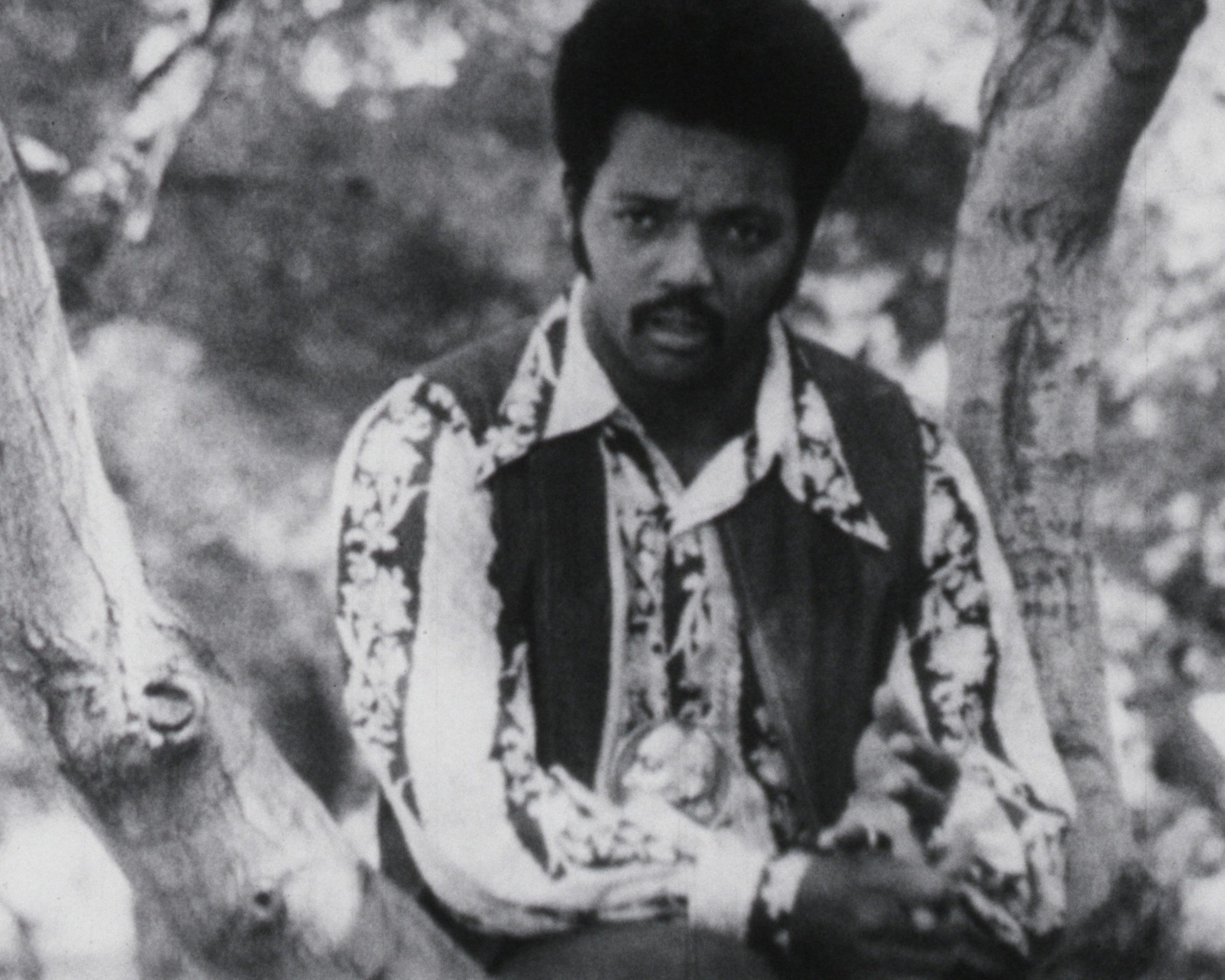
as far as reaching people and providing some kind of a voice.”
Being a fashion photographer certainly made a major impression, forcing Jackson to confront notions of beauty. It gave him a vantage point to keenly observe how that definition tried to exclude Black people and their culture. “The definition of beautiful was the biggest focus for me at that time,” Jackson recalls. “Black was not beautiful [to the white community]. I thought that it was, and I needed to define just why.”
“We Are Universal” subtly expands on the application of notions of beauty to include Black culture, in addition to, or perhaps even more, than physical attributes. “In the documentary, the responses to the questions I asked of the different artists, came out as to what the difference is between
our definition of beautiful and what the definition of the majority population had, for the arts and for our culture especially.”
Jackson shared that many nights spent in Pittsburgh legendary venues for showcasing Black artists such as the Crawford Grill, in addition to subsequently rubbing shoulders with artists in New York, propelled the film as well. “Their influence communicated to me that I needed to take a piece of our culture and show it to the world.”
Sadly, Jackson believes we are still fighting many of the same battles he tried to address in his film. Genuine understanding and appreciation of Black culture is still scarce. However, the opinions put forth in “We Are Universal” about the universal appeal of Black American culture have
certainly been proven true. Said Jackson, “When we talk about art, they’re talking the profit motive. So nothing has changed. There’s still racism. However, we’re a more desirable commodity. I always say we’re the new flavor and we’re more salable. There are more ways to monetize our presence. We’re all over the place. So that is our entry into the mainstream, rather than the true fabric of our beauty.”
“We Are Universal” remains relevant, as not just a vital historical and political document. Its importance as a cultural document remains as well. Jackson is hopeful that “We Are Universal” will reinforce the impact of Black American culture here and around the world. “I want it to raise their consciousness about culture, about our history, about our beauty,
about things we take for granted.
As Quincy Jones says in this documentary, the Beatles went out and became very popular, but a lot of us don’t realize they got their licks from people like John Lee Hooker and BB King.”
At one point in “We Are Universal,” legendary artist Charles White states, “We’re going to achieve a sense of our worth, our rights, on this continent and art is going to be a tremendous weapon, a tremendous force for achieving that.” “We Are Universal” and other critical cultural artifacts stand as reminders of how much has been achieved and how much is yet to be done.
“We Are Universal” is now available for streaming rental or purchase on Vimeo. Visit www. NOMMOproductions.com to access the film and learn more.

Louisiana native and inaugural Super Bowl Parade King Todd Graves, the owner and founder of Raising Cane’s, lit up New Orleans with his star-studded activities. To commemorate the big game, which the Philadelphia Eagles won 40-22 over the Kansas City Chiefs, being held in the Big Easy for the 11th time, Graves hosted dozens of his celebrity pals for a spectacular NOLA weekend. The festivities included a takeover of an entire hotel, parties filled with A-listers, a crawfish boil brunch on game day, and two suites at Caesar’s Superdome, where the menu
included chicken fingers, custom-made bomber jackets, and much more. Some of the stars that were hosted in Graves’ and Raising Cane’s suites included the recently single Jessica Alba, Kevin Hart, Saweetie, Orlando Bloom, Chance the Rapper, Siggy, CJ Cook, Leon Bridges, Diplo, and Oscar nominee Cynthia Erivo. Other celebs getting in on the fun were Winnie Harlow, Dylan Sprouse, Leah Kateb and Tyga.
Cardi B also turned things up at the Super Bowl. Not only did she appear at Beacher’s Madhouse on Feb. 8, but she turned up at Caesar’s Superdome in a formal-like halter dress to the ground. Meanwhile, is there a new hot couple alert? A few nights before, the Bronx-born raptress was spotted talking and smiling with Houston Texans wide receiver Stefon Diggs on February 6. This is not the first time they have been linked together.






By RENEE MINUS WHITE Fashion & Beauty Editor
For Fall’25 Fashion Week, Runway 7 Seven hosted a four-day view of today’s young international designers. Right in the heart of NYC’s theater district, they presented an array of fabulous fashions on the runway. Music was blasting and crowds were mixed, with editors, fashion VIPs, merchandisers, and special guests in standing-room venues. The clothes are wearable, colorful, figure-flattering, and enhanced with outstanding details. The basic themes were excellence and elegance.
Brooklyn designer Tyran Marquis was in the lineup at last week’s Runway 7 shows. His show, “Opulent 2025,” was a classic, impeccably tailored collection. Victorian glamour and beautiful Black women of the past such as Dorothy Dandridge and Lena Horne inspired Marquis. His fabrics were rich silks, taffeta, and Mikado, in bright colors with an occasional pastel gown in the mix. On the runway, his cocktail and evening wear collection shimmered in elegance. He paid special attention to details such as flounces, appliqué, peplum cuts on jackets, decorated covered buttons, and beading.
For this show, Marquis handpicked seven gorgeous models. “I created each design to



fit their individual personalities,” he said. These ladies sashayed up and down the runway with sophistication and style. Marquis comes from Jamaica, Queens,
where his mother, aunts, and grandmother raised him and were his mentors. “As a child, I used to gather rags [and] damaged materials and create new garments for my
line,” he recalled.
To attend Fashion Week shows, folks didn’t mind standing in long lines and braving the cold while waiting to enter. Interesting to note were the number of new, unsung designers on the schedule, which signals a fashion industry comeback. Many of the older fashion houses closed during COVID, but this venue was filled with new designers. There were, however, many exceptions, like designer Naeem Khan, who was also on the Runway 7 bill. He’s known for his opulent designs, and this collection was no exception. Other designers showed in smaller venues to more private crowds.
IZAYAH, a new Black menswear designer, presented a well-constructed sportswear collection for men. His colors and styles were crisp, wearable, and stylish. (I was seated close to a family member of his, who shouted out, “He’s from New Jersey!”) There were smashing blue-and-white tiedye pants and jacket setups, a yellow outfit with over-pant panels, and several smartlooking outfits.
Lastly, look out for the designer house Diamond & Pearls Fashions. They presented glittery, shapely styles and a show-stopping strapless print gown.
In general, NYFW is back, and folks are making lots of noise about it.
By EILEEN BARETT Special to the AmNews
I have been a faculty member of the Community Health department at CUNY since 2023. I teach food science, nutrition, and culinary arts to kids and adults. In these health circles, terms like food insecurity, food justice, and food sovereignty are frequently debated by examining case studies, analyzing data, and developing grassroots initiatives to address these important issues.
Recently, I interviewed Omowale Adewale, a vegan farmer based in New York who is creating sustainable solutions, from the ground up, with his bare hands. He and his wife, Nadia Muyeeb-Adewale, operate Liberation Farm in South Kortright, New York, and are the founders of Black VegFest (or Black Vegan Festival), a festival celebrating veganism and food justice in the Black community.

Omowale’s personal journey to veganism began as a commitment to his own health and well-being. Omowale was born and raised in Crown Heights and BedStuy, Brooklyn, and has rooted his efforts in these neighborhoods. He was diagnosed with hypertension at 15 and learned the importance of foods like beets, garlic, and other fresh vegetables.
He and his wife realized that as farmers and organizers, they knew a lot about food, nutrition, and medicine. They felt a responsibility to address their communities’ health and stability. At one point, the Adewales had 340 acres of farmland — the largest farmland under Black farm stewardship in New York. July 2024 was the last time Liberation Farm had the land in possession. It is currently on 20 acres of Roots and Culture Farm’s land in the Hudson Valley. Through their farming efforts and community organizing, the couple has an impact on food insecurity in neighbor-

hoods of need. They currently farm in Orange County, New York, focusing on crops and farm education that directly benefit low-income communities in New York City.
Liberation Farm began by offering produce in the Bronx and later expanded to Brooklyn. Now, they collaborate with several farms at the Chester Agricultural Center in Orange County. They are also part of an informal Black cooperative project that works to protect food security and living conditions in Ulster County.
“If you have to travel to another community to enjoy healthy, good food, that is a health issue. That should make us rethink our practice,” Omowale said. Liberation Farm embodies this principle by striving to ensure communities have access to nutritious food and making a meaningful impact where it’s needed most.
This commitment does not come without setbacks. They have been displaced twice and have been denied funding by the USDA several times. The U.S. food system is dominated by white farmers who own a staggering 98% of the acres. Discriminatory lending by the USDA and other unfair practices meant to undermine Black and Brown Farmers have been the subject of a class-action lawsuit. The Adewales won their case against the USDA in early 2024, but this does not guarantee funding. Despite these roadblocks, they have pressed forward in their fight for food, land sovereignty, and getting food education into the lives of those who need it most.
As the Adewales optimistically look toward the future, they remember lessons learned from the civil rights era. “Liberation needs optimism and short-term wins to translate into success,” Omowale said. They envision continuing to work with co-
operative partners like Roots and Culture Farm and Liberated Lands to begin to appropriate equity in the food system. They “see more loving and sustainable land spaces to rest [our] minds and heal from the past trauma of slavery,” said Omowale.
“We see a future where our young understand the importance of developing our community’s food system through workshops, vegan camping trips, farm festivals, and gatherings that center peace and community. We see ourselves stewarding land and creating a Black space that not only addresses our relationship with the earth and food, but with each other. Our goal is to continue to model what safety and good food looks like on Black farmland.”
The Adewales are committed to caring for both the planet and their community. “Food justice is about raising important food and land justice issues while addressing the practical matter of feeding our community."
Eileen Barett is a private chef, culinary teacher, and owner of Aromas Boutique Bakery in Harlem. She writes about health, nutrition, and how to eat with intention. Questions, comments, requests, feedback, invitations! Email us at AmNewsFOOD@ SCHOPnyc.com. Follow us on Instagram and Facebook @NYAmNewsFOOD.
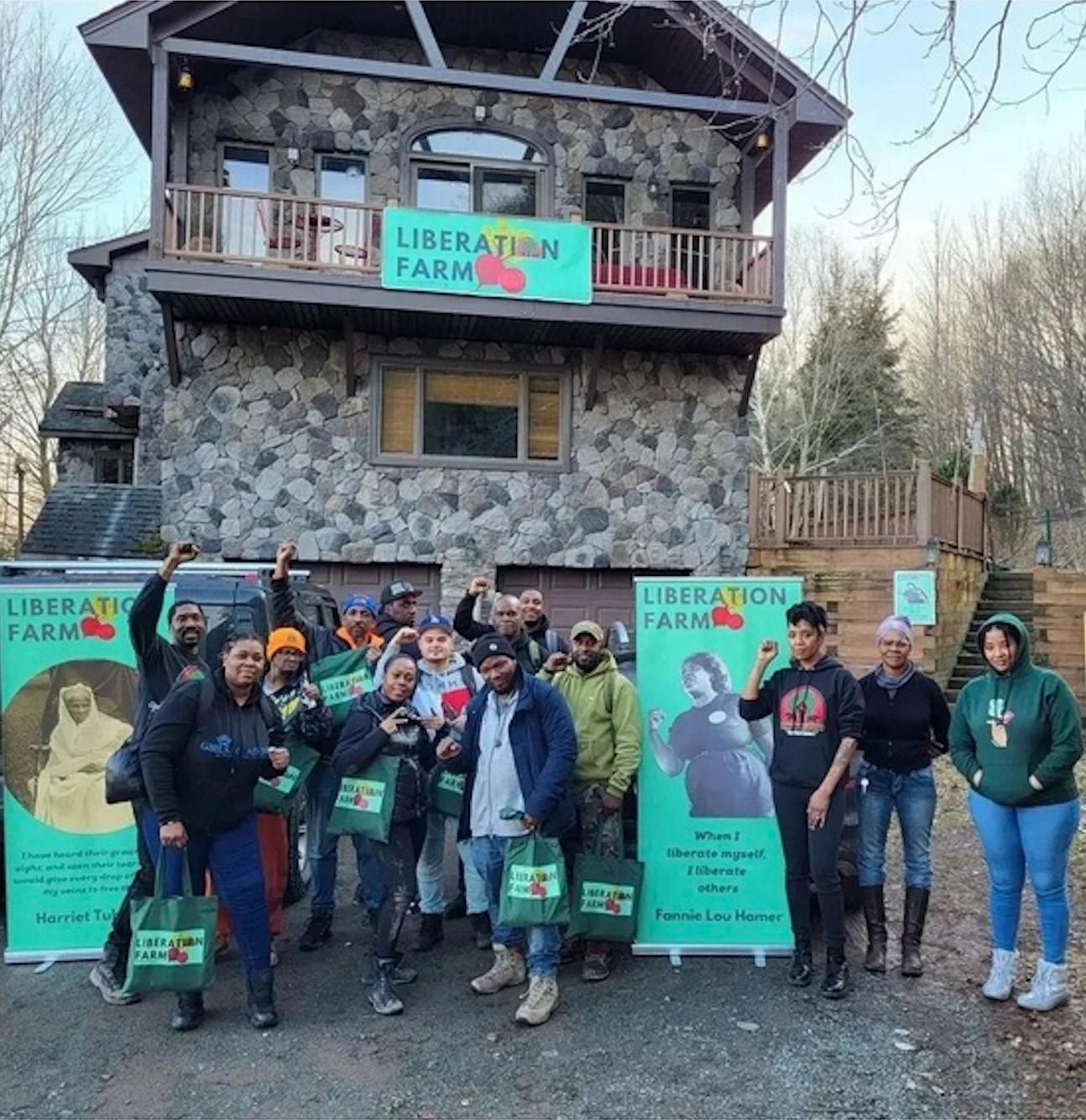
By HERB BOYD Special to the AmNews
Revenge and happiness are feelings constantly at play in Edmond Dede’s opera Morgiane, ou le Sultan d’Ispahan last week at Jazz at Lincoln Center’s Frederick P. Rose Hall. Those impulses, often contending and interrelated, along with a mysterious family secret, drive the world premiere of this opera, putatively the oldest one by an African American composer. Dede, a native of New Orleans (1827-1901), lived his most productive years in France where, in 1887, he composed Morgiane. It has taken 125 years for the opera to finally hit the stage, and after two abbreviated runs elsewhere it received a full performance here in New York City.
A summary of why it has taken so long is a narrative worthy of an opera itself, given the racial obstacles Dede endured during a lifetime when a Black man in the world of classical music was rarely appreciated. Morgiane is a testament of Dede’s talent, and the four-act opera, though limited in production, is a rather timeworn tale of a damsel in distress and family intrigue. Before being betrothed, Amine (Nicole Cabell) is kidnapped by an admiring Sultan (Kenneth Kellogg). In pursuit of her daughter, Morgiane (Mary Elizabeth Wil-
liams) is joined by Ali (Chauncey Packer) Amine’s fiance, and her presumed father Hagi Hassan (Joshua Conyers).
The second act is a travelogue describing a marketplace; no matter how beautiful and fragrant, it leans on a chorus and the thunderous voices of Conyers and Packer’s trilling tenor to carry the drama. Intermittently, Williams’ lilting soprano tones perfectly matched a section of the orchestra where the violas, cellos, bassoon, and flute accompany her. It was reminiscent of a shorter work by Dede that can be seen on YouTube.
By the third act the trio trying to rescue Amine is imprisoned by the Sultan after their disguise as singers goes awry. Even so, they lived up to Ali’s promise “to sing the song of the shepherd.” From the trumpet section comes an explosive fanfare, which means the Sultan is about to command the stage and he praises the prisoners for their harmonious rendition, a salute to them that in Morgiane’s words does not allay his “vile passion.”
Morgiane’s melodic soliloquy is the centerpiece of the final act and discloses why he can’t marry Amine, revealing the family secret, which by this time is only a surprise to the least attentive in the audience. While the plot may be hackneyed, the music is captivating, swelling in a timely manner

to complement the often poetic libretto. Most alluring are the occasional musical references Dede embeds in the score, a surprising piece of syncopation under conductor Patrick Dupre Quigley’s sensitive guidance that is perhaps a nod to the composer’s New Orleans beginnings, and then a symphonic passage much like the
sound of the crowded streets of Paris when Dede arrived there in its glorious heyday. Now that the opera has been rediscovered and getting the exposure it was denied, there may be other works from Dede’s vast repertoire, though he wrote only one opera and to a great degree it’s quite sufficient.
DON'T LET TA X, WATER, OR YOU AND YO U R PROPERTY.
If you owe property tax, water and sewer, emergency repair, or other propertyrelated charges, the City may sell a lien on your property in the upcoming lien sale.
Senior, disabled, and veteran homeowners, and not-for-profit organizations: Your property may qualify for an exemption that removes it from the lien sale. Visit www.nyc.gov/liensale to apply and to learn about other ways to avoid the lien sale.
If you have questions about the lien sale, or to confirm that your property is on the lien sale list, visit www.nyc.gov/liensale or call 311.
Do not delay. Respond today!



The Jazz Gallery, the little jazz club that roars with tomorrow’s legends, presents the Tivon Pennicott Quartet for one night only on Feb. 13, with two shows (7:45 p.m., to be livestreamed, and 9:45 p.m.). Saxophonist and composer Pennicott, who takes the art of playing tenor saxophone to greater heights, along with the spirit of his vocals will be joined, by his quartet of pianist Idris Frederick, bassist Dean Torrey, and drummer Kenn Salters.
Pennicott was a key contributor to three Grammy Award-winning albums, appearing on Esperanza Spalding’s out-of-the box recording “Radio Music Society” (Heads Up International, 2012) and Gregory Porter’s “Liquid Spirit” (Blue Note, 2013) and “Take Me to the Alley” (Blue Note, 2017). He appeared regularly on “The Late Show with Stephen Colbert” as a member of the Stay Human Band with Jon Batiste. He went on to record his “Chronology of a dream: Live at the Village Vanguard” (Verve, 2019) and “Anatomy of Angels” (Verve, 2019) Live at the Village Vanguard.
His evolving sound reflects his playing in the church — that soulful gospel flair with harmonic adventure. Commissioned by the Jazz Gallery for a 2020 residency, his sound is the result of a soulful, sophisticated foundation for groove that he honed in the church, and a penchant for unbound harmonic exploration.
In his current album release, “Roots to Branches” (Dox Records, 2024), Pennicott exhibits the foundation and strength of his Jamaican heritage, with lion swag.
For ticket information, visit jazzgallery.org.
For lovers or those dreaming of love, NEA Jazz Master Dianne Reeves returns to the
Rose Theater (60 Columbus Circle) on Feb. 14 and 15 for her 11th annual Valentine’s Day engagement. Reeves is known for captivating audiences with her hypnotic vocals that highlight her stylistic range and clarity of tone. The five-time Grammy winner will offer treasured standards, songs of romance, and — yes — even heartbreak. It will be two evenings of magical enchantment with an all-star band.
The Detroit-born vocalist is a mesmerizing storyteller, an interpreter of lyrics, whose scat vocal riffs come from an angelic source. Her voice stylings are reminiscent of Dinah Washington. Between 1983 and 1986, Reeves toured as a lead vocalist with Harry Belafonte, who introduced her to West African and West Indian
rhythms that continue to be essential to her varied repertoire. She is a gem to be treasured and a gift in live performance. Shows are each night at 7:30 p.m. For ticket information, visit jazz.org.
On Feb. 15, percussionist/vocalist Eric Frazier makes his way to Sista’s Place (456 Nostrand Avenue) from his longtime residence in Brooklyn, with two shows (8 p.m. and 9:30 p.m.). The Harlem native is a graduate of Boys High and will bring his African rhythms with some Rasta funk and good ol’ Brooklyn soul. He will be joined by saxophonist Patience Higgins, pianist Marcus Persiani, bassist Nori Naraoka, and vocalists Harmony Bartz and Julie Alexander. Frazier’s record-
ings are elements of living in NYC, crossing the genres of jazz, blues, bebop, Reggae, salsa, Calypso, and world music. He has expanded his artistic endeavors to singing, trap drums, and tap dance. Frazier follows the mode of improvisation, so be ready for an experience out of the jazz norm. For reservations, call 718-398-1766.
Percussionist and composer Steven Koon, who infuses extra spice into his melodic percussive arsenal, will lead his Latin Jazz Sextet and feature vocalist Cala Cook for one night only at Dizzy’s jazz club (10 Columbus Circle) for two sets (7 p.m. and 9 p.m.) on Feb. 18.
Kroon’s versatile sextet will include his longtime vibraphonist Bryan Carrett, keyboardist Igor Atalita, flutist Craig Rivers, bassist Donald Spider Nicks, and drummer Diego Lopez. Cook is somewhat of a mainstay with Kroon whose reputation includes having performed with a crosssection of artists from Eric Alexander to Regina Carter, Cyrus Chestnut, and Craig Harris.
In his 20-plus-year career, Kroon’s multi-percussive arsenal was an essential sound for the multi-Grammy Award-winning R&B vocalist Luther Vandross, with whom he spent a length of time on recording and touring. He also had a long stint with NEA Jazz Master Ron Carter while performing with Aretha Franklin and Diana Krall. Kroon has recorded six albums as a leader on his label Kroonatune Records; his most recent is “In Your Dreams.”
Kroon has developed a definitive sound that brings together the many ingredients from his native home of Harlem, along with the early Latin rhythms of Tito Puente, Tito Rodrigues, and Machito, as well as Count Basie, Lester Young, and a little soul.
For more information, contact info@jazz. org or call 212258-9595.

By TANDY LAU Amsterdam News Staff, Report for America Corps Member
Court-based peer navigator supervisor Luis Laureano meets people where they are at. In a literal sense, he mostly approaches them on the first floor of the New York County criminal court after their arraignments. But figuratively, he draws from a “sixth sense” when helping them help themselves.
“Once upon a time, I was in trouble myself,” said Laureano. “It’s an easy step for me to just approach an individual and let him know the services that’s available for him. I don’t worry about the ins and outs of his case. That don’t concern me — what concerns me is the missing piece of the puzzle. Whether he’s homeless, I can provide housing, [or] if he’s hungry, I can provide pantry services. If it’s a Code Blue and I feel that he’s not dressed for the weather, I can always approach him on that level.
“I just want to make sure that everyone that comes out of arraignments is in a comfortable space, mentally as well as physically...because if you [are] not fully in tune with yourself going back into society, that’s when your mind wanders that you decide to want to break the law again.”
The Court-based Navigators are funded by the Manhattan District Attorney’s Office and operated by reentry nonprofit Fortune Society to tackle the mental health crisis in the city’s criminal legal justice system. The initiative largely enlists those with lived experience, deploying them to approach individuals released following an arraignment — when a judge reads them their charges following an arrest.
Rikers Island might house most of the city’s jails, but also serves as the city’s largest mental health provider. The goal is to reach people at arraignment where they are more open to change compared to incarceration or re-arrest.
For example, when navigators approached a man in his early 70s after his arraignment, they learned his family faced food insecurity and connected him to pantry services. Another client initially sought a navigator for housing and addiction services, intending to turn his life around; he was placed in a bed and now eyes educational and vocational training.
Fortune Society CEO Stanley Richards, who is formerly incar-
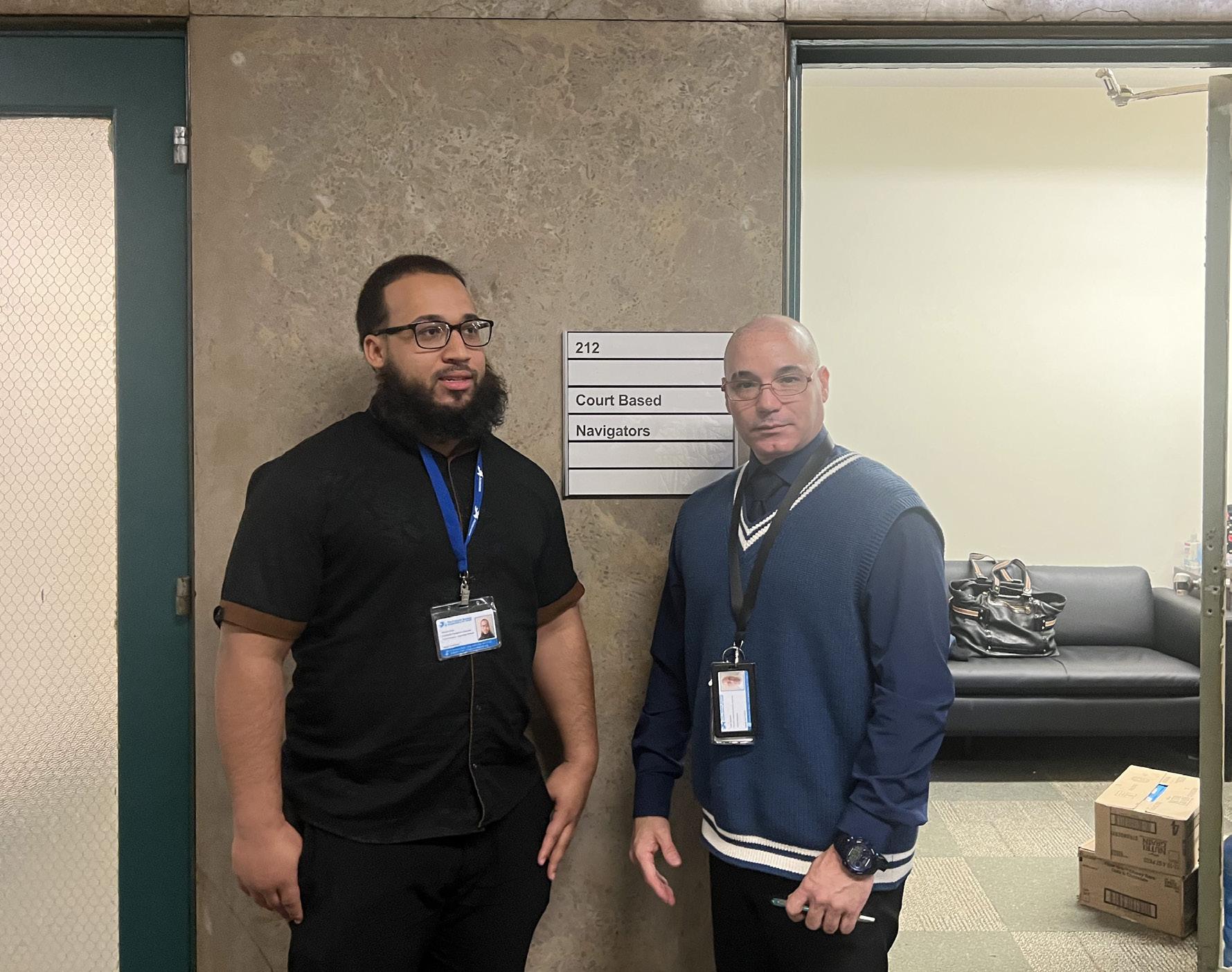
cerated himself, called lived experience the “heart of this program’s success.”
“Our navigators aren’t just professionals; they are peers, mentors, and proof that change is possible,” said Richards over email. “Their experience allows them to connect in ways that traditional service providers often cannot. That trust is what makes this program so powerful. Hiring people with lived experience is not just an act of inclusion — it is a strategic and effective way to reach those who need support the most.”
Pretrial diversion programs traditionally dangle a conditional carrot to defendants, often incentivizing treatment or intervention participation with reduced penalties or deferred adjudication. But no strings are attached with court navigators. They do not involve themselves directly with the criminal charges, although they can connect clients with legal assistance.
“Individuals are released from arraignment, and on a completely voluntary basis, engage with individuals who have lived experience with criminal legal system, homelessness [and] substance use recovery,” said Fortune Society’s
chief program officer Randi Rothschild. “We actually didn’t know if we were going to get so many participants who could, in theory, walk out of arraignments and just leave — either their cases have been dismissed [or] they’ve been released on their recognizance.
“But because of the rapid engagement that our court based navigators have been able to utilize, the amount of participants that we’ve seen has been tremendous.”
Rothschild says the navigators reached 814 different people since they kicked off last August, connecting 50 of them to housing. According to the Manhattan D.A., 381 clients are actively enrolled in services. Navigator Marquis Holley says the program reaches 15-20 people, sometimes more on a busy day.
Laureano himself was coming off a successful placement just moments before speaking with the Amsterdam News. He kept the details confidential, but his excitement over the breakthrough was evident.
“The client just got released [on his own recognizance and] I engaged with him,” said Laureano. “I explained the wraparound services in which we provide. I also
profit The Bridge, which deploys similar outreach on the streets. Another $3 million funds the Courtbased Navigators.
“Advancing public safety and supporting New Yorkers goes hand in hand,” said Bragg in a statement. “By connecting individuals to housing, job opportunities, treatment, and more as soon as they step out of arraignments, our Court Navigators are addressing the underlying drivers of crime and helping to reduce recidivism. We’ve seen how transformative this program has been in such a short amount of time and, although there is still more work to do, I am pleased with the progress we are making together with our partners at the Fortune Society.”
Establishing navigator programs coincides with other city efforts addressing the intersection between mental health and the justice system. But not all of them are as intent on emphasizing the clients’ consent. Mayoral directives in 2022 to proactively employ Kendra’s Law, a New York State law allowing involuntary hospitalization and court-ordered treatment for serious mental illness, drew criticism from organizations like Human Rights Watch.
explained that it’s voluntary. He actually expressed that he was in need of services. So I explained to him the process…he said he was hungry. So we went upstairs. I fed him, sat down, went through the intake process which is, the demographics, a few questions of his past and present and what he wants to do. [I] shot several referrals, and he’s about to get placed in a bed because he’s homeless at the time.”
The navigators operate out of an office on the courtroom’s second floor. Their digs house a fridge stocked with Uncrustables sandwiches and big red crates filled with hygiene kits. Outside, a black SUV parked on the southside street allows navigators to drop off clients at housing and treatment services. Rothschild says 360 meals, 68 hygiene kits, and 32 escorts have been provided to clients since the navigators started.
Manhattan D.A. Alvin Bragg announced funding for two such programs at the end of 2022, his first year as New York county’s top prosecutor. The money comes from cash seized from white collar crime. Neighborhood Navigators received $6 million through non-
Of course, narratives commonly suggest many unhoused individuals willingly choose not to seek services as the law mandates a right-to-shelter in New York City. But those who solicit help through Court-based Navigators do so on their own accord.
“The idea that unhoused individuals routinely refuse services ignores the reality that many have had negative or ineffective interactions with systems that were supposed to help them,” said Richards.
“What we see every day in court is that when a trusted peer — someone who has been through similar struggles — engages them, listens, and offers immediate assistance, they respond. The fact that so many people are voluntarily enrolling in housing and treatment programs is proof that the right approach, with the right messengers, can make a real difference.”
Tandy Lau is a Report for America corps member who writes about public safety for the Amsterdam News. Your donation to match our RFA grant helps keep him writing stories like this one; please consider making a tax-deductible gift of any amount today by visiting https://bit.ly/amnews1
Continued from page 3
“Every shooting shatters multiple lives, but we can end the awful tragedy of gun violence by electing leaders like Alvin Bragg who have the vision and work ethic to bring real change in our neighborhoods,” said Rowe-Adams in a statement. “Alvin takes the time to listen to our experiences and personally understands the impact of gun violence on our community. There is a lot of loud partisan, ideological noise out there all too eager to distort, smear, and lie about Alvin Bragg for their own political motives, but don’t be fooled because facts are facts: Alvin Bragg is making Manhattan safer against deadly gun violence every single day. With his vision, commitment, and leadership, Manhattan can expect overall crime and gun violence to go down even further in Alvin’s second term.”
Bragg has previously been endorsed by Congressmembers Adriano Espaillat, Jerry Nadler, and Dan Goldman,; former Manhattan Borough Presidents Ruth Messinger, C. Virginia Fields, and Gale Brewer; and
Continued from page 3
bility in the Black and Brown community,” said Cean-Owens. “A lot of the individuals in our cohort are Black and Brown, and because they’re in our cohort, I’m hoping that they’re going to be able to advocate by educating and informing these individuals: this is not the way to go. Look at what we’re faced with right now. Look at mass incarceration. Are our streets safer?
“At a time like this, it is important for us to have REFORM Advocacy Institute because we need as many people as possible to share their stories so they can see that the policies we had didn’t work and the policies that you want to push currently may possibly be even worse.”
For Hassan, the work started while still in prison, where he developed a restorative justice network while serving a 15-tolife sentence and receiving rejections from a parole board five times after meeting his minimum sentence before he was finally released. He now shares his experiences for a living through his freelance consulting service Responsible Party Group and is en-
Continued from page 11
“We were requesting the cessation of persecution, the cessation of raids, the cessation of criminalization for not having regularized immigration status,” said activist José Rodríguez of the Dominican Human Rights Committee.
Through Secretary of State Fernando Domenech, González Colón stated that “although the raids against illegal immigrants are initiatives being executed solely by the federal government, the governor convened the federal security component and advocated for the fair treatment of immigrants,
the West Side Democratic Club, Downtown Independent Democratic Club, Martin Luther King, Jr. Club, Tioga Carver Democratic Club, Village Independent Democrats, Uptown Democratic Club, and Grand Street Democrats.
“I’m honored to receive the support of this honored group of distinguished leaders,” said Bragg in a statement. “With clarity of purpose and steadfast commitment to others, they have dedicated themselves to stopping gun violence and saving lives — and I am proud to earn their support.”
Both Bragg and his colleague, Brooklyn DA Eric Gonzalez, are up for reelection this year in a race that does not use ranked choice voting (RCV) to determine a winner.
In Manhattan, DAs tend to get re-elected and often spend several terms in office. Since the 1930s, there have been only five elected DAs. The trend may hold true this year, considering Bragg has virtually no real challengers from Democrats or Republicans.
Continued from page 2
who was already in prison. But they already spent years incarcerated by then.
When the Central Park Five became the Exonerated Five, the men continued championing criminal justice reform.
Yusef Salaam currently holds office in New York City council for Harlem’s district, elected in 2023. Several members, including Richardson, spoke alongside National Action Network’s Rev. Al Sharpton at last year’s Democratic National Convention.
Bronx Prep seniors welcomed Richardson’s advice, particularly given the significant Black and Brown student population. One youngster recently encountered police after school. “I wanted to meet Kevin Richardson, just to know during my rights [for the] time of the position I was in that day, and what I could have done better or what I could have [known] to help myself in that situation,” he said. Others echoed the sentiment.
knowing our rights and how important it is in a minority area,” added Jacob, another student.
Richardson’s diploma helped him receive another honorary degree from his dream college, Syracuse University, in 2020. CPR felt particularly relevant for him as diversity, equity and inclusion curriculum faces national attacks by a Republican administration headed by president who once took out an ad alluding to the Exonerated Five’s execution during the trial (they recently sued Donald Trump over remarks made during a debate).
rolled at Boston College just a year and half since coming home.
But even as he champions criminal justice reform in Red Sox and Celtics country, he remains a proud New Yorker, swapping his REFORM beanie with a classic Yankees knit-cap to his hometown newspaper with a toothy grin before the interview ends.
“I left [as a] child whose mind was not yet developed [and] I left as a criminal,” said Hassan. “I came back as a person who no longer does harm. I came back as a mature man with a developed mind who understands the consequences of his actions. And I came back as part of a peer group with very meaningful and transformative relationships.”
Tandy Lau is a Report for America corps member who writes about public safety for the Amsterdam News. Your donation to match our RFA grant helps keep him writing stories like this one; please consider making a tax-deductible gift of any amount today by visiting https://bit.ly/amnews1
“[What] I’m hoping to learn or take away from this whole experience is how to navigate life as a Black girl in the United States, but also how to interact with law enforcement and defend myself and know the protocols and what to do if I’m ever in a situation where I’m hopefully not arrested, but in the custody of police,” said Minyinta, a senior at Bronx Prep.
“It’s about sending a message to minority kids about the justice system and us

the establishment of protocols in sensitive areas, and for this not to interfere with the procedures of those who comply with the law to obtain their American citizenship.”
According to the U.S. Department of Homeland Security Investigations (HSI), 100 people had been arrested from January 22 to February 4 for violations of immigration laws on the island.
A study by the Dominican Studies Center at the City University of New York (CUNY) found that more than 50,000 Dominicans live in Puerto Rico.
“Even though there’s tough times, but we must push through it,” said Richardson. “And of course, it’s easier said than done, yeah, but unfortunately and fortunately that we are fortunate enough to still be here to experience this and get through it. Because I always say, ‘This too shall pass.’ It might be crucial times, but it will pass if we come collectively as a whole, we can do it together, because it takes a village.”
Tandy Lau is a Report for America corps member who writes about public safety for the Amsterdam News. Your donation to match our RFA grant helps keep him writing stories like this one; please consider making a tax-deductible gift of any amount today by visiting https://bit.ly/ amnews1
Do you spend at least 25% of your time at work engaged in manual labor?
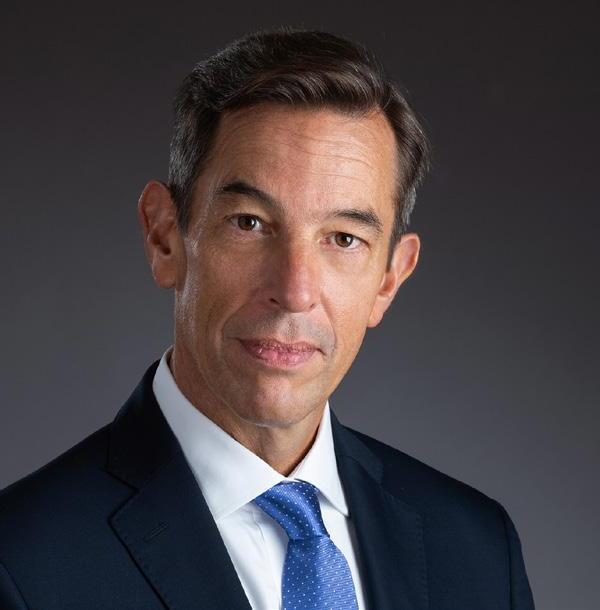
New York Labor Law requires a "manual worker" be paid their wages weekly and not later than seven calendar days after the end of the week in which the wages are earned.
If you are a manual worker and are paid bi-weekly or semi-monthly, you may be entitled to significant compensation for every instance that you were paid late.
The Romero Law Group PLLC represents employees who are subject to discrimination, retaliation and/or harassment because of race, national origin, religion, disability, sex and pregnancy.
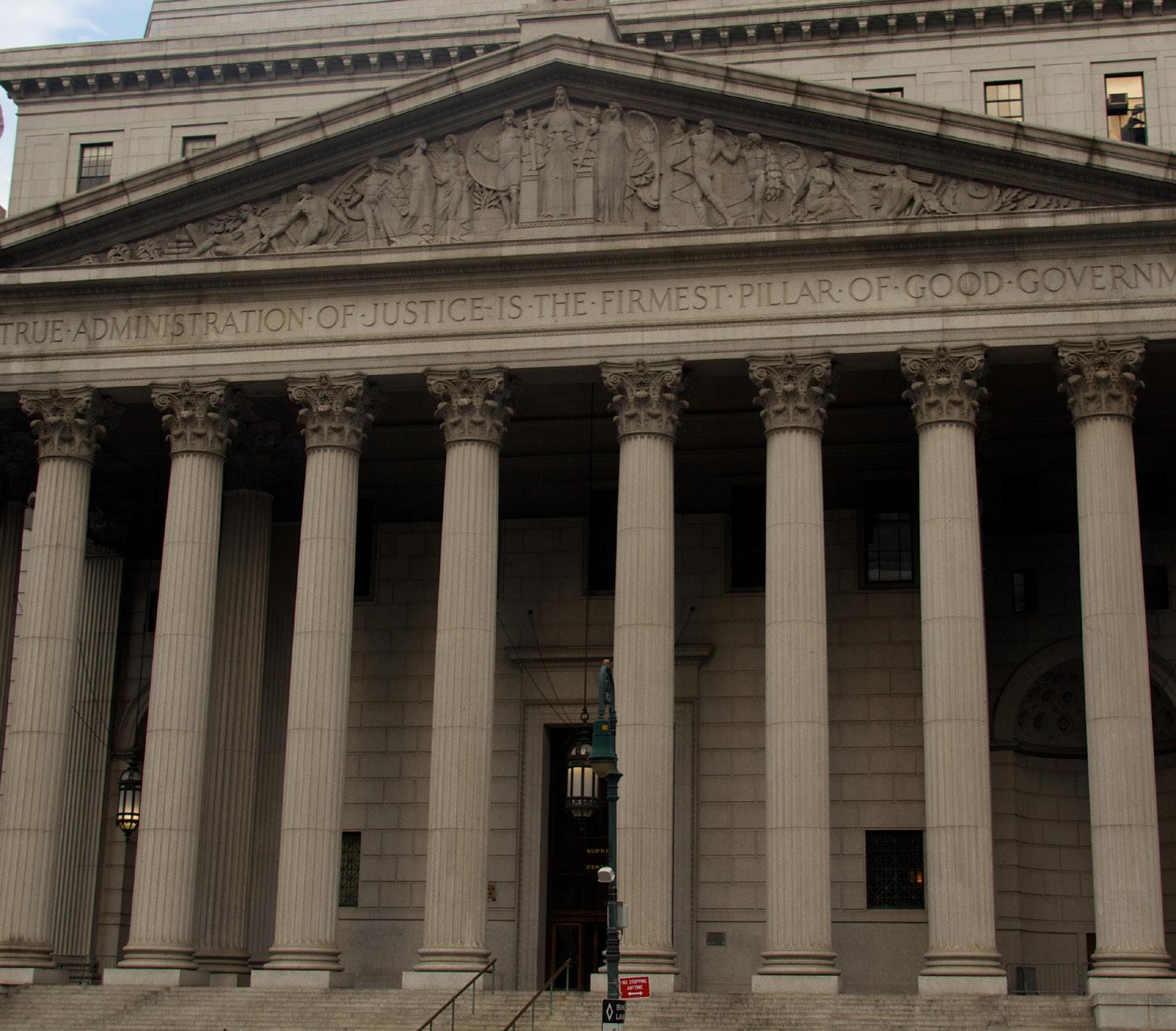
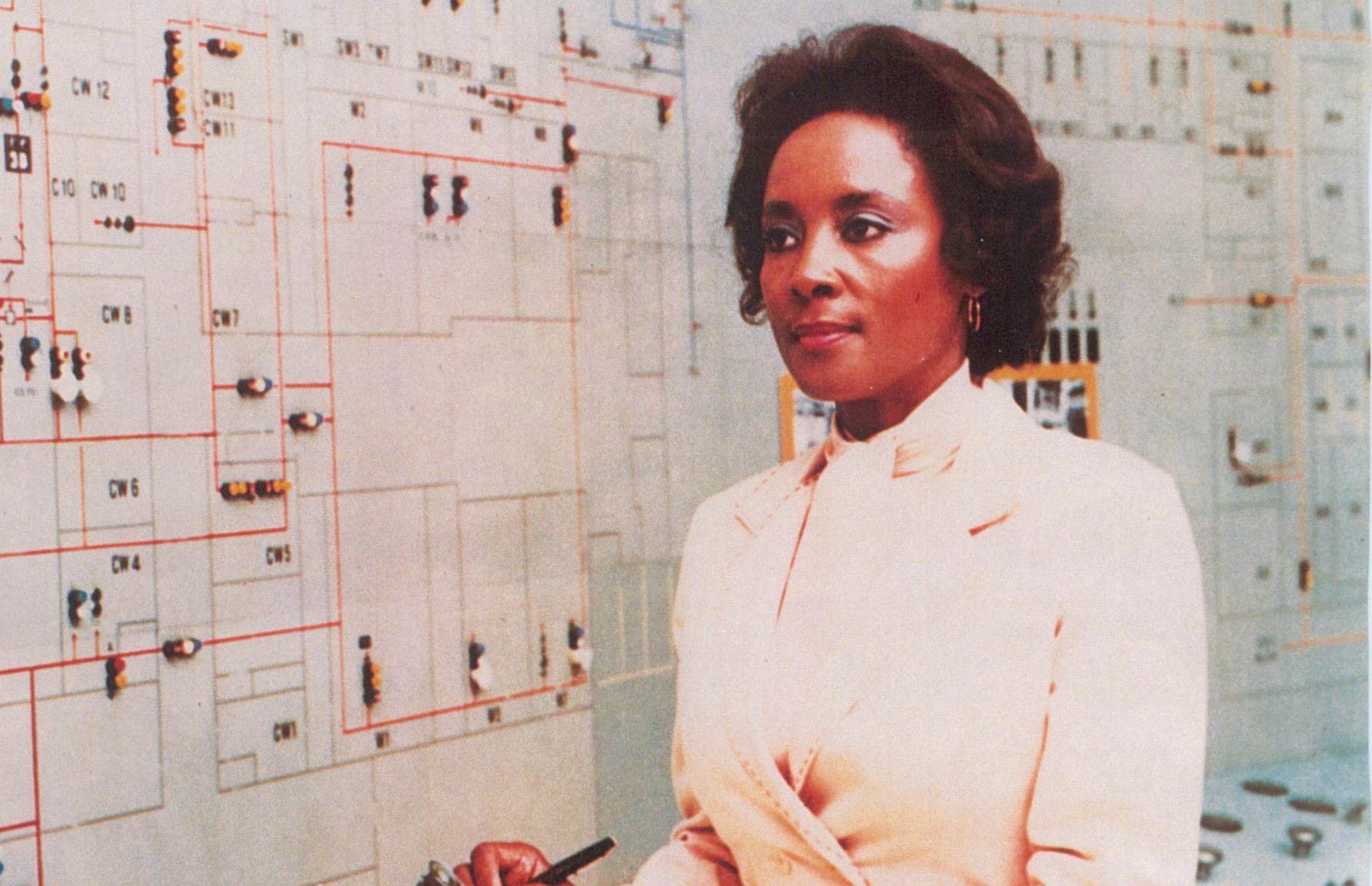
By HERB BOYD
There is a photo of Annie Easley where she resembles Uhura (Nichelle Nichols) of “Star Trek” fame. While they were both beautiful, Easley’s involvement in space was real and not fiction.
In 1962, after the explosion of a rocket that was designed to compete with Soviet advances, NASA scientists and engineers worked fast to compensate for the setback. Easley was part of the team charged with fixing the problem, although she was still in college and not an engineer.
What she brought to the team was a mathematical genius that helped improve the insulation panels and why they were unable to stand the pressure of the flammable combination of liquid hydrogen and liquid oxygen as a propellant. Her background in chemistry and math, to say nothing of an intuitive gift for solving problems, made her an essential
asset to NASA, and another of the heralded “Hidden Figures.”
Annie Jean McCrory was born on April 23, 1933, in Birmingham, Alabama, to Bud and Willie (Sims) McCrory, although in other places, Samuel Bird Easley and Mary Melvina Hoover are listed as her parents. She was valedictorian of her graduating class at Holy Family High School. At first, she dreamed of becoming a nurse, but later switched to pharmacy, inspired in part by watching a pharmacist at a local drugstore. She enrolled in the College of Pharmacy at Xavier University of Louisiana in New Orleans, but after two years in the program, she married Theodia Easley, who was in the military, and they returned to Birmingham. She then worked briefly as a substitute teacher.
In 1955, Easley came across a newspaper story about twin sisters working as “human computers” at a place that was to become NASA, it was then located in Cleveland. She drove to the facility and
applied for a position at the Lewis Research Center. She was just the fourth African American employee there among the 2,500 members of the workforce. She began as a computer programmer, working mainly in the Symbolic Optimal Assembly Program and Formula Translating System (Fortran). Her skills were useful in developing alternative power technology, and subsequently in understanding the function of batteries in hybrid vehicles.
Despite the bigotry and discrimination that persisted in the industry, Easley kept her eyes glued on the prize, and soon it was impossible to ignore how formidable her talents were. Her mother always told her, “You can be anything you want to be, if you work hard enough.”
A year after the 1962 rocket explosion, the team had redesigned the system and there was a successful launch; it inaugurated a new space mission and Easley’s calculations played a critical role. For the next generation, she was
FIND OUT MORE
There are profiles of Annie Easley and her contributions at the Department of Energy Department and at LSU Information Technology Services.
DISCUSSION
We are not sure where to find additional information about her early years, norclarification of her ancestry.
Annie Easley’s name is indelibly fixed in the explorations of the space age — she can be considered among the pioneers of computer science.
part of various initiatives, including Voyager, Pioneer, Viking, and Cassini. The Centaur (upper rocket stage) program she helped perfect was instrumental in nearly every facet of space exploration.
Even while she was indispensable at NASA, Easley earned a degree in mathematics during the 1970s, paying for the classes out of her own pocket, although NASA usually reimbursed their employees.
Toward the twilight of her career, Easley became a model for others, and was vital in NASA’s recruitment program, where she also tutored incoming students and was an onsite counselor for the Equal Employment Opportunity Commission (EEOC), aiding in the elimination of discriminatory practices.
Easley retired after 34 years at NASA. She died in Cleveland on June 25, 2011, at 78. A decade later, the International Astronomical Union named a five-and-half-mile moon crater Hemisphere Easley. She was inducted into the Glenn Research Center Hall of Fame in 2015.
Feb. 9, 1944: Author Alice Walker was born in Eatonton, Georgia.
Feb. 10, 1927: Opera diva Leontyne Price was born in Laurel, Mississippi.
Feb. 11, 1974: Singer/ pianist D’Angelo was born Michael Archer in Richmond, Virginia.
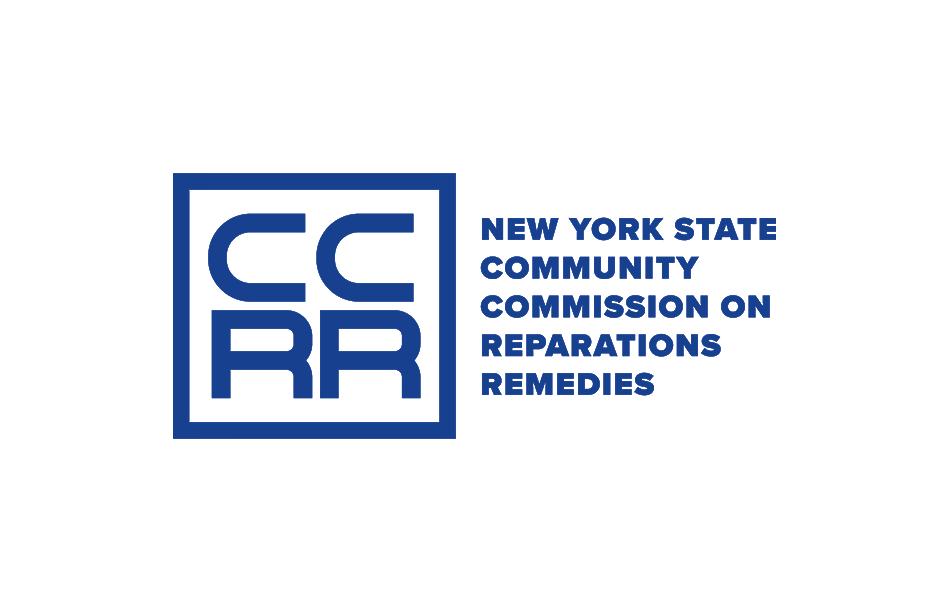




By CHRISTIAN SPENCER Special to the AmNews
February 4 marked the convergence of two observances: World Cancer Day and Black History Month. Carver Federal Savings Bank locations in Harlem and Bed-Stuy were dedicated to honoring this occasion.
For the third year in a row, Carver Bank, the largest Black-owned financial institution, brought prostate cancer screenings to its Black and Brown customers and bystanders in these Black and Caribbean communities. Mobile screening buses for the Prostate-Specific Antigen (PSA) test were parked outside the banks, and Black representatives guided their peers to seek awareness about prostate health.
The event was part of the Blue Jacket Initiative, a series of annual events aimed at raising awareness about prostate cancer, and was sponsored by Johnson & Johnson and the Local Initiatives Support Corp (LISC).
“As an organization dedicated to building stronger, healthier communities, we recognize that keeping our communities thriving means keeping the men in them healthy,”” said LISC President and CEO Michael T. Pugh. “Access to healthcare isn’t just about awareness; it’s about overcoming real barriers. LISC is proud to partner with Zero Cancer and the Blue Jacket Initiative to bring resources ranging from mobile screenings to transportation and community partnerships into the neighborhoods that need them most.”
The Harlem location (75 W. 125th Street) provided informational brochures containing statistical data, with partner organizations like Mount Sinai and ZERO Prostate Cancer represented at tables set up inside.
“With ZERO Prostate Cancer, health equity is a part of our DNA, and everything that we do in saving lives from prostate cancer is focused on ensuring that everyone has the opportunity to detect, treat, and ultimately survive prostate cancer,” said Sherí Barros, CMO and communications officer at ZERO Prostate Center. “What we’re aware of is the fact that, in spite of some of the advances that we’ve made with early detection, we continue to see that there is a disparity in prostate cancer survival relative to African American men.”
ZERO received support from more than 160 groups across the nation, offering peer connections that promoted early detection and treatment of health issues. Many of these groups targeted underserved communities to ensure access to essential resources. The annual caregiver summit also provided support for patients and their loved ones, while its ZERO 360 hotline offered guidance about screening, diagnosis, and treatment options.
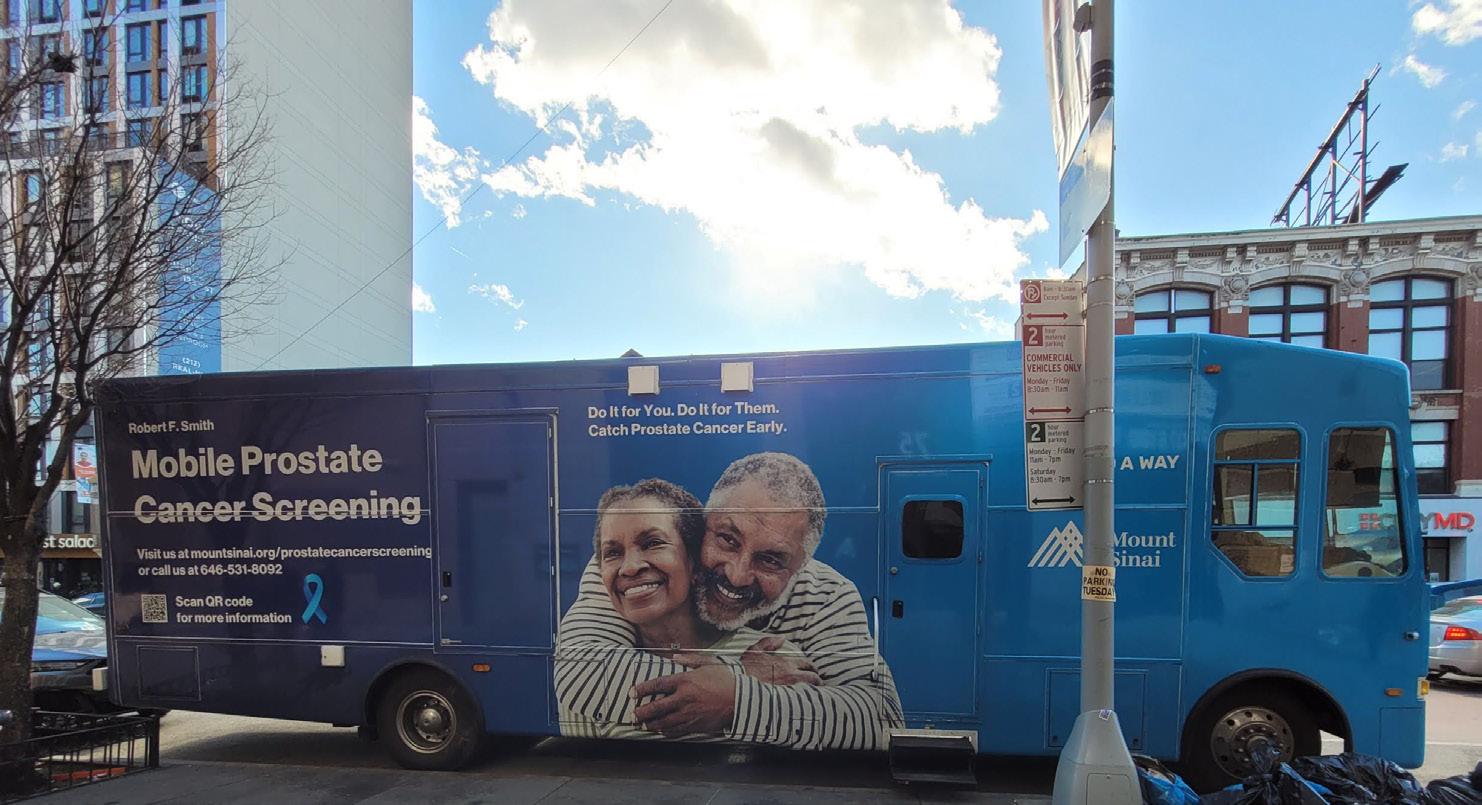
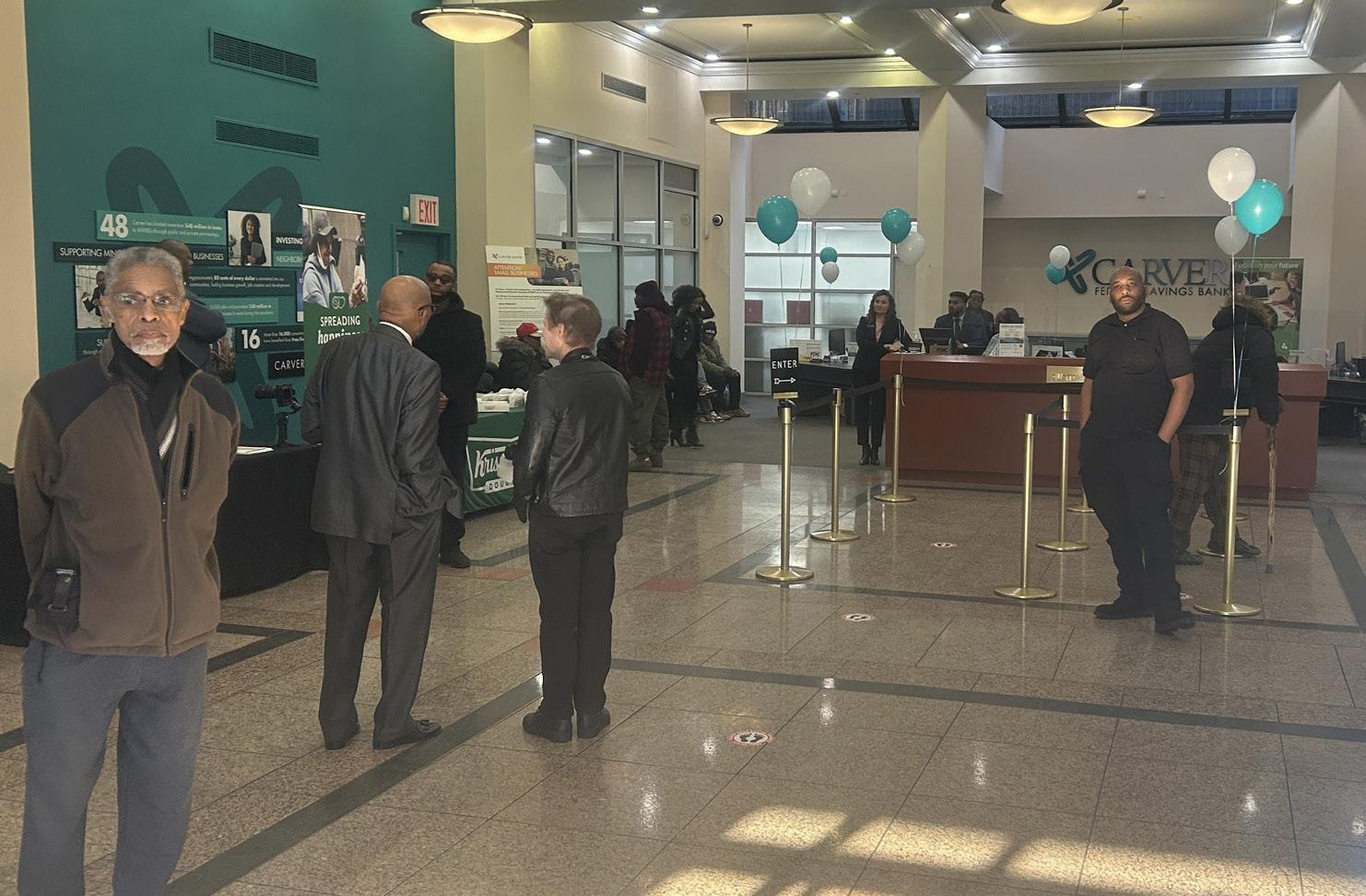
The free screenings helped to combat the early signs of prostate cancer in Black men, of whom are which will affect one in six Black men during their lifetimes, compared to slightly more than the one in eight men in general. The core of the disparity is in the affordability of prostate checks and misinformation.
The goal is “to break down the stigma, quite frankly, around not talking about health, and the importance of what questions to ask your doctor when you’re going in for your physicals — to make sure that you’re checking those PSA numbers to look for any red flags,” Barrios said. “One of the things we do at ZERO: We have three pillars for how we help save lives from prostate cancer.”
Dr. Errol Mallett, a Black urologist affiliated with One Brooklyn Health and NOVEIS Health, told the Amsterdam News that representation played a critical role in how Black men perceived prostate exams.
“Today’s going very well,” Mallett said of the event. “The turnout seems quite impressive, which is the objective: to get the men out to be screened. Prostate cancer is very prevalent in the African American, (and) Afro Caribbean community. Not only is the incidence higher (70%), but the disease seems to be a different kind of cancer than occurs in the general population. It tends to be more aggressive, so therefore, there is more likelihood of significant consequences from prostate cancer in that particular group.”
Mallett noted that while the death rate from prostate cancer had been relatively low and consistent over the years, it remained the second leading cause of cancer death in men. Early screenings can greatly improve survival rates, with men diagnosed at an early stage, with a survival rate of over 99% within a fiveyear timeframe. The optimal age for Black men to start screening early for prostate cancer is 40, according to Mallett.
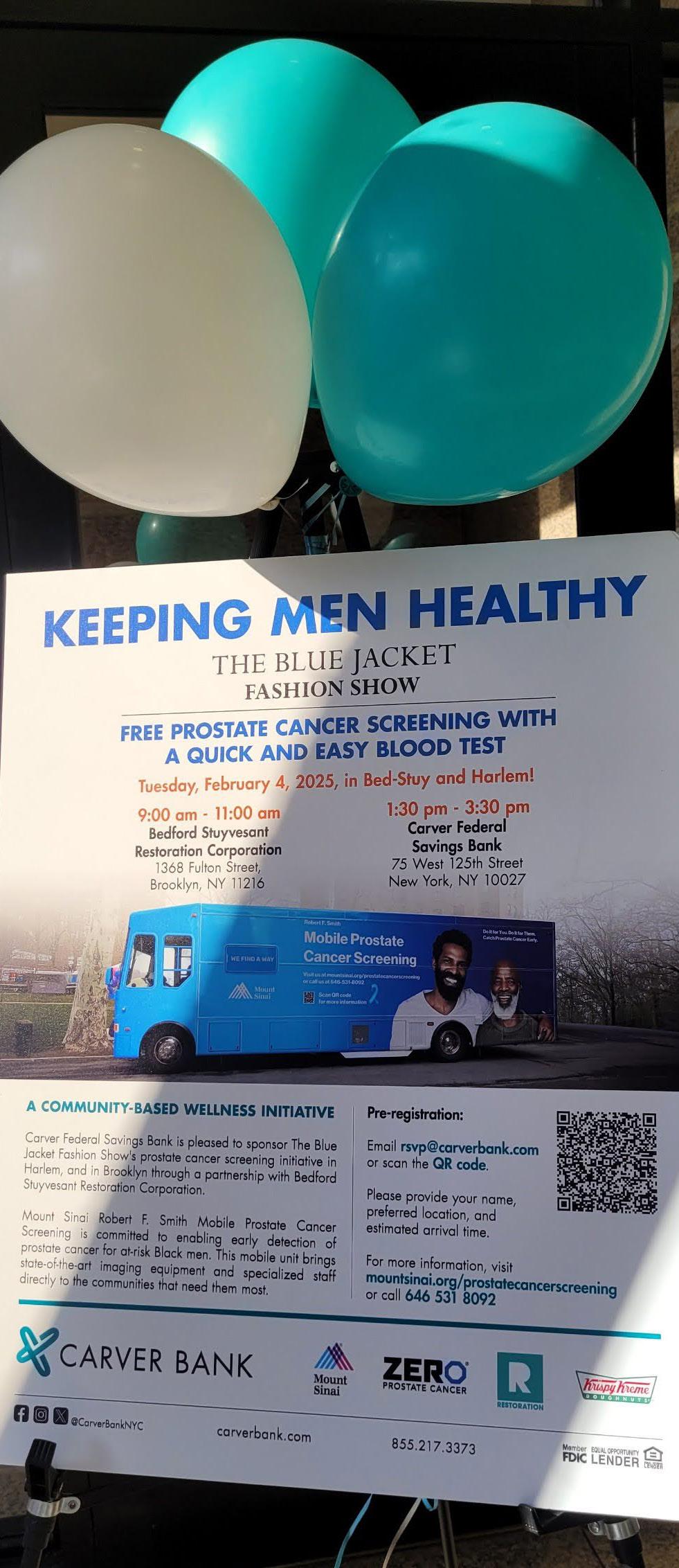
Most of the exam involved blood work, and there was an optional rectal exam — the Digital Rectum Exam (DRE). However, it is advised that both screenings be done together for the most effective detection of prostate cancer.
“This is just another opportunity for Carver Bank to be in the community to deliver a wellness activity for folks (who) reside around our branch,” said Tony Holmes, head of retail banking. “We’re not just about banking services here at Carver Bank. We’re also about community empowerment, community development, community enrichment, and part of that is through health initiatives or things that are not necessarily in the bank’s wheelhouse. Each year, we get more adept at how we get the message out and how we notify and drive awareness to get more people screened. That’s our ultimate goal — our goal here is solely getting the community screened for prostate cancer … how we get that message out in a simple, seamless way is something we’re always thinking about how we can do better.”
State of New York recently voted to support the governor’s proposal to tweak discovery reforms “intended to end procedural delays and prevent automatic dismissals of cases.” An op-ed recently penned by the city’s five district attorneys maintained the proposal is not a rollback or a return to the “Blindfold Law.”
Hochul’s reasoning suggests that the current discovery reform is partially to blame for recidivism and delayed justice for victims. In addition, Manhattan District Attorney Alvin Bragg pointed to the dismissal of a domestic violence case due to a prosecutor turning in a piece of photographic evidence late. His office also told the AmNews that other gender-based charges were thrown out due to submitting evidence late, although the files are sealed following dismissal.
“My common-sense proposal to streamline New York’s discovery laws will close fatal loopholes that have delayed trials and led to cases being thrown out on minor technicalities, which will ultimately help crack down on recidivism and provide justice for victims,” said Hochul. “I am honored to have the full support of the District Attorneys Association of the State of New York as we go about making these changes.”
Discovery reform proponents countered such narratives by scouring the entire New York State Division of Criminal Justice Services dataset to find no rise in dismissals of seri-
ous cases. The Manhattan D.A. attributes such data to pouring more resources toward prosecuting murders and rapes which impacts their ability to collect evidence for other crimes.
Amanda Jack, policy director for Legal Aid Society’s criminal defense practice, said proponents of Kalief’s Law previously rebuffed “quiet” attempts by prosecutors to dial back discovery reform but that she heard further rumblings late last year.
“We decided in early January that if this was really coming, and in a very public way, we wanted to band together publicly as well and form an alliance of the ad hoc group that has been meeting for years to monitor rollbacks, so we launched the Alliance to Protect Kalief’s Law, and did so with the blessing of Akeem Browder,” said Jack.
As “tough-on-crime” narratives reenter the New York City public safety discourse, criminal justice reformers are on high alert. Bail reform laws enacted concurrently with Kalief’s Law were also blamed for crime and recidivism, even as research overwhelmingly refuted such claims. Yet Hochul still successfully pushed for rollbacks on offering judges more discretion with pretrial detention. Browder’s time in jail started after his family could not afford to post $3,000 in bail when he was just 16 years old.
A Manhattan D.A. spokesperson maintains New York state’s discovery laws would remain the most transparent and open in the country despite Hochul’s amendments — judges
could still throw out cases due to prejudicial non-disclosure, or if the failure to share evidence harmed the defendant’s case, she said.
But the D.A. believes allowing other remedies for the defense besides dismissal like an adjournment for non-prejudicial non-disclosures, when the evidence is not relevant to the case and withheld by accident, is needed.
“Thousands of cases are now dismissed annually, for reasons that have nothing to do with fairness or justice,” said the spokesperson in a written statement. “During this legislative session, the Governor and lawmakers can make common sense adjustments to the statute to protect victims of crime, while safeguarding the rights of the accused and maintaining New York’s status as the state with the most open and transparent discovery laws in the nation.”
But Jack sees pressure on the prosecutors to produce all evidence as the most efficient option for defendants, as most individuals convicted do not make trial.
“Some of the frustration here is that we still live in a state where 98% of cases end in pleas,” said Jack. “As a defense attorney, if you give my client the ability to review all of the evidence against them or that the government has amounted against them to support their allegations, we have an easy time deciding if we should plead or go to trial.”
Advocates like Jack believe the only tweak needed to Kalief’s Law stems from the lack of direct access to NYPD databases for the city’s five district attorneys when procuring evidence in a case. Instead, the prosecutors
need to request the evidence, ironically facing delays themselves and affecting their ability to meet the new discovery laws. Jack said patterns of rising misdemeanor dismissals found in the city are absent throughout the state, which points to local factors like the NYPD’s turnaround time for handing over evidence.
In New York City, the overall dismissal rate rose by 48% in 2023 compared to pre-reform, says the Manhattan D.A.
A bill introduced in Albany by State Senator Zellnor Myrie and Assemblymember Micah Lasher would change that. If it passes, the NYPD would be mandated to provide New York City district attorney offices with log-in credentials for their database to make “it easier for prosecutors to comply with New York’s discovery laws.”
In a Daily News op-ed soft-launching the bill, the sponsors expect that “New York’s district attorneys will seek additional changes to the discovery law this year.”
Such legislation offers common ground between those district attorneys and the Alliance to Protect Kalief’s Law because both Alliance members like the Legal Aid Society and prosecutors like Bragg and Brooklyn D.A. Eric Gonzalez back the bill.
Tandy Lau is a Report for America corps member who writes about public safety for the Amsterdam News. Your donation to match our RFA grant helps keep him writing stories like this one; please consider making a tax-deductible gift of any amount today by visiting https://bit.ly/ amnews1.
By OLGA R. RODRIGUEZ, MORIAH BALINGIT, BIANCA VÁZQUEZ TONESS, and JOCELYN GECKER Associated Press
SAN FRANCISCO — As President
Donald Trump cracks down on immigrants in the U.S. illegally, some families are wondering if it is safe to send their children to school.
In many districts, educators have sought to reassure immigrant parents that schools are safe places for their kids, despite the president’s campaign pledge to carry out mass deportations, but fears intensified for some when the Trump administration announced Tuesday that it would allow federal immigration agencies to make arrests at schools, churches, and hospitals. This ends a policy that had been in effect since 2011.
“Oh, dear God! I can’t imagine why they would do that,” said Carmen, an immigrant from Mexico, after hearing that the Trump administration had rescinded the policy against arrests in “sensitive locations.”
She took her two grandchildren, ages 6 and 4, to their school on Wednesday in the San Francisco Bay Area after school officials assured her it was safe.
“What has helped calm my nerves is knowing that the school stands with us and promised to inform us if it’s not safe at school,” said Carmen, who spoke on condition that only her first name be used, out of fear she could be targeted by immigration officials.
Immigrants across the country have been anxious about Trump’s pledge to deport millions of people. While fears of raids did not come to pass on the administration’s first days, rapid changes on immigration policy have left many confused and uncertain about their future.
Several schools said they were fielding calls from worried parents about rumors that immigration agents would try to enter schools, but it was too early to tell whether large numbers of families are keeping their children home.
Missing school can deprive students of more than learning. For students from low-income families, including many immigrants, schools are a primary way to access food, mental health services, and other support.
Tuesday’s move to clear the way for arrests at schools reverses guidance that restricted two federal agencies — Immigration and Customs Enforcement and Customs and Border Protection — from carrying out enforcement in sensitive locations. In a statement, the Department of Homeland Security said: “Criminals will no longer be able to hide in Ameri -
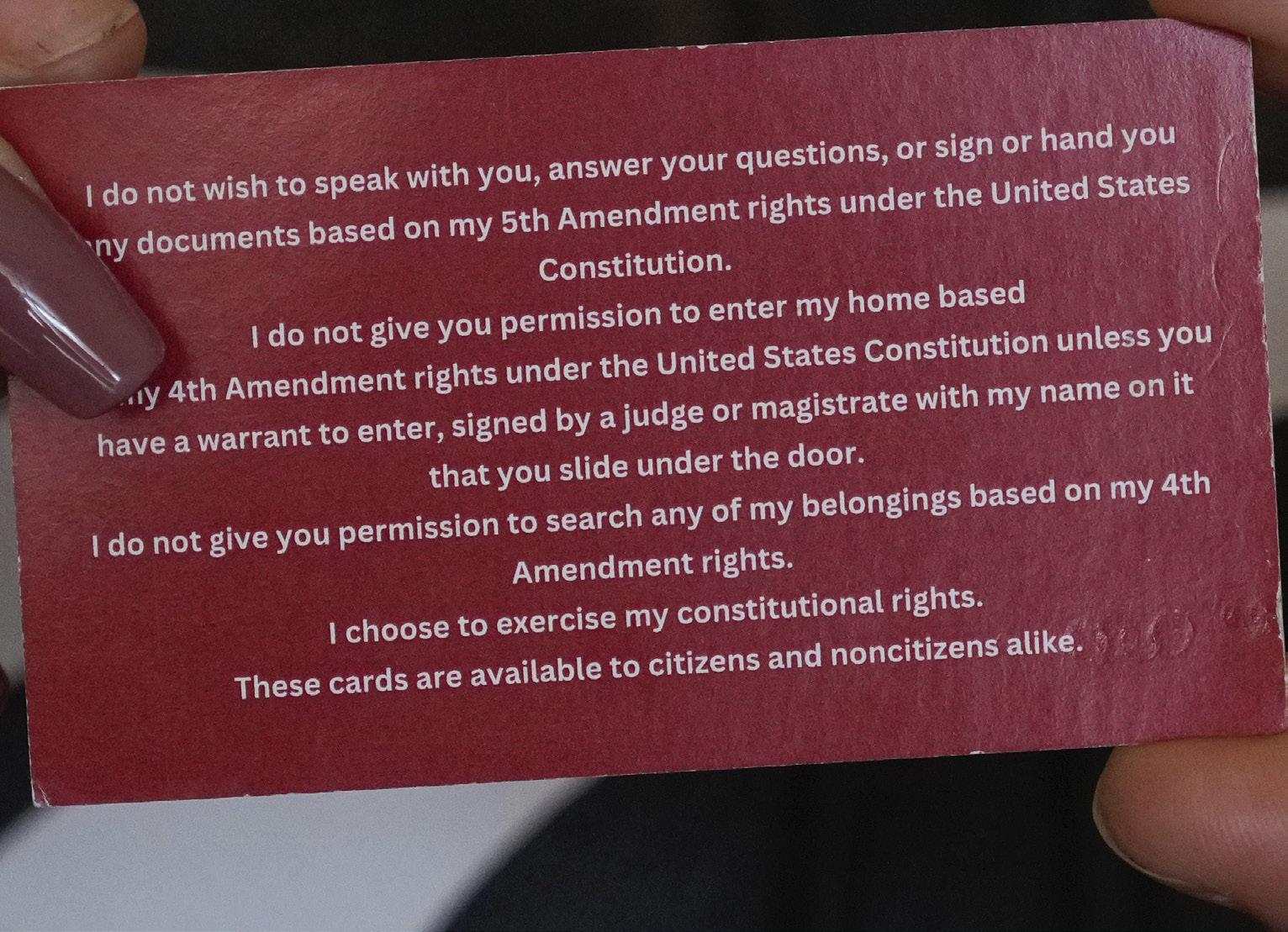
ca’s schools and churches to avoid arrest.”
“It’s horrific,” said Daniela Anello, who heads D.C. Bilingual Public Charter School in the nation’s capital and was shocked by the announcement. “There’s no such thing as hiding anyone. It doesn’t happen, hasn’t happened ... It’s ridiculous.”
In the memo rescinding the policy, Acting Homeland Security Secretary Benjamine Huffman said it was unnecessary to have “bright line rules” dictating where immigration laws can be enforced, but that officers should continue using discretion and “a healthy dose of common sense” about entering sensitive locations, such as schools.
An estimated 733,000 school-aged children are in the U.S. illegally, according to the Migration Policy Institute. Many more have U.S. citizenship but have parents who are in the country illegally.
Schools work to reassure parents
Education officials in some states and districts have vowed to stand up for immigrant students, including their right to a public education. In California, officials have reminded schools of state law limiting local participation in immigration enforcement. New York City schools highlighted policies last month, including one against collecting information about students’ immigration statuses.
A resolution passed by the Chicago Public Schools’ Board of Education in November said schools would not assist ICE in enforcing immigration law.
“We’re trying to simplify for our staff, making it clear we’re just not going to interact with ICE,” said district CEO Pedro
Martinez. He said he anticipated little fallout from a new Justice Department directive to investigate state or local officials blocking the federal crackdown on immigration. If federal agents turn up at any of Chicago’s 633 schools, he said, they will have to present a valid court or judicial order. “Even then, they’re going to have to go through my legal department,” Martinez said.
The district has been stressing to families that school is still the safest place for children. “It’s hard because there is so much noise,” Martinez said. “There’s just a huge megaphone that we’re fighting against.”
That’s not the case everywhere. Many districts have not offered any reassurances to immigrant families.
Educators at the Georgia Fugees Academy Charter School have learned that even students and families in the country legally are intimidated by Trump’s wide-ranging proposals to deport millions of immigrants and roll back non-citizens’ rights. “They’re not even at risk of deportation and they’re still scared,” Chief Operating Officer Luma Mufleh said. Officials at the small Atlanta charter school focused on serving refugees and immigrants expected so many students to miss school the day after Trump took office that educators accelerated the school’s exam schedule so students wouldn’t miss important tests.
Asked on Tuesday for attendance data, school officials did not feel comfortable sharing such information. “We don’t want our school to be targeted,” Mufleh said.
The new policy on immigration en -
forcement at schools are likely to prompt some immigrant parents who fear deportation to keep their children home, even if they face little risk, said Michael Lukens, executive director of the Amica Center for Immigrant Rights. He said he believes it’s part of the administration’s goal to make life so untenable that immigrants eventually leave the United States on their own.
While many U.S. adults are on board with the idea of undertaking some targeted deportations, a shift toward arresting people in the country illegally at places like schools would be highly unpopular, according to a survey from the Associated Press-NORC Center for Public Affairs Research. It found only about 2 in 10 U.S. adults somewhat or strongly favor arresting children who are in the country illegally while they are at school.
School as one of the last safe places For Iris Gonzalez in Boston, schools seem like just about the only safe place for her to go as someone in the country illegally. She’s had children in Boston schools for nearly a decade and doesn’t expect anyone there to bother her or her daughters for proof they’re here legally, so her children will keep going to school. “Education is important,” she said in Spanish.
Gonzalez, who came to the U.S. from Guatemala illegally 14 years ago, does worry about entering a courthouse or driving, even though she has a license. “What if they stop me?” she wondered. “I don’t sleep,” she said. “There’s a lot of uncertainty about how to look for work, whether to keep driving, and what’s going to change.”
Carmen, the Mexican grandmother who now lives in California, said returning home is not an option for her family, who faced threats after her son-in-law was kidnapped from their home in Michoacan state, an area overrun with drug trafficking gangs. Her family arrived two years ago under former President Joe Biden’s program allowing asylum-seekers to enter the U.S. and then apply for permission to stay. After Trump’s inauguration Monday, he promptly shut down the CBP One app that processed these and other arrivals, and has promised to “end asylum” during his presidency.
Carmen has had several hearings on her asylum request, which has not yet been granted. “My biggest fear is that we don’t have anywhere to go back to,” she said. “It’s about saving our lives. And protecting our children.”
Sophia Tareen contributed reporting from Chicago.
In addition to herself, members include Gov. Kathy Hochul, Deputy Speaker Diana Ayala, Department of Health & Mental Hygiene (DOHMH) Interim Commissioner Dr. Michelle Morse, NYC Health & Hospitals (H+H) President and CEO Dr. Mitchell Katz, Greater New York Hospitals Association (GNYHA) Senior Vice President Dr. Erin Dupree, New York State Nurses Association (NYSNA) Vice President Dr. Judith Cutchin, Bronx Health Link Clinical Director Anastasia Libovich, Caribbean Women’s Health Association Executive Director Cheryl Hall, New York Midwives President Helena Grant, New York Midwives Patricia Loftman, Spirit of a Woman Co-Founder & CEO Shawnee Benton Gibson, and saveArose Foundation Co-Founder Bruce McIntyre.
“We can no longer normalize the maternal health disparities seen throughout our city,” said Ayala in a statement. “Addressing inequities requires more than just medical interventions — we must tackle entrenched biases [and] improve culturally competent care and address social factors that undermine maternal health, like mental health, nutrition, opportunity, and access to housing. With the voices of experts and those most affected guiding our work, we will pursue holistic solutions so that every mother, regardless of race, income, or ZIP code, can get the care that they deserve to
keep them safe and healthy.”
McIntyre’s partner, Amber Rose Isaac, 26, died in 2020 giving birth to their son at Bronx’s Montefiore Hospital while in quarantine. The hospital decided to induce labor early and do an emergency C-section without a blood transfusion, which resulted in severe blood loss. Since Isaac’s death, McIntyre has been an outspoken advocate for the Grieving Families Act, which the governor has not passed yet, and opened the Maryam Reproductive Health and Wellness clinic in the Bronx in October 2024.
In the maternal health committee meeting, which was closed to the press, McIntyre spoke about the importance of freestanding birthing centers and Certified Professional Midwives (CPMs) to create more holistic environments for women and pregnant people. “I also spoke a lot about truth and reconciliation from the hospitals, because we see far too often where the hospitals are making these mistakes and instead of taking accountability, they try to hide and cover up as much as they can,” McIntyre said. “It helps the institution point the finger at the patient versus their actual ethics and codes.”
Gibson, who lost her daughter, Shamony Makeba Gibson, from a birth-related complication, said in a statement, “We must move beyond conversation into collective action — with accountability — so that our efforts are not fragmented but fortified. Breaking down silos is essential to this work and real change
requires us to embody the indigenous centered practice of Ubuntu, ‘I Am Because WE Are.’ If we are truly committed to addressing the maternal health crisis in NYC, we must share knowledge, pool resources, and leverage our individual and collective power to
transform policies, institutions, and healthcare systems. This is not just about reform — it is about liberation, restoration, and the birth of a future where equitable reproductive and postpartum care is a fundamental human right for all, not a privilege for a few.”
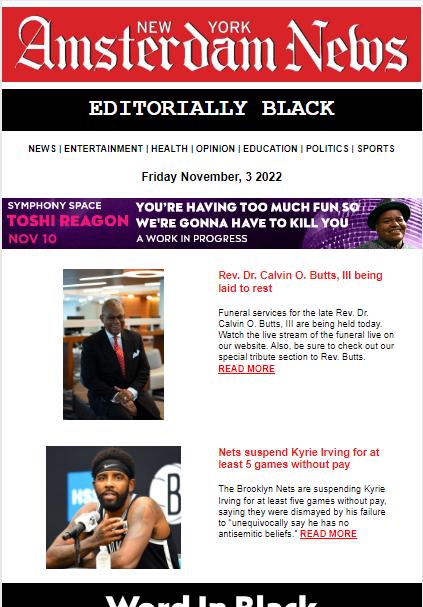
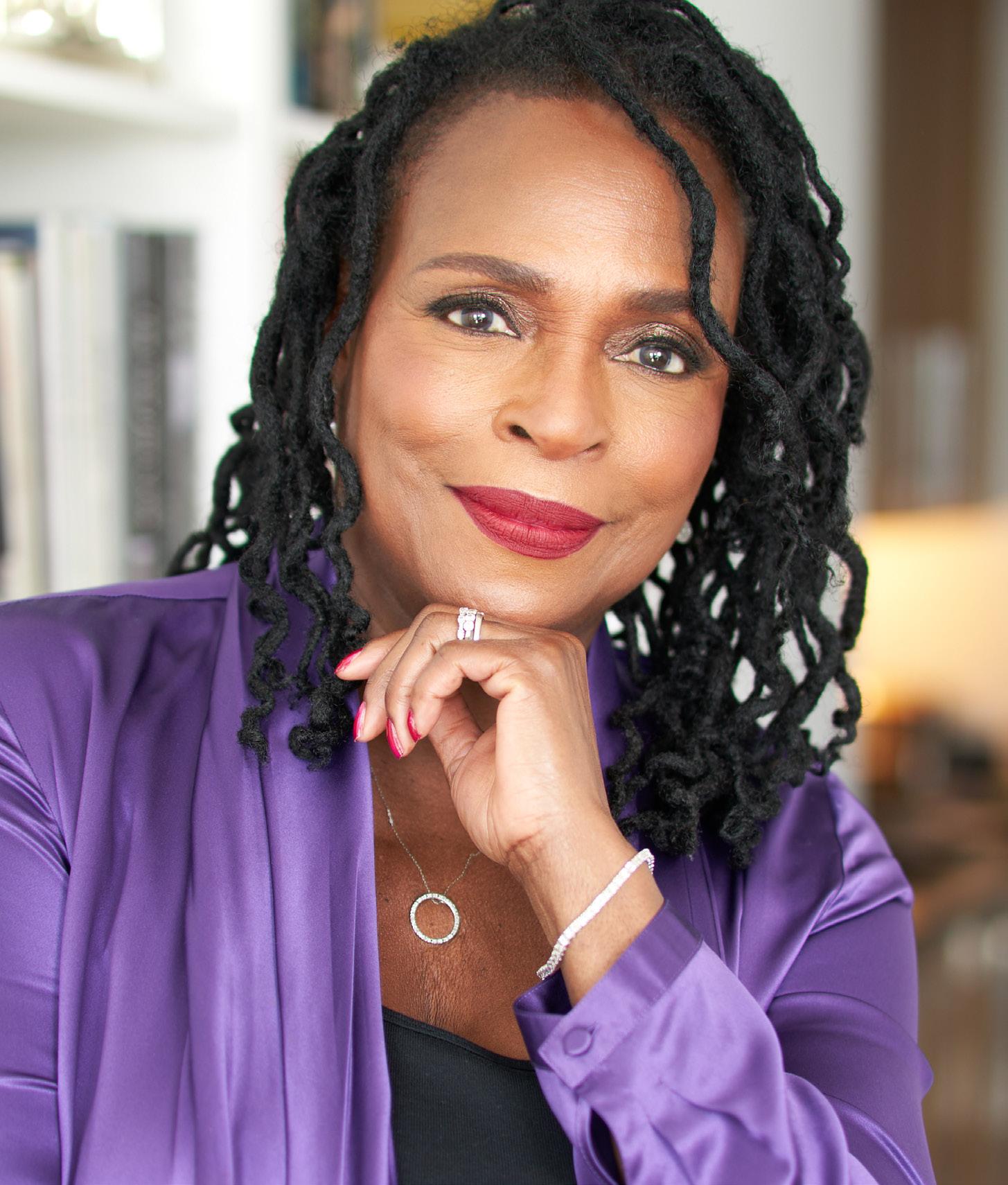


I know — you’re thinking, “What?”
I can’t even begin to put to paper the horrible feeling in the pit of my stomach as we watch the assault on our democracy and on the world, an assault launched by our sitting president and his leadership team. Yes, it is Project 2025, and yes, it is more than that. It is outrageous and I hope each one of us will do what we can — where we can and whenever we can — to comfort those who hurt and to wrap our arms around the vulnerable. And put this number on speed dial! Call Congress and share what you are feeling, witnessing, and hoping at 202-224-3121.
In a talk with one of my colleagues today, Rev. Natalie Renee Perkins, I was reminded of the ways the simple things in our lives can provide us with sustenance and joy even in these hot mess times. Walking her dog — Treble Clef Perkins — in the cold and slushy wetness, breathing deeply and filling her lungs with cold air, and a little rain on her nose made her feel joyful to be alive on the planet. The journey of life matters, she said, not just the destination, and she has made a beautiful life for herself. Hearing her joy — a spontaneous sharing in a quick phone call — I found myself recounting my own joy. Listening to music to put myself to sleep last night, delighting in the jazz and show tunes that made me want to make a living on Broadway (no, I did not get to do that); excitement at getting back to my husband today after a few days apart; the memory of our romping around with grandchildren last weekend. I am furious about the state of our union. And yet, my communities, my friendships, my beloveds, and my work bring me so much joy. We need that joy, love, to make it through. We could feel guilty about the joy, or we could welcome it when it comes and hold onto the taste and texture of it. We can curate the ways it shows up so we can access it more often.
In my book, “Fierce Love,” I wrote a chapter on joy. Chapter eight in this book of nine spiritual practices of fierce love is “Find Joy Purposefully. It is the Water of Life.” I was inspired by the poet Rumi, who wrote, “When you do things from your soul, you feel a river moving in you, a joy.”
I write: “The world can be a hard place,
and our problems can feel daunting. It’s often impossible to laugh or smile with so much horror in the news. But identifying and amplifying things that give you joy will sustain you during the times you’re weighed down by life’s injustices — those aimed at you or at others. Joy is fuel for fierce love.”
Rev. Natalie’s staff meets on Thursdays to look over the week. What is feeding you, they ask? What are you hungry for? I love that audit, that scan of emotional content. I wonder if you and I could do a daily scan. What gave me joy today? If the answer is nothing, that’s just what it is. But if there is something there — by being mindful of it, we appreciate it and know how to source joy more fully next time.
I was at dinner this week with a friend. I like this restaurant because it is close to our WeWork office and because the food is delicious. There was a special — three scallops on roasted potatoes with a little something green and a sweet chili sauce. Oh. My. GOODNESS! Every taste made me thank God for scallops and for chefs and for taste buds and for a friend who loves me enough to listen to me ooh and aah like a child with a lollipop. The conversation was joy, the connection was joy, the longevity of our friendship — the things we know about each other — was joy, and did I mention the scallops were simply divine? What is it for you, love? Biting into a grape and following that with a piece of sharp cheddar cheese? Watching your children play? Playing with your adult friends on the dance floor? Is it sitting in a bathtub soaking, or walking in the cold and loving how your body moves? Is it doing work on any number of the tough issues we are facing and feeling the satisfaction of making a difference?
Don’t get stuck on happiness versus joy. Feel into what I mean by joy. That feeling of freedom, of bounce-back, of contentment, of wonder. Joy is a reservoir of goodness that makes you rock back and forth and hug yourself. It makes you tilt your head back in a full-throated laugh of just hum. Sometimes it’s just peace way deep down in your belly. Mother Teresa said joy is strength.
Whatever is your joy…get some. Pay attention to the source and visit it often; you need it, and you deserve it! Why? Because you are awesome and wonderful, made in the image of the Holy. That’s why!
Jacqui
“Our goal is to make New York City the best place to raise a family,” said Adams at last week’’s presser. “That means keeping money in the pockets of New Yorkers.”
Melissa Pumphrey, senior vice president for Economic Research & Policy at NYCEDC, said some of that COVID recovery is definitely tied to initiatives and policies from the mayor’s office that increased job opportunities for New Yorkers. These include, to name a few, Project labor agreements with labor councils to support fair wages, community hiring, and Minority and Women-owned Business Enterprises (M/WBEs); Future Ready NYC, which connects public high school students to jobs in building, human, and social services; and investments in Summer Youth Employment Program (SYEP).
The not-so-great news: Long-standing challenges will remain in housing costs, lack of affordability, racial disparities in employment, and stubborn gaps between highest and lowest earners. “The rebound from the pandemic in NYC has been extremely lopsided, with most of the wage and income growth being concentrated at the top of the income spectrum. NYC wage growth 2019 to 2024 among the top 5% far exceeds wage gains for everyone else,” said Parrott in a statement. Poverty has risen in both the city and state, with 50% more persons receiving cash assistance in late 2024 compared to 2019, Parrott




said. A stream of economic hardships continues to affect the job market, such as the lack of housing affordability, threat of evictions, and migrant influx.
The NYCEDC noted that some of the nation’s struggle to overcome inflation, interest rates, and gross domestic product (GDP) is beyond the city’s control. The best example would be the unreasonably high price of eggs this month due to the avian flu outbreak. The current “U.S. macroeconomic environment” also has to contend with the new policies of the Trumpa, particularly with regard to taxes and trade. Inflated housing costs, however, are firmly an issue that’s been compounding for decades and the city can do better with long-term solutions, said the NYCEDC.
In a more nuanced conversation about Black jobs, unemployment rates are down across the board for all demographics in the city, but the rest of that statistic is still a “troubling indicator of a very uneven NYC economic recovery” from COVID, said Parrott. Black unemployment in the city rose to 8.5% in 2024, after falling to 7.3% previously. This still marks an overall improvement (down from 10.7% at the start of 2022), but the white unemployment rate averaged just 3.3% over this same period. The labor force participation rate for white New Yorkers was at 67.5% in 2024, which is well above the rates for other races and ethnicities.
The NYCEDC posited that this is because of certain challenges that have a disproportionate impact on the city’s Black workforce, in keeping with national trends of racial bias
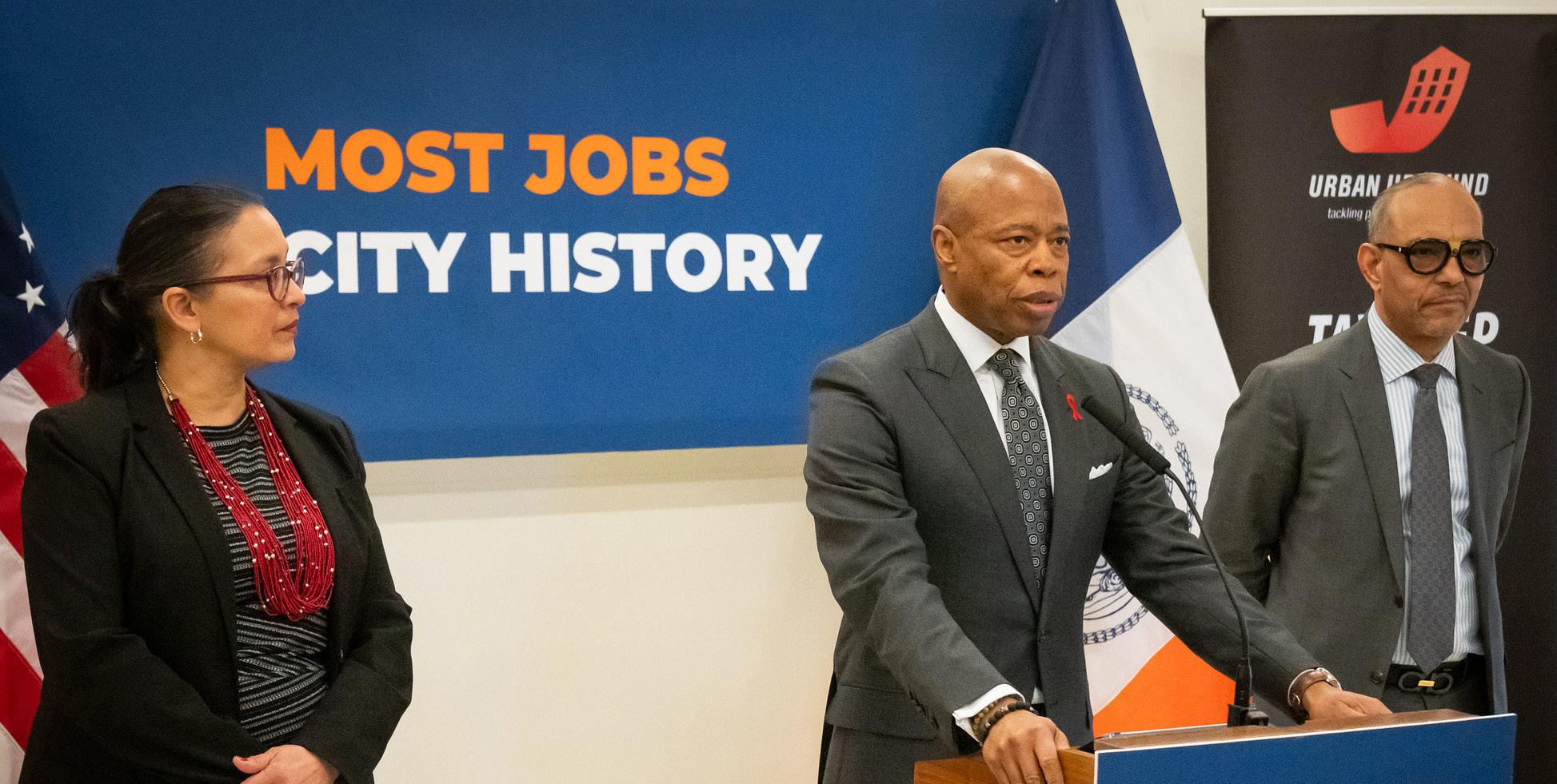
and exclusion. Many Black workers are in sectors with “seasonal hiring patterns,” such as education or transportation. They are also largely represented in sectors that have not recovered from COVID job losses, such as retail and city government. Meanwhile, women represented 60% of the city’s workforce in the industries hardest hit by the pandemic, according to the NYCEDC, many of whom have gone back to work at full force and outpace men in participating in the city’s job market. Those numbers don’t home in on the pay parity issues for Black and Brown women,
though. These women end up in critical jobs like nonprofit organizations, human services, social work, childcare services, and counseling, but are often paid less than their male and white counterparts.
“The tremendous pay inequities that result from those city-funded contracts continue and the city should do a lot more to close the 20% to 30% pay gap between the employees of nonprofit human services providers and their counterparts working for the City of New York,” said Parrott. “This workforce is very well-educated, and predominantly women of color.”



CANCELLATIONS must be made in writing by 12 Noon Monday.
The forwarding of an order is construed as an acceptance of all advertising rules and conditions under which advertising space is sold by the NEW YORK AMSTERDAM NEWS. Publication is made and charged according to the terms of this card.
Rates and regulations subject to change without notice. No agreements as to position or regulations, other than those printed on this.
Til forbid orders charged for rate earned. Increases or decreases in space take the rate of a new advertisement.
The New York AMSTERDAM NEWS reserves the right to censor, reject, alter or revise all advertisements in accordance with its rules governing the acceptance of advertising and accepts no liability for its failure to insert an advertisement for any cause. Credit for errors in advertisements allowed only for first insertion.
CLASSIFIED
• Classified advertisements take the regular earned rate of their classification. Four line minimum on all ads except spirituals and horoscopes (14 lines).
CLASSIFIED DISPLAY
• Classified Display (boarder or picture) advertisements take the regular earned rate of their classification. Display (boarder or picture) advertisements one column wide must be 14 lines deep; two columns, 28 lines deep; 3 columns, 56 lines deep. Classified Display (boarder or picture) placed as close to classifications as rules and makeup permit.
CLASSIFICATIONS
All advertisement accepted for publication is classified according to the standard classifications. Misclassification is not permitted.
BASIS OF CHARGE
Charges are based on point size and characters per line. Upon reaching 15 lines the rate converts to column inch. Any deviation from solid composition such as indentation, use of white space, bold type, etc., will incur a premium.
In Case of error, notify the Amsterdam News 212-932-7440
New York State Consolidated Annual Performance and Evaluation Report Public Comment Period Notice
In accordance with the provisions of the National Affordable Housing Act, the State of New York is making a draft of its Consolidated Annual Performance and Evaluation Report (CAPER) for program year 2024 available for public comment. The CAPER analyzes New York States’ progress in implementing its HUD-approved Annual Action Plan for 2024. The public is invited to review the draft New York State CAPER and to offer comments on the document. The draft 2024 CAPER will be available during the public comment period on the New York State Homes and Community Renewal (HCR) website at www.hcr. ny.gov . In addition, copies can be requested by e-mail at HCRConPln@ hcr.ny.gov or by calling 1-518-486-3452. The public comment period will begin on Wednesday, February 26, 2025, and end on Thursday, March 13, 2025. Written comments must be postmarked no later than March 13, 2025, and addressed to Rachel Yerdon, NYS HCR, Hampton Plaza, 38-40 State Street, Albany, NY 12207. E-mail comments must be sent by that date and e-mailed to: HCRConPln@hcr.ny.gov .
SUPREME COURT COUNTY OF NEW YORK, EMIGRANT FUNDING CORPORATION, Plaintiff, vs. HERSHEY CHAN REALTY, INC., ET AL., Defendant(s).
Pursuant to an Amended Judgment of Foreclosure and Sale and Decision + Order on Motion duly entered on July 14, 2023, an Order Amending Judgment of Foreclosure and Sale dated September 22, 2023 and a Decision + Order on Motion duly entered on October 4, 2024, I, the undersigned Referee will sell at public auction at the New York County Courthouse, room 116, 60 Centre Street, New York, NY 10007 on March 5, 2025 at 2:15 p.m., premises known as 44 Bowery, New York, NY 10002. All that certain plot, piece or parcel of land, with the buildings and improvements thereon erected, situate, lying and being in the Borough of Manhattan, County, City and State of New York, Block 202 and Lot 28. Approximate amount of judgment is $4,103,570.52 plus interest and costs. Premises will be sold subject to provisions of filed Judgment Index #850215/2021.
Scott H. Siller, Esq., Referee Borchert & LaSpina, P.C., 19-02 Whitestone Expressway, Suite 302, Whitestone, New York 11357, Attorneys for Plaintiff
Microassets LLC Arts. of Org. filed with the SSNY on 12/21/2024. Office location: New York County. SSNY has been designated as an agent upon whom process against it may be served & shall mail to: 422 ST Nicholas Ave 4S, New York, NY, 10027 . Purpose: Any lawful act.
Host 1640 LLC Arts. of Org. filed with the SSNY on January 7, 2025. Office location: New York County. SSNY has been designated as an agent upon whom process against it may be served & shall mail to: 605 Third Avenue, 34th Floor, New York, NY. Purpose: Any lawful act.
SUPREME COURT COUNTY OF New York, CITIMORTGAGE, INC., Plaintiff, vs. BERNADETTE LUMAS CODRINGTON, ET AL., Defendant (s).
Pursuant to a Judgment of Foreclosure and Sale duly entered on October 1, 2024, I, the undersigned Referee will sell at public auction at the Room 130 of the New York County Courthouse, 60 Centre Street, New York, NY 10007 on March 19, 2025, at 2:15 PM, premises known as 39 ADRIAN AVENUE, BRONX A/K/A NEW YORK, NY 10463. All that certain plot, piece or parcel of land, with the buildings and improvements thereon erected, situate, lying and being in the City, County and State of New York, Section: 8, Block: 2215, Lot: 290. Approximate amount of judgment is $626,594.45 plus interest and costs. Premises will be sold subject to provisions of filed Judgment Index # 850569/2023.
If the sale is set aside for any reason, the Purchaser at the sale shall be entitled only to a return of the deposit paid. The Purchaser shall have no further recourse against the Mortgagor, the Mortgagee, the Mortgagee's attorney, or the Referee. For Sale information, please visit Auction.com at www.Auction.com or call (800) 280-2832.
CHRISTY DEMELFI, Esq., Referee
Roach & Lin, P.C., 6851 Jericho Turnpike, Suite 185, Syosset, New York 11791, Attorneys for Plaintiff
Notice of Formation of MACONDO 520 FIFTH, LLC Arts. of Org. filed with Secy. of State of NY (SSNY) on 12/24/24. Office location: NY County. Princ. office of LLC: 200 S. Biscayne Blvd., Ste. 1860, Miami, FL 33131. SSNY designated as agent of LLC upon whom process against it may be served. SSNY shall mail process to the LLC at the princ. office of the LLC. Purpose: Any lawful activity.
NOTICE OF SALE
SUPREME COURT - COUNTY OF NEW YORK DEUTSCHE BANK NATIONAL TRUST COMPANY AS TRUSTEE FOR HARBORVIEW MORTGAGE LOAN TRUST 2007-2, Plaintiff, Against HARVEY LEVINE, CAROLE LEVINE, ET AL Defendant(s) Pursuant to a Judgment of Foreclosure and Sale, duly entered 09/13/2024, I, the undersigned Referee, will sell at public auction, in Room 130 at 60 Centre Street, New York, NY 10007 on 2/26/2025 at 2:15PM, premises known as 455 Central Park West, Unit 17B, New York, New York 10025, And Described As Follows:
ALL that certain plot piece or parcel of land, with the buildings and improvements thereon erected, situate, lying and being in the Condominium Unit (Hereinafter Referred To As The "Unit") Known As Unit No. 17B In The Premises Known As 455 Central Park West Condominium, And By The Street Number 455 Central Park West, Borough Of Manhattan, County City And State Of New York. TOGERTHER with an undivided 0.625% percent interest in the Common Elements. Block 01841 Lot 1276
The approximate amount of the current Judgment lien is $3,088,341.91 plus interest and costs. The Premises will be sold subject to provisions of the aforesaid Judgment of Foreclosure and Sale; Index # 850318/2014
Roberta Ellen Ashkin, Esq., Referee.
MCCABE, WEISBERG & CONWAY, LLC, 10 Midland Avenue, Suite 205, Port Chester, NY 10573
Dated: 1/6/2025 File Number: 17-301350 CA
Capture Create LLC Arts. of Org. filed with the SSNY on 31/10/2024. Office location: New York County. SSNY has been designated as an agent upon whom process against it may be served & shall mail to: 1595 Lexington Avenue, #5C, New York, NY, 10029. Purpose: Any lawful act.
NOTICE OF FORMATION of limited liability company (LLC).
Name: JUSTIN STONE INVESTORS LLC f/k/a JONATHAN STONE INVESTORS LLC. Articles of Organization filed with Sec. of State of NY (SSNY) on 12/20/2024. Office location: New York Co. SSNY designated as agent of LLC upon whom process against it may be served and address SSNY shall mail a copy of process is 435 East 65th Street, #12C, New York, NY 10065. Purpose: any lawful purpose.
SUPREME COURT OF THE STATE OF NEW YORK COUNTY OF NEW YORK
WELLS FARGO BANK, NATIONAL ASSOCIATION AS TRUSTEE FOR OPTION ONE MORTGAGE LOAN TRUST 2007-5, ASSET-BACKED CERTIFICATES, SERIES 2007-5, -against-
DONNA FERRATO, ET AL.
NOTICE OF SALE
NOTICE IS HEREBY GIVEN pursuant to a Final Judgment of Foreclosure entered in the Office of the Clerk of the County of New York on May 26, 2022, wherein WELLS FARGO BANK, NATIONAL ASSOCIATION AS TRUSTEE FOR OPTION ONE MORTGAGE LOAN TRUST 2007-5, ASSET-BACKED CERTIFICATES, SERIES 2007-5 is the Plaintiff and DONNA FERRATO, ET AL. are the Defendant(s). I, the undersigned Referee, will sell at public auction at the NEW YORK COUNTY CIVIL SUPREME COURTHOUSE, ROOM 130, 60 CENTRE STREET, NEW YORK, NY 10007, on February 19, 2025 at 2:15PM, premises known as 25 LEONARD ST, APT 3, NEW YORK, NY 10013; and the following tax map identification: 179-1003.
THE CONDOMINIUM UNIT (HEREINAFTER REFERRED TO AS THE “UNIT”) KNOWN AS RESIDENTIAL UNIT NO. 3 IN THE BUILDING (HEREINAFTER REFERRED TO AS THE “BUILDING”) KNOWN AS THE SIMON & MILLS BUILDINGS CO DOMINIUM AND THE STREET NUMBER 25 LEONARD STREET, BOROUGH OF MANHATTAN, CITY, COUNTY AND STATE OF NEW YORK, TOGETHER WITH AN UNDIVIDED 13.50% INTEREST IN THE COMMON ELEMENTS
Premises will be sold subject to provisions of filed Judgment Index No.: 850294/2017. Ronald Zezima, Esq. - Referee. Robertson, Anschutz, Schneid, Crane & Partners, PLLC, 900 Merchants Concourse, Suite 310, Westbury, New York 11590, Attorneys for Plaintiff. All foreclosure sales will be conducted in accordance with Covid-19 guidelines including, but not limited to, social distancing and mask wearing. *LOCATION OF SALE SUBJECT TO CHANGE DAY OF IN ACCORDANCE WITH COURT/CLERK DIRECTIVES.
Emma Havighorst LLC Arts. of Org. filed with the SSNY on 1/12/2025. Office location: New York County. SSNY has been designated as an agent upon whom process against it may be served & shall mail to: 264 Lexington Ave Apt 3B, New York, NY 10016. Purpose: Any lawful act.
Homebody Enterprises LLC Arts. of Org. filed with the SSNY on 12/30/2024. Office location: New York County. SSNY has been designated as an agent upon whom process against it may be served & shall mail to: 230 E 30th St, NY, NY 10016 Purpose: Any lawful act.
NYC M&S TRANSIT LLC Arts. of Org. filed with the SSNY on 11/08/2024. Office location: NEW YORK County. SSNY has been designated as an agent upon whom process against it may be served & shall mail to: 2133 MADISON AVENUE APT 3C, NEW YORK. Purpose: Any lawful act.
Notice of Formation of JOBIM ENTERPRISES LLC Arts. of Org. filed with Secy. of State of NY (SSNY) on 01/14/25. Office location: NY County. Princ. office of LLC: 157 W. 106th St., #5D, NY, NY 10025. SSNY designated as agent of LLC upon whom process against it may be served. SSNY shall mail process to Altman Greenfield & Selvaggi, 200 Park Ave. South, 8th Fl., NY, NY 10003. Purpose: Any lawful activity.
SUPREME COURT-NEW YORK COUNTY- HILTON RESORTS CORP., Pltf. v. ALBERT R. GALANTE and SHERRI S. GALANTE, Individually and as Trustees of the Galante Living Trust, dated December 7, 2005, Defts. - Index # 850277/2024. Pursuant to Judgment of Foreclosure and Sale dated January 9, 2025, I will sell at public auction in Room 130 of the New York County Courthouse located at 60 Centre Street, New York, NY on Thursday, March 13, 2025, at 2:15 pm, an interest of an undivided 0.007716477268565840% tenant in common interest in the timeshare known as CENTRAL PARK VACATIONS SUITES located at 101 West 57th Street, New York, NY. Approximate amount of judgment is $34,607.97 plus costs and interest as of October 9, 2024. Sold subject to terms and conditions of filed Judgment and Terms of Sale which includes annual maintenance fees and charges. Georgia Papazis, Esq., Referee. Cruser, Mitchell, Novitz, Sanchez, Gaston, & Zimet LLP, Attys. for Pltf., 341 Conklin Street, Farmingdale, NY.
OGT CHELSEA LLC filed Arts. of Org. with the Sect'y of State of NY (SSNY) on 11/27/2024. Office: New York County. SSNY has been designated as agent of the LLC upon whom process against it may be served and shall mail process to: c/o David Dobesh, 36 Fairview Ave, Madison, NJ 07940. Purpose: any lawful act.
ReZolve Skincare LLC Arts. of Org. filed with the SSNY on 1/1/2025. Office location: New York County. SSNY has been designated as an agent upon whom process against it may be served & shall mail to: 533 E83rd St, Apt 3A, New York, NY 10028. Purpose: Any lawful act.
LaTeca Hub LLC Arts. of Org. filed with the SSNY on 11/3/2024. Office location: New York County. SSNY has been designated as an agent upon whom process against it may be served & shall mail to: 408 E 73 Street, Apt 3B, New York, NY 10021. Purpose: Any lawful act.
PEPPAS AND PARTNERS, LLC Arts. of Org. filed with the SSNY on 10/29/2024. Office location: New York County. SSNY has been designated as an agent upon whom process against it may be served & shall mail to: 90 Morton Street, Apt. D5, New York, NY, 10014. Purpose: Any lawful act.
This is to announce that the next meeting of the Harlem Children's Zone Promise Academy I Charter School Board of Trustees will occur in person on Tuesday, February 11, 2025, at 4:30 PM. The meeting will be held at 245 West 129th Street.
Quintessence Commerce LLC LLC Arts. of Org. filed with the SSNY on 12/14/2024. Office location: New York County. SSNY has been designated as an agent upon whom process against it may be served & shall mail to: 100 Riverside Blvd Apt 11P, New York, NY10069. Purpose: Any lawful act.
Dream Spirits LLC Arts. of Org. filed with the SSNY on 10/7/24 Office location: NY County. SSNY has been designated as an agent upon whom process against it may be served & shall mail to: 74 W 47th St #400, NY, NY 10036. Purpose: Any lawful act.
Notice of Formation of KATLIN MONTALI CONSULTING LLC Arts. of Org. filed with Secy. of State of NY (SSNY) on 01/13/25. Office location: NY County. SSNY designated as agent of LLC upon whom process against it may be served. SSNY shall mail process to Corporation Service Co., 80 State St., Albany, NY 12207. Purpose: Any lawful activity.
Notice of Formation of GALLERY FOLLY, LLC Arts. of Org. filed with Secy. of State of NY (SSNY) on 01/14/25. Office location: NY County. SSNY designated as agent of LLC upon whom process against it may be served. SSNY shall mail process to Lowenstein Sandler LLP, 1251 Ave. of the Americas, 17th Fl., NY, NY 10020. Purpose: Any lawful activity.
Notice of Formation of SIKLAE HOSPITALITY LLC Arts. of Org. filed with Secy. of State of NY (SSNY) on 01/30/25. Office location: NY County. Princ. office of LLC: 40 East End Ave., Unit 14B, NY, NY 10028. SSNY designated as agent of LLC upon whom process against it may be served. SSNY shall mail process to c/o Duane Morris LLP, Alejandra Vargas, Esq., 230 Park Ave., Ste. 1130, NY, NY 10169-0079. Purpose: Any lawful activity.
SUPREME COURT - COUNTY OF NEW YORK.
NYCTL 2021- A TRUST, AND THE BANK OF NEW YORK
MELLON AS COLLATERAL AGENT AND CUSTODIAN FOR THE NYCTL 2021- A TRUST, Plaintiff -against- WA IDF LLC, et al Defendant(s).
Pursuant to a Judgment of Foreclosure and Sale dated October 16, 2024 and entered on October 17, 2024, I, the undersigned Referee will sell at public auction in Room 130 of the New York County Courthouse, 60 Centre Street New York, NY on March 19, 2025 at 2:15 p.m. premises situate, lying and being in the Borough of Manhattan, City, County and State of New York, known and designated as Block 1949 Lot 48. Said premises known as 541 MANHATTAN AVE, NEW YORK, NY 10027
Approximate amount of lien $47,429.63 plus interest & costs.
Premises will be sold subject to provisions of filed Judgment and Terms of Sale.
Index Number 157666/2022.
TOM KLEINBERGER, ESQ., Referee
Bronster, LLP
Attorney(s) for Plaintiff 156 West 56th Street, Suite 703, New York, NY 10019
SUPREME COURT-NEW YORK COUNTY- HILTON RESORTS CORP., Pltf. v. DANIEL SHIH and BARBIE SHIH, Defts. - Index # 850269/2024. Pursuant to Judgment of Foreclosure and Sale dated January 9, 2025, I will sell at public auction in Room 130 of the New York County Courthouse located at 60 Centre Street, New York, NY on Thursday, March 13, 2025, at 2:15 pm, an interest of an undivided 0.1505136467542480 tenant in common interest in the timeshare known as HNY CLUB SUITES Phase II located at 1335 Avenue of the Americas, New York, NY. Approximate amount of judgment is $146,962.86 plus costs and interest as of October 9, 2024. Sold subject to terms and conditions of filed Judgment and Terms of Sale which includes annual maintenance fees and charges. Georgia Papazis, Esq., Referee. Cruser, Mitchell, Novitz, Sanchez, Gaston, & Zimet LLP, Attys. for Pltf., 341 Conklin Street, Farmingdale, NY.
ROLLO DAIRY BAR LLC Arts. of Org. filed with the SSNY on 11/06/2024. Office location: New York County. SSNY has been designated as an agent upon whom process against it may be served & shall mail to: 190 E 7th St Apt 113, NY, NY 10009. Purpose: Any lawful act.
New York's Finest Logistics LLC Arts. of Org. filed with the SSNY on 01/17/2025. Office location: New York County. SSNY has been designated as an agent upon whom process against it may be served & shall mail to: 7014 13TH Ave Suite 202, Brooklyn NY 11228. Purpose: Any lawful act.
All In For Theatre LLC Arts. of Org. filed with the SSNY on January 7, 2025. Office location: New York County. SSNY has been designated as an agent upon whom process against it may be served & shall mail to: 62 Saint Felix Street, Brooklyn, NY 11217. Purpose: Any lawful act.
SUPREME COURT COUNTY OF NEW YORK, FLUSHING BANK, Plaintiff, vs. CABRERA REALTY CORP., ET AL., Defendant(s).
Pursuant to a Judgment of Foreclosure and Sale and Decision + Order on Motion duly entered on September 23, 2024, I, the undersigned Referee will sell at public auction at the New York County Courthouse, room 116, 60 Centre Street, New York, NY 10007 on February 26, 2025 at 2:15 p.m., premises known as 2184 Amsterdam Avenue, New York, NY 10032. All that certain plot, piece or parcel of land, with the buildings and improvements thereon erected, situate, lying and being in the Borough of Manhattan, County, City and State of New York, Block 2125 and Lot 47. Approximate amount of judgment is $944,009.39 together with interest at the note rate from May 22, 2024 plus interest and costs. Premises will be sold subject to provisions of filed Judgment Index #850134/2019.
Matthew D. Hunter, III Esq., Referee
Lynch & Associates, 464 New York Avenue, Suite 200, Huntington, New York 11743, Attorneys for Plaintiff
NOTICE OF SALE
SUPREME COURT COUNTY OF NEW YORK, LOAN FUNDER LLC, SERIES 31312, Plaintiff, vs. 236 WEST ONE ENTERPRISES INC., ET AL., Defendant(s).
Pursuant to a Judgment of Foreclosure and Sale and Decision + Order on Motion duly entered on September 17, 2024, I, the undersigned Referee will sell at public auction at the New York County Courthouse, room 116, 60 Centre Street, New York, NY 10007 on March 5, 2025 at 2:15 p.m., premises known as 236 West 136th Street, New York, NY 10030. All that certain plot, piece or parcel of land, with the buildings and improvements thereon erected, situate, lying and being in the Borough of Manhattan, County, City and State of New York, Block 1941 and Lot 49. Approximate amount of judgment is $1,541,954.90 plus interest and costs. Premises will be sold subject to provisions of filed Judgment Index #850683/2023.
Clark Whitsett, Esq., Referee
McCarter & English, LLP, 250 W 55th Street, 13th Floor, New York, New York 10019, Attorneys for Plaintiff
Laura Shepard LLC Arts. of Org. filed with the SSNY on 11/24/2024. Office location: New York County. SSNY has been designated as an agent upon whom process against it may be served & shall mail to: 250 W 22nd St, New York, NY 10011. Purpose: Any lawful act.
First Add Water LLC Arts. of Org. filed with the SSNY on 2/1/25. Office location: NY County. SSNY has been designated as an agent upon whom process against it may be served & shall mail to: 420 Central Park West 6D, NY, NY 10025. Purpose: Any lawful act.
NOTICE OF SALE SUPREME COURT NEW YORK COUNTY U.S. BANK TRUST COMPANY, NATIONAL ASSOCIATION, AS TRUSTEE FOR VELOCITY COMMERCIAL CAPITAL LOAN TRUST 2023-3, Plaintiff against SUGAR HILL 473, LLC; BIAGIO BELMONTE, et al Defendant(s) Attorney for Plaintiff(s) McMichael Taylor Gray, LLC, 28 Corporate Drive, Suite 104, Halfmoon, NY 12065. Pursuant to a Judgment of Foreclosure and Sale entered December 12, 2024, I will sell at public auction to the highest bidder at Motion Support Room 130 in the New York Supreme Court, 60 Centre Street, New York, New York 10007 on March 12, 2025 at 2:15 PM. Premises known as 453 West 140th Street, New York, NY 10031. Block 2057 Lot 138. All that certain plot, piece or parcel of land, situate, lying and being in the Borough of Manhattan, City, County and State of New York. Approximate Amount of Judgment is $2,648,459.02 plus interest, fees, and costs. Premises will be sold subject to provisions of filed Judgment Index No 850143/2024. The foreclosure sale will be conducted in accordance with 1st Judicial District's Covid-19 Policies and foreclosure auction rules. The Referee shall enforce any rules in place regarding facial coverings and social distancing. Referee will only accept a certified bank check made payable to the referee. Roberta Ashkin, Esq., Referee File # 24-000687-01
SUPREME COURT - COUNTY OF NEW YORK
JG FUNDING CORP., Plaintiff -against- 1363 FIRST OWNER LLC; 453 EAST 83RD STREET LLC; PERL WEISZ; CHESKIE WEISZ; NEW YORK CITY ENVIRONMENTAL CONTROL BOARD; NEW YORK CITY DEPARTMENT OF TAXATION; NEW YORK STATE DEPARTMENT OF TAXATION AND FINANCE; SHARESTATES INVESTMENTS, LLC; LEVON CAPITAL LLC; “JOHN DOE #1” through “JOHN DOE #99,”, Defendant(s). Pursuant to a judgment of foreclosure and sale dated October 4, 2024 and entered on October 15, 2024, I, the undersigned Referee will sell at public auction in Room 130 at the portico of the New York County Courthouse located at 60 Centre Street, New York, NY on March 12, 2025 at 2:15 p.m., the premises known as 1363 1ST AVENUE, NEW YORK, NY 10021; Block 1448, Lot 24 and 453 E 83RD STREET, NEW YORK, NY 10028; Block 1563, Lot 121 as more fully described in the complaint and Judgment. Approximate amount of lien $7,490,500.00 plus interest and costs
Premises will be sold subject to provisions of filed Judgment and Terms of Sale.
Index Number 850430/2023
ELAINE SHAY, ESQ., Referee MENASHE AND LAPA LLP, ATTORNEY(S) FOR PLAINTIFF
400 RELLA BLVD., SUITE 190, SUFFERN, NY 10901
DATED: January 27, 2025
This is to announce that the next meeting of the Harlem Children's Zone Promise Academy II Charter School Board of Trustees will occur in person on Tuesday, February 11, 2025, at 4:30 PM. The meeting will be held at 245 West 129th St, NY, NY.
REFEREE'S NOTICE OF SALE IN FORECLOSURE
SUPREME COURT - COUNTY OF NEW YORK
U.S. BANK NATIONAL ASSOCIATION, AS SUCCESSOR TRUSTEE TO BANK OF AMERICA, N.A., AS SUCCESSOR TO LASALLE BANK, N.A. AS TRUSTEE FOR THE STRUCTURED ASSET INVESTMENT LOAN TRUST, MORTGAGE PASS-THROUGH CERTIFICATES, SERIES 2003BC8, Plaintiff - against - WILLIAM F. BRADY A/K/A WILLIAM BRADY, et al Defendant(s).
Pursuant to a Judgment of Foreclosure and Sale entered on September 25, 2024. I, the undersigned Referee will sell at public auction in Room 130 of the New York County Courthouse located at 60 Centre Street, New York, New York 10007 on the 19th day of March, 2025 at 2:15 PM. All that certain plot, piece or parcel of land, situate, lying and being in the Borough of Manhattan, City, County and State of New York.
Premises known as 235 East 40 Street a/k/a 230/240 East 41 Street Apt/Unit 41H, New York, (City of New York) NY 10016. (Block: 1314, Lot: 1366)
Approximate amount of lien $641,482.96 plus interest and costs.
Premises will be sold subject to provisions of filed judgment and terms of sale.
Index No. 850171/2019. Scott H. Siller, Esq., Referee.
Davidson Fink LLP
Attorney(s) for Plaintiff
400 Meridian Centre Blvd, Ste 200
Rochester, NY 14618
Tel. 585/760-8218
For sale information, please visit Auction.com at www.Auction. com or call (800) 280-2832
Dated: November 1, 2024
During the COVID-19 health emergency, bidders are required to comply with all governmental health requirements in effect at the time of sale including but not limited to, wearing face coverings and maintaining social distancing (at least 6-feet apart) during the auction, while tendering deposit and at any subsequent closing. Bidders are also required to comply with the Foreclosure Auction Rules and COVID-19 Health Emergency Rules issued by the Supreme Court of this County in addition to the conditions set forth in the Terms of Sale
Notice of Qualification of VANTAGE EQUITY PARTNERS LLC. Authority filed with NY Secy of State (SSNY) on 12/10/24. Office location: New York County. LLC formed in Delaware (DE) on 1/5/24. SSNY is designated as agent of LLC upon whom process against it may be served. SSNY shall mail process to: 1907 Back St, Sullivans Isl., SC 29483. DE address of LLC: 1209 Orange St, Wilmington, DE 19801. Cert. of Formation filed with DE Secy of State, 401 Federal St, Ste 4, Dover, DE 19901. Purpose: any lawful activity.
Notice of formation of RMG PRODUCTIONS, LLC. Articles of Organization filed with the Secretary of State of New York (SSNY) on 01/15/2025. Office located in NEW YORK. SSNY is designated for service of process. SSNY shall mail a copy of any process served against the LLC to 10 TIMES SQUARE 3RD FLOOR, SUITE 3101, NEW YORK, NY, 10018, USA Purpose: any lawful purpose.
Notice of Formation of NomadE28 LLC Arts. of Org. filed with Secy. of State of NY (SSNY) on 01/30/25. Office location: NY County. Princ. office of LLC: 1040 First Ave., Ste. 343, NY, NY 10022. SSNY designated as agent of LLC upon whom process against it may be served. SSNY shall mail process to Pierre Martin at the princ. office of the LLC. Purpose: Any lawful activity.
Notice of Formation of RJMD HOLDINGS III LLC Arts. of Org. filed with Secy. of State of NY (SSNY) on 01/30/25. Office location: NY County. Princ. office of LLC: 201 W. 79th St., NY, NY 10024. SSNY designated as agent of LLC upon whom process against it may be served. SSNY shall mail process to the LLC at the addr. of its princ. office. Purpose: Any lawful activity.
174 PARK OPS LLC. Arts. of Org. filed with the SSNY on 08/09/24. Office: New York County. SSNY designated as agent of the LLC upon whom process against it may be served. SSNY shall mail copy of process to the LLC, 250 West 26th Street, New York, NY 10001. Purpose: Any lawful purpose.
Notice of Formation of WILLETTS-NYC, LLC Arts. of Org. filed with Secy. of State of NY (SSNY) on 02/06/25. Office location: NY County. SSNY designated as agent of LLC upon whom process against it may be served. SSNY shall mail process to the LLC, c/o Michael DeRose, 272 Water St., Ste. #2F2R, NY, NY 10038. Purpose: Any lawful activity.
Notice of Formation of 505 WEST 168TH REALTY, LLC Arts. of Org. filed with Secy. of State of NY (SSNY) on 06/26/17. Office location: NY County. SSNY designated as agent of LLC upon whom process against it may be served. SSNY shall mail process to Fischer Porter & Thomas, P.C., Attn: Arthur "Scott" L. Porter Jr., Esq., 560 Sylvan Ave., Ste. 3061, Englewood Cliffs, NJ 07632. Purpose: Any lawful activity.
Notice of Qualification of NONIGHTER LLC Appl. for Auth. filed with Secy. of State of NY (SSNY) on 12/24/24. Office location: NY County. LLC formed in Delaware (DE) on 08/21/24. SSNY designated as agent of LLC upon whom process against it may be served. SSNY shall mail process to Corporation Service Co., 80 State St., Albany, NY 12207-2543. DE addr. of LLC: 251 Little Falls Dr., Wilmington, DE 19808. Cert. of Form. filed with Secy. of State, John G. Townsend Bldg., 401 Federal St., Ste. 4, Dover, DE 19901. Purpose: Any lawful activity.
Notice of Formation of 109 DUCK POND LANE LLC Arts. of Org. filed with Secy. of State of NY (SSNY) on 02/04/25. Office location: NY County. SSNY designated as agent of LLC upon whom process against it may be served. SSNY shall mail process to Arthur S. Penn, 980 5th Ave., Apt. 21B, NY, NY 10075. Purpose: Any lawful activity.
Notice of Qualification of MAGOON, LLC Appl. for Auth. filed with Secy. of State of NY (SSNY) on 10/08/24. Office location: NY County. LLC formed in Colorado (CO) on 07/14/22. SSNY designated as agent of LLC upon whom process against it may be served. SSNY shall mail process to New York Department of State, Division of Corporations, One Commerce Plaza, 99 Washington Avenue, Albany, NY 12231. CO addr. of LLC: 50 S Steele St., Ste 420, Denver, CO 80209. Cert. of Form. filed with Secy. of State of CO, 1700 Broadway, Suite 550, Denver, CO 80290. Purpose: Any lawful activity.
Notice of Qualification of AP CREDIT SOLUTIONS FUND II AIV (DC), LLC Appl. for Auth. filed with Secy. of State of NY (SSNY) on 01/08/25. Office location: NY County. LLC formed in Delaware (DE) on 12/26/24. Princ. office of LLC: Attn: General Counsel, 9 W. 57th St., 43rd Fl., NY, NY 10019. SSNY designated as agent of LLC upon whom process against it may be served. SSNY shall mail process to the LLC at the princ. office of the LLC. DE addr. of LLC: c/o Corporation Service Co., 251 Little Falls Dr., Wilmington, DE 19808. Cert. of Form. filed with The Secy. of State of the State of DE, Dept. of State, Div. of Corps., John Townsend Bldg., Dover, DE 19901. Purpose: Any lawful activity.
Notice of Qualification of RKF RETAIL HOLDINGS LLC Appl. for Auth. filed with Secy. of State of NY (SSNY) on 01/13/25. Office location: NY County. LLC formed in Delaware (DE) on 08/15/05. Princ. office of LLC: 125 Park Ave., NY, NY 10017. SSNY designated as agent of LLC upon whom process against it may be served. SSNY shall mail process to Corporation Service Co. (CSC), 80 State St., Albany, NY 122072543. DE addr. of LLC: c/o CSC, 251 Little Falls Dr., Wilmington, DE 19808. Cert. of Form. filed with Secy. of State, John G. Townsend Bldg., 401 Federal St., Ste. 4, Wilmington, DE 19901. Purpose: Any lawful activity.
Notice of Qualification of GRITZY, LLC Appl. for Auth. filed with Secy. of State of NY (SSNY) on 01/28/25. Office location: NY County. LLC formed in Delaware (DE) on 01/22/25. Princ. office of LLC: 11 Park Pl., 3rd Fl., NY, NY 10007. SSNY designated as agent of LLC upon whom process against it may be served. SSNY shall mail process to Corporation Service Co. (CSC), 80 State St., Albany, NY 12207-2543, regd. agent upon whom and at which process may be served. DE addr. of LLC: c/o CSC, 251 Little Falls Dr., Wilmington, DE 19808. Cert. of Form. filed with DE Secy. of State, 401 Federal St., Ste. 4, Dover, DE 19901. Purpose: Any lawful activity.
Notice of Qualification of AP CREDIT SOLUTIONS HOLDINGS (AIV) II, L.P. Appl. for Auth. filed with Secy. of State of NY (SSNY) on 01/08/25. Office location: NY County. LP formed in Delaware (DE) on 12/26/24. Princ. office of LP: Attn: General Counsel, 9 W. 57th St., 43rd Fl., NY, NY 10019. Duration of LP is Perpetual. SSNY designated as agent of LP upon whom process against it may be served. SSNY shall mail process to the Partnership at the princ. office of the LP. Name and addr. of each general partner are available from SSNY. DE addr. of LP: c/o Corporation Service Co., 251 Little Falls Dr., Wilmington, DE 19808. Cert. of LP filed with The Secy. of State of the State of DE, Dept. of State, Div. of Corps., John Townsend Bldg., Dover, DE 19901. Purpose: Any lawful activity.
Notice is hereby given that a license, serial #NA-0340-25101606 for beer, wine & liquor has been applied for by the undersigned to sell beer, wine & liquor at retail in a restaurant under the ABC Law at 503-505 E. 12th St., New York, NY 10009 for on-premises consumption; MM East 12th Street
Notice of Qualification of 2 MAIN STREET, LLC Appl. for Auth. filed with Secy. of State of NY (SSNY) on 02/04/25. Office location: NY County. LLC formed in Delaware (DE) on 03/29/21. NYS fictitious name: 2 MAIN STREET, LLC (NY). SSNY designated as agent of LLC upon whom process against it may be served. SSNY shall mail process to Corporation Service Co. (CSC), 80 State St., Albany, NY 12207-2543. DE addr. of LLC: c/o CSC, 251 Little Falls Dr., Wilmington, DE 19808. Cert. of Form. filed with Secy. of State of DE, John G. Townsend Bldg., Federal & Duke of York Sts., Dover, DE 19901. Purpose: Any lawful activity.
Notice is hereby given that a license, serial #NA-0340-25100540 for beer, wine & liquor has been applied for by the undersigned to sell beer, wine & liquor at retail in a restaurant under the ABC Law at 23 W. 39th St., New York, NY 10018 for on-premises consumption; Pizza Park LLC
THE DONTZIN LAW FIRM LLP Arts. of Org. filed with the SSNY on December 19, 2024. Office location: New York County. SSNY has been designated as an agent upon whom process against it may be served & shall mail to: 31 East 62nd Street, 7th Floor, New York, NY 10065. Purpose: Any lawful act. Name changed to DONTZIN KOLBE & FLEISSIG LLP on January 7, 2025
Notice of Formation of CYRIL COURT IL PRESERVATION, L.P. Cert. of LP filed with Secy. of State of NY (SSNY) on 01/10/25. Office location: NY County. Princ. office of LP: 30 Hudson Yards, 72nd Fl., NY, NY 10001. Latest date on which the LP may dissolve is 12/31/2124. SSNY designated as agent of LP upon whom process against it may be served. SSNY shall mail process to Corporation Service Co., 80 State St., Albany, NY 12207-2543. Name and addr. of each general partner are available from SSNY. Purpose: Any lawful activity.
Notice of Qualification of TABERNACLE & TOAST LLC Appl. for Auth. filed with Secy. of State of NY (SSNY) on 05/20/24. Office location: NY County. LLC formed in Delaware (DE) on 08/28/23. SSNY designated as agent of LLC upon whom process against it may be served. SSNY shall mail process to Tiffany Siegel, 89 Monitor St., Apt. 619, Jersey City, NJ 07304. DE addr. of LLC: 251 Little Falls Dr., Wilmington, DE 19808. Cert. of Form. filed with Secy. of State, Div. of Corps., John G. Townsend Bldg. - 401 Federal St., Ste. 4, Dover, DE 19901. Purpose: Any lawful activity.
Notice of Qualification of CARLTON HILL GROUP LLC Appl. for Auth. filed with Secy. of State of NY (SSNY) on 02/03/25. Office location: NY County. LLC formed in Delaware (DE) on 01/22/25. SSNY designated as agent of LLC upon whom process against it may be served. SSNY shall mail process to the LLC, 1460 Broadway, NY, NY 10036. DE addr. of LLC: 251 Little Falls Dr., Wilmington, DE 19808. Cert. of Form. filed with DE Secy. of State, 401 Federal St., Ste. 4, Dover, DE 19901. Purpose: Any lawful activity.

To display your Legal, LLC, and classifieds ads contact: Shaquana Folks 212-932-7412 shaquana.folks @amsterdamnews.com
Or schedule your own Legal and LLC advertising by scanning the QR Code


Continued from page 4
scripture, and said he was determined to move forward.
“I also understand that many New Yorkers will question my character, and I know that I must continue to regain your trust,” Adams said. “I’ve learned a lot over the last year, and this experience has been humbling, but as we have been dragged through this unfortunate prosecution, I never took my eyes off what was important: you and your families’ future. And because of that, our city government has never been stronger.”
Adams reiterated that crime was down and jobs were up, among other accomplishments made during his time in office. “This has been the most difficult 15 months of my life, but my inspiration was knowing I was fighting for the people of this city,” he said.
“Now, thankfully, the mayor and New York can put this unfortunate and misguided prosecution behind them,” Alex Spiro, the mayor’s lawyer, told the Associated Press (AP).
This comes shortly after The City reported that Adams deliberately told his commissioners and top officials not to criticize Trump or interfere with immigration enforcement in places like schools and hospitals.
“It’s f***ing bananas,” said former Congressmember Jamaal Bowman in reaction to the news. “We’ve always been led to believe that the might of the Justice Department is thorough and has something like a 98% conviction rate based on ample evidence, and now they’re just going to drop the charges without real explanation. That’s crazy and dystopian, if I’m being honest. And to see Adams go down to Florida on bended knee, kissing the ring of King Trump, and getting a pardon: That’s what reeks. I don’t know if he did it or not. Just the image of this strong Black man having to do that is sickening. It’s about how power moves and manipulates.”
The Rev. Al Sharpton, president of the National Action Network (NAN) and a mentor to and long-time supporter of Adams, issued a statement on Feb.11 expressing deep concern for Adams rather than congratulating him.
“I am concerned about last night’s developments, particularly that the directive says the Mayor should not go to trial so he can work on President Trump’s policies on immigration and crime. It is unheard of in a criminal justice proceeding to suggest you not deal with the criminal allegations for political or policy reasons,” Sharpton said. “So if the Mayor were to disagree with the President, does that mean they have the right to call a trial on him at any time? It certainly sounds like President Trump is holding the Mayor hostage.”
A chorus of mayoral candidates who are running against Adams in the primary this June immediately slammed him, Trump, and the DOJ.
Brooklyn State Senator Zellnor Myrie posted that it was clear that Trump had a hand in the charges being dropped against Adams. “If there was any doubt left, today’s news makes it clear that justice is dead in America. The decision by Trump’s Department of Justice to drop charges against Eric Adams should outrage every single New Yorker,” Myrie said. “We already know that Eric Adams has sacrificed the safety and sanctity of our schools and public hospitals to curry favor with this fascist Administration. How many more of our rights and freedoms did the Mayor give up to save his own skin?”
Former City Comptroller Scott Stringer said in a statement that the “only New Yorker breathing a sigh of relief tonight is Eric Adams. The rest of us are facing unaffordable housing and childcare costs and rising crime and disorder. But thankfully, New Yorkers — not the president — get to decide who is mayor next year.”
Councilmember Justin Brannan, a candidate for city comptroller, added in a statement: “On the day he told his cabinet not to criticize Donald Trump, Eric Adams got exactly what he wanted: a lifeline from the White House. Let’s be clear, this case wasn’t dropped because of the merits or the facts. It was dropped because Eric Adams kissed Trump’s ring. And we wonder why everyday working people think the system is rigged against them and only serves the powerful and the well connected.”
A slew of nonprofits and advocates shared the same sentiment.
New York Immigration Coalition (NYIC) President and CEO Murad Awawdeh, said in a statement that there’s no doubt Adams “has sold out immigrant New Yorkers to keep himself out of prison.”
“Accountability, transparency, integrity, and independence are the core principles of good government and essential to the preservation of the rule of law. And they apply equally at both City Hall and the Justice Department,” said Citizens Union Executive Director Betsy Gotbaum and Board Chair John Avlon in a statement. “This absurd directive from Washington undermines the equal application of the law in current and future efforts to prosecute charges of public corruption and hold elected officials accountable. It confirms that Mayor Adams’ irresponsible and repeatedly debunked accusations against prosecutors have found a receptive audience of one residing in the White House.”
By DERREL JOHNSON Special to the AmNews
The Clash Pro (basketball) League (CPL), which debuted last year, conducted its first Clash Youth Combine this past weekend, with boys in grades four through six participating on Saturday and seventh- and eighth-graders on Sunday afternoon.
CPL was created by Chris “Gotti” Lorenzo, co-founder of live-streaming platform Clash TV. The league features top streetballers from not just the New York City area, but nationally and internationally, and plays its games at the Harlem Police Athletic Center (PAL; 441 Manhattan Avenue). The City Slammers won the inaugural championship.
“The end goal was to provide parents and young players with the opportunity to see where they stand against some of the other top players in their respective age groups, with the highest professionalism of Clash basketball,” Clash TV Director of Basketball Business Development Chris “CWill” Williams told the AmNews. Numerous middle school and high school basketball coaches were in attendance.
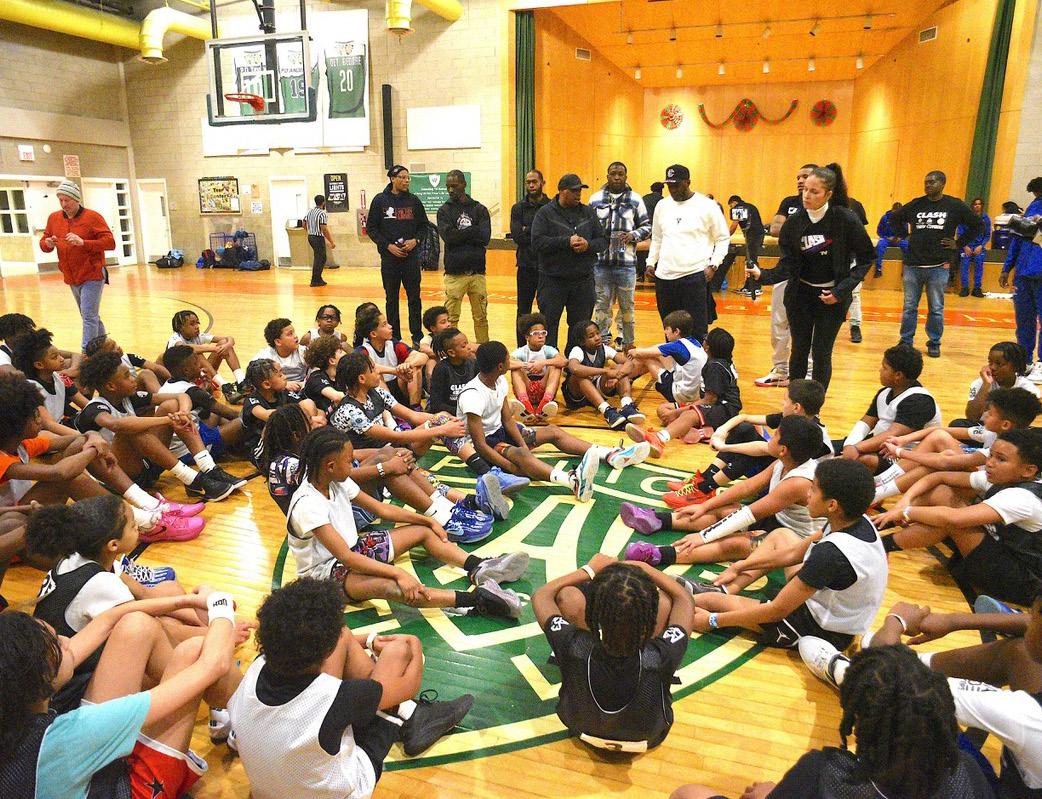
League this past weekend. (Bill Moore photo)
[and] competitive scrimmages, as well as media training,” Williams said. “The idea was a small spin-off from the CPL where we wanted to give the youth an opportunity to participate in something bigger than just games and give them a glimpse of what the next level would look like.”
Williams called the ability to return to the Harlem PAL a huge blessing and a full-circle moment: He hosted a youth clinic with former NBA and New Jersey Nets player Anthony Morrow in 2013.
“Kenny Stevens, Melquan Bolden, and I are all coaches within the grassroots,
Some of the activities that the boys participated in over the weekend included conditioning drills, defensive stance builders, footwork skills, and finishing at the rim. The participants were then matched up in scrimmage games.
high school, and college basketball landscape, and together with Clash TV, we aim to provide the young hoopers with an opportunity to take part in an NBAstyle combine, mixed with skill stations
“CPL provided a great opportunity to bring the community together,” Williams said. “The feedback from season one of the CPL has been nothing short of amazing. We currently have over 10 players who competed in CPL playing professionally overseas after the season concluded. We look to continue to be an avenue for players looking to play professionally, helping these players build brands while providing more excitement for the fans. Stay tuned for season two. Our founder, Chris ‘Gotti’ Lorenzo, has been working tirelessly on mastering this product, and we are excited for the world to see what we have in store for the CPL.”
The AmNews extends its condolences to the Lorenzo family on the passing of hiphop icon Irv “Gotti” Lorenzo, who died last week at the age 54.

By JAIME C. HARRIS
AmNews Sport Editor
For those who trekked through snow-covered streets to the Nike Track & Field Center at the Armory in Washington Heights on Sunday to take in the 117th staging of the venerable Millrose Games, they bore witness to several stirring world record performances by some of the sport’s most prominent stars.
In the Games’ signature event, the Wanamaker Mile, Yared Nuguse reclaimed the coveted indoor world record for the
United States for the first time since 1978, capturing the race in a time of 3:46:63. As the crowd urged on Nuguse, the 25-yearold native of Louisville, Kentucky, and University of Notre Dame product seemingly absorbed their energy, repelling the kick of second place finisher Hobbs Kessler, an American who clocked a scorching 3:46:90. Kessler’s time also bettered the previous world standard of 3:47:01 established by Ethiopian Yomif Kejelcha in 2019.
“It’s absolutely insane,” Nuguse, the son of Ethiopian parents who both emigrated to the U.S., said to NBC Sports after his re-

markable showing. “I haven’t had a world record yet in my career, and I always really wanted one just because I felt like, especially in the mile, I was good enough for it.”
The Armory track is considered one of the fastest in the world, and its reputation was upheld by not just Nuguse but other competitors, including American Grant Fisher, who broke the world record in the indoor 3,000-meters with a sizzling 7:22:91, less than a second ahead of the 2024 Paris Olympics 1,500-meter gold medalist Cole Hocker. Fisher, a Canadian and Stanford Univer-
sity alumnus, took home bronze medals in the 5,000- and 10,000-meter races in Paris last summer, and needed every meter near the end of the Millrose 3,000 to hold off a furious closing effort by the American Hocker. Sprinter Masia Russell continued to affirm her standing as the best women’s 60-meter and 100-meter hurdler on the planet, running a time of 7.76 seconds, the fastest by any women in 2025. The NCAA record holder in 100-meter hurdles (12.36), set in 2023 while attending the University of Kentucky, earned a gold medal in 100-meter hurdles at the Paris Olympics.
By JAIME C. HARRIS
AmNews Sports Editor
The Knicks have a lot more work to do. Their lineup needs more depth, confinement, and consistent production from the bench.
Perhaps Tuesday’s 128-115 road win over the Indiana Pacers foreshadowed what’s to come following the All-Star break, which began for the Knicks last night after they hosted the Atlanta Hawks at Madison Square Garden. They went into the matchup 34-18, the No. 3 seed in the Eastern Conference, and holding the fourth best record overall in the NBA.
On an evening when the team’s leading scorer, Jalen Brunson, who went into last night averaging 25.9 points, shot just 4-11 for a season low eight points versus the Pacers, the Knicks leaned on Brunson’s fellow All-Star, center Karl-Anthony Towns, and do-it-all guard/forward Josh Hart to mitigate the point guard’s rare subpar performance. But most encouraging for head coach Tom Thibodeau’s squad were the contributions from the reserves.
“I thought our bench came in and gave us a big lift,” he said after the win via the MSG Network. “I loved the way Cam [Payne] and Deuce [McBride] and Landry [Shamet] played. And KAT [Towns] had a monster game and then of course what Josh did was what we needed to win; so he was everywhere flying around doing everything. So, good team win, good bounce back, and then they keep coming. We gotta be ready for Atlanta tomorrow.”
After an exasperating outing on Saturday

Knicks guard/forward Josh Hart has been a key member of a squad that begins the All-Star break in third place overall in the Eastern Conference. (AP Photo/Noah K. Murray)
at the Garden in which he shot 3-8, totaling only nine points in a disappointing 131-104 blowout loss to the Boston Celtics, Towns was dominant on Tuesday, posting 40 points and 12 rebounds, both game-highs. Hart added a resounding 30 points and 10 rebounds.
Yet it was the combined 68 minutes, 35 points, and 15 assists from Payne (eight assists), McBride (15 points) and Shamet (11 points) that was most gratifying for a team which, looking up at the East’s top two seeds in the Cleveland Cavaliers and Celtics, have demonstrably better bench-
es. Forward Precious Achiuwa, who along with guard McBride are the Knicks’ primary reserves, has been in the starting lineup replacing forward OG Anunoby since he strained his right foot versus the Los Angeles Lakers at the Garden on Feb. 1.
OG is expected back immediately after the All-Star break when the Knicks play the Bulls at MSG next Thursday. More notable is the impending return of center Mitchell Robinson, whose presence on defense and on the boards could dramatically alter the Knicks’ makeup. Robinson has been out
since undergoing left ankle surgery last May during the Knicks’ playoff run. Prior to having surgery on the same ankle in December 2023, which sidelined for over three months, the 7-footer was the NBA’s best offensive rebounder and on course to be named to the league’s All-Defensive team. The timeline for Robinson’s season debut is early March.
“It is very frustrating,” the 26-year-Robinson said on Tuesday speaking with reporters. “Not getting out there to be able to do what you love to do for a living. It’s been hard.”
By DERREL JOHNSON Special to the AmNews
The Nets began their All-Star break last night after facing the Philadelphia 76ers at the Barclays Center in Brooklyn. The two teams are a far cry from being at the top of the NBA standings. The Cavaliers hold the best record in the Eastern Conference and second best overall in the league, only behind the Oklahoma City Thunder which was 43-9 before playing the Miami Heat at home.
The Nets? They were 19-34 and 12th in the 15-team Eastern Conference before AmNews press time. After somewhat surprisingly not making any trades last week before Thursday’s NBA trade deadline but agreeing to a contract buyout with guardforward Ben Simmons, the Nets’ priority is now developing their young players and determining if any are cornerstones of their future roster.

When they acquired Simmons in February 2022 from the Philadelphia 76ers in the James Harden deal, they viewed Simmons as a crucial piece to a potential championship contender. Instead, he was a disappointment, playing in just 90 games for Brooklyn due to various injuries.
The Nets have already exceeded this season’s win total projection of 18.5 games established by various sports gaming companies, moving over it with a 97-89 win over the Charlotte Hornets at the Barclays on Monday night.
“I told them 19, so don’t tell them that I lied to them because I don’t do 18 and a half. I rounded up to 19,” Nets first-year head coach Jordi Fernadez joked during his postgame press conference.
“You got to find ways to be competitive … we’re at 19 right now. But the point is just to keep going and keep playing the right way. When the odds are against you, try to be a competitor and respond. I think the guys have done a great job. We have (28) games left so we got to keep getting better, got to keep building what we want to build here and credit to these guys because they show up every day with a positive attitude and they work.”
Fernandez added that despite his team being three games out of the tenth and final play-in berth, it is not impacting their approach.
“What we care about here is about the next game and if we’re accomplishing certain things about our development,” he said. “I want the guys to be competitive. We are all competitive here and finding ways to be competitive is important.”
Although the Nets do not have a player on the All-Star rosters, forward Cam Johnson will participate in the three-point shooting contest against seven others, including Knicks guard Jalen Brunson and two-time defending contest winner Damian Lillard, star guard for the Milwaukee Bucks.
By LOIS ELFMAN Special to the AmNews

It’s beginning to look a lot like UConn. As Tina Charles posed with Connecticut Sun general manager Morgan Tuck and team president Jennifer Rizzotti, the three alumnae of the University of Connecticut proudly represented women’s basketball. At present, there is one other UConn alum on the roster, Olivia Nelson-Ododa, but that could easily change between now and the opening of training camp because this is the year of change in the WNBA.
A team that hasn’t seen a lot of change as of yet is the New York Liberty. The notable exceptions are Kayla Thornton, selected by the Golden State Valkyries in the expansion draft, and Courtney Vandersloot, who is returning to the Chicago Sky.
If things weren’t hectic enough in women’s pro hoops, last week a new name entered the landscape. The UPSHOT League, which describes itself as “a mission-driven movement centered on opportunity,” announced its arrival on the scene. Helmed by former WNBA president Donna Orender, UPSHOT is set to launch and play with an initial four teams in May 2026. League organizers describe it as a “developmental league,”
but playing at the same time as the preeminent women’s basketball league will present some challenges.
OK, back to Charles. The Christ the King graduate is not spending this WNBA off-season in the U.S. playing with either Athletes Unlimited or Unrivaled. Instead, she is going the traditional route, taking her talents overseas, playing with Fenerbahçe in Turkey. Connecticut Sun management traveled to Istanbul to discuss Charles’ return to the team that picked her first in the 2010 WNBA Draft and with which she won Rookie of the Year and WNBA MVP (2012).
“I have a passion for this game,” said Charles. “I have a passion for this state. I have passion for this organization, a team that believed in me first, and to be around towards the end [of my career], it doesn’t get any better than that.”
Charles originally played with the Sun from 2010–13, leaving to join the Liberty in 2014. After sitting out the 2020 bubble season, she’s played with several teams, putting up outstanding numbers with the Atlanta Dream in 2024, averaging just shy of a double-double.
“I’m just looking forward to helping this new leadership (new head coach Rachid Meziane), this new team into what’s next,” said Charles. “They’re going into a new chapter.”

By LOIS ELFMAN Special to the AmNews
At 32, Bria Hartley says there is still much pro basketball left in her. After two ACL tears, the last in July 2022, took her away for a while, she is doing her utmost to show she is once again WNBA ready. The Long Island native is currently in Nashville honing her moves with Athletes Unlimited (AU).
“Getting back with a team was kind of rough, especially off of a second ACL,” said Hartley, a first-round pick in 2014 WNBA Draft after two NCAA Championships with University of Connecticut.
“Last year, I was in camp with the Las Vegas Aces and ended up getting cut, but I played overseas last year … Getting on a team in the W has been the goal ever since I got injured.”
Her love of basketball remains strong, and she wants to continue her professional career. She enjoyed her time overseas and hopes to feel that rush in the WNBA.
“Anytime you go through adversity in life, you have what motivates you,” said Hartley, who played with the New York Liberty from 2017–19. “Obviously, being an example for my son. When you have a goal and a dream in your heart, you go after it.”
Hartley’s son, Bryson, 8, is not with her in Nashville, but she’s looking forward to having him along this summer. He likes basketball, but his sport of choice is currently soccer. She envisions him on the hardwood in due time. “He has some size; he’s super athletic,” she said. “I was a three-sport athlete; soccer was my first sport. I’m a big advocate for kids playing multiple sports.”
The basketball community continues to fuel Hartley. She enjoys being part of a team, and she still loves competing. Even the grind, the day-to-day process of being a professional athlete is inspiring, especially after an injury.
“I’m all about having a growth mindset — growing as a player, dealing with adversity, learning to be dedicated to something, being disciplined — all those values come out for me with basketball, especially the older I get,” said Hartley. “It taught me a lot of valuable lessons about life and it’s helped me become a better person.”
AU is providing the opportunity to play in the U.S. and compete against other WNBA players, past and present, which elevates her game. The league has a unique format in which players amass individual points. After three games, Hartley is in fifth place on the leaderboard.

By JAIME C. HARRIS
AmNews Sports Editor
Philadelphia Eagles quarterback Jalen Hurts beamed on the podium erected on the field at Caesars Superdome in New Orleans, Louisiana, on Sunday night after a superlative performance in Super Bowl LIX (59). Surrounded by a sea of bodies that included his teammates, Hurts helped the Eagles engineer one of the most commanding victories in the game’s history, pulverizing the two-time defending Super Bowl champion Kansas City Chiefs 40-22. The final score did not reflect the Eagles’ superiority on the evening. The outcome was far more one-sided.
The 26-year-old was named the game’s most valuable player after passing for 221 yards with two touchdowns and running for 72 and one TD, breaking his own Super Bowl record of most rushing yards by a quarterback. That was the 70 he gained two years ago in an emotionally weary 38-35 Eagles loss to the Chiefs. Sunday’s victory was a culmination of

Hurts’ and the Eagles’ resolve and singular purpose.
“It’s been a fun ride,” he said in relishing the lofty achievement.
“I’ve embraced every step. I took great pride in never backing down from a challenge — always turning my negatives into positives, turning
Philadelphia Eagles quarterback Jalen Hurts (left) was named MVP of Super Bowl LIX after 40-22 win over Kansas City Chiefs. (AP Photo/Matt Slocum)
my weaknesses and making them my strengths. It’s taken a great effort to evolve my game over time and just continue to grow and improve.”
Eagles head coach Nick Siriani affirmed Hurts’s view of his journey. “He knows how to win. He does a great job of being able to
block out all the outside noise,”
Siriani said in addressing Hurts’s critics. “I find it funny when [people say], ‘Well, Jalen is good because he’s got a good team around him.’ That’s football: You cannot be great without the greatness of others.”
Indeed, the Eagles’ win epitomizes collectiveness. Their defense victimized three-time Chiefs Super Bowl MVP Patrick Mahomes, sacking him six times — the most in his professional career — and pressuring him 16 and rendering the supremely talented quarterback helpless.
The game held palpable symbolism. The backdrop of President Donald Trump’s repressive ideology, underscored by thunderous hostility toward diversity, equity, inclusion, and accessibility, was incandescent. Viral social media videos of Trump being loudly heckled by spectators in the stands as he walked onto the field during pregame warmups was representative of the ethnic and cultural polarization he has spawned and spread like a highly
contagious infectious disease.
While Trump and his diabolical acolytes wage a relentless attack against economic and social progress for the masses, transactionally strong-arming some of the country’s most powerful CEOs and corporations to renounce their DEIA initiatives, NFL Commissioner Roger Goodell assured that the league remains committed to moving forward.
“We got into diversity efforts because we felt it was the right thing for the National Football League, and we’re going to continue those efforts because we’ve not only convinced ourselves, I think we’ve proven to ourselves that it does make the NFL better,” Goodell said at a press conference on the Monday prior to the Super Bowl. The NFL still has much work to do in that area. There are no Black majority owners and only five Black head coaches (six if including Miami Dolphins’ Mike McDaniel, who is biracial). That’s just 18.25% of the league’s 32 franchises. Actions and immutable outcomes must match verbal guarantees.
By LOIS ELFMAN
Special
to the AmNews
A fixture in the Harlem community since 1997, the world will now get a closer look at Figure Skating in Harlem (FSH) thanks to the docuseries “Harlem Ice,” which debuted on Disney+ on Feb. 12. Filmed in 2023, the five episodes give viewers a look into the program and the lives of some of its participants.
“When [producers] told me about [FSH], on the surface it sounded like an after school dance program I grew up doing,” said the series’ director, Samantha Knowles, who is African American. “One big difference is that this was specifically created for girls of color. I grew up in a mostly white community in upstate New York, and I never had anything like that, so I was excited to immerse myself in this world.”
Buzzwords like leadership and

sisterhood became incredibly real for Knowles as she observed FSH and began filming. “They had such an energy to them, and that is everything that’s in the series—it’s so genuine,” she said.
About 1,200 people got an advance look at the docuseries on Feb. 5 when they attended a private preview at the Apollo Theater. After watching episodes four and five, there was a panel discus-
The Figure Skating in Harlem program is exposed to a global audience in the Disney+ docuseries
“Harlem Ice.” (Disney/ Stephanie Keith photos)
sion with producer Alisa Payne, Knowles, moderator Kate McNab from Teen Vogue, sisters Tori and Ashley from the series, and FSH alumna and creative director Ila Epperson. FSH founder and CEO Sharon Cohen described the premiere as “pure joy” as FSH participants and their families watched their stories beautifully depicted. Knowles was nervous before the screening. “They let me into their
world to film them, and now I’m showing this entire community a reflection of themselves, and that’s a huge responsibility,” said Knowles, who was moved and elated by the cheering.
The five episodes follow the program in general and four specific girls — Tori, Ashley, Ariyana, and Adrianna — as they practice, compete, travel, rehearse for FSH’s annual show, perform, and go to school. It also covers a remarkable 2023 trip to South Africa.
Knowles said the series could have told even more stories given the time, and she is open to filming a season two. Right now, she’s eager for the world to get a glimpse into this incredible sisterhood.
“They’re so poised, I learn from them, but they’re also still very much kids. That balance is really important,” said Knowles. “Black joy can be the center of a story.”

